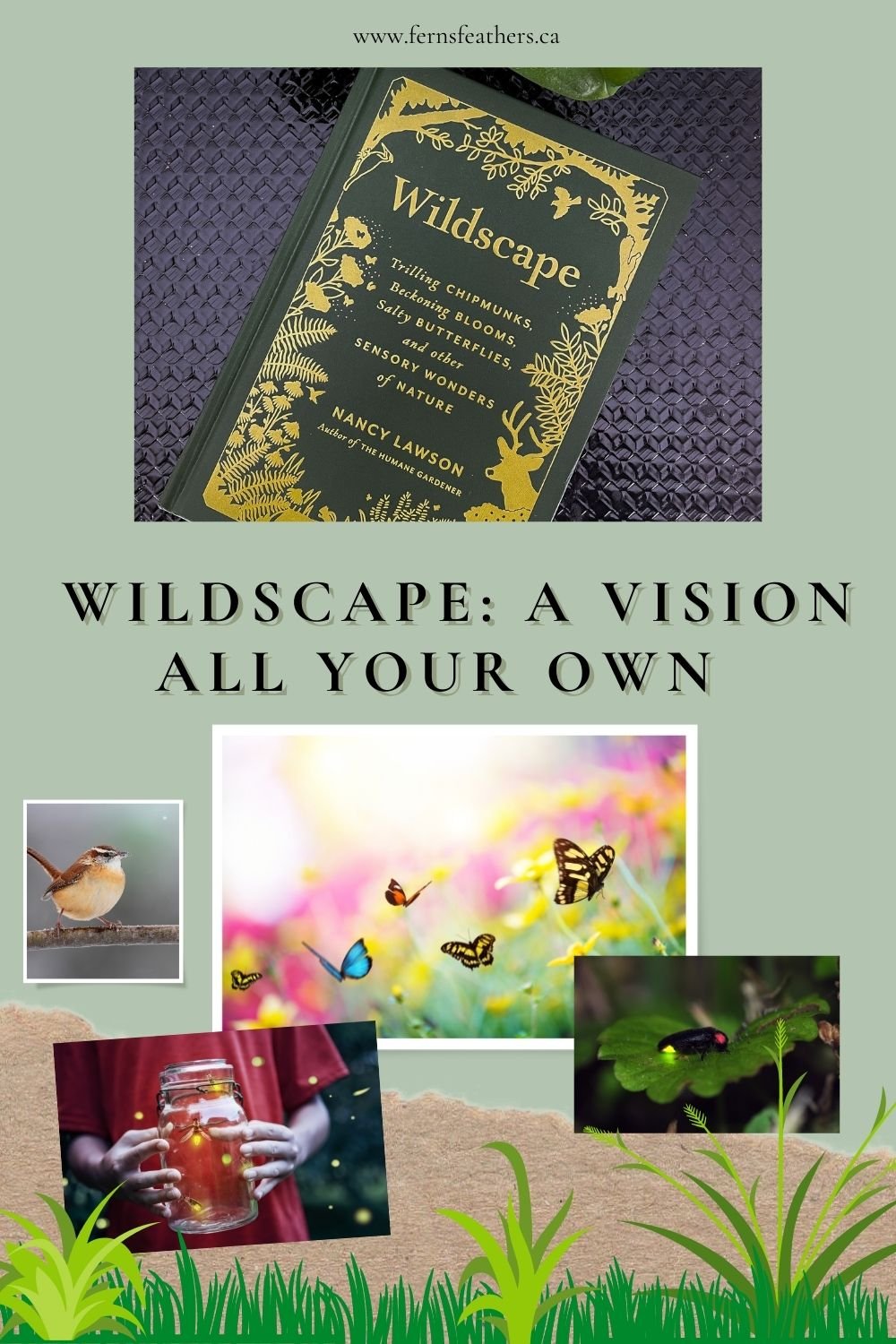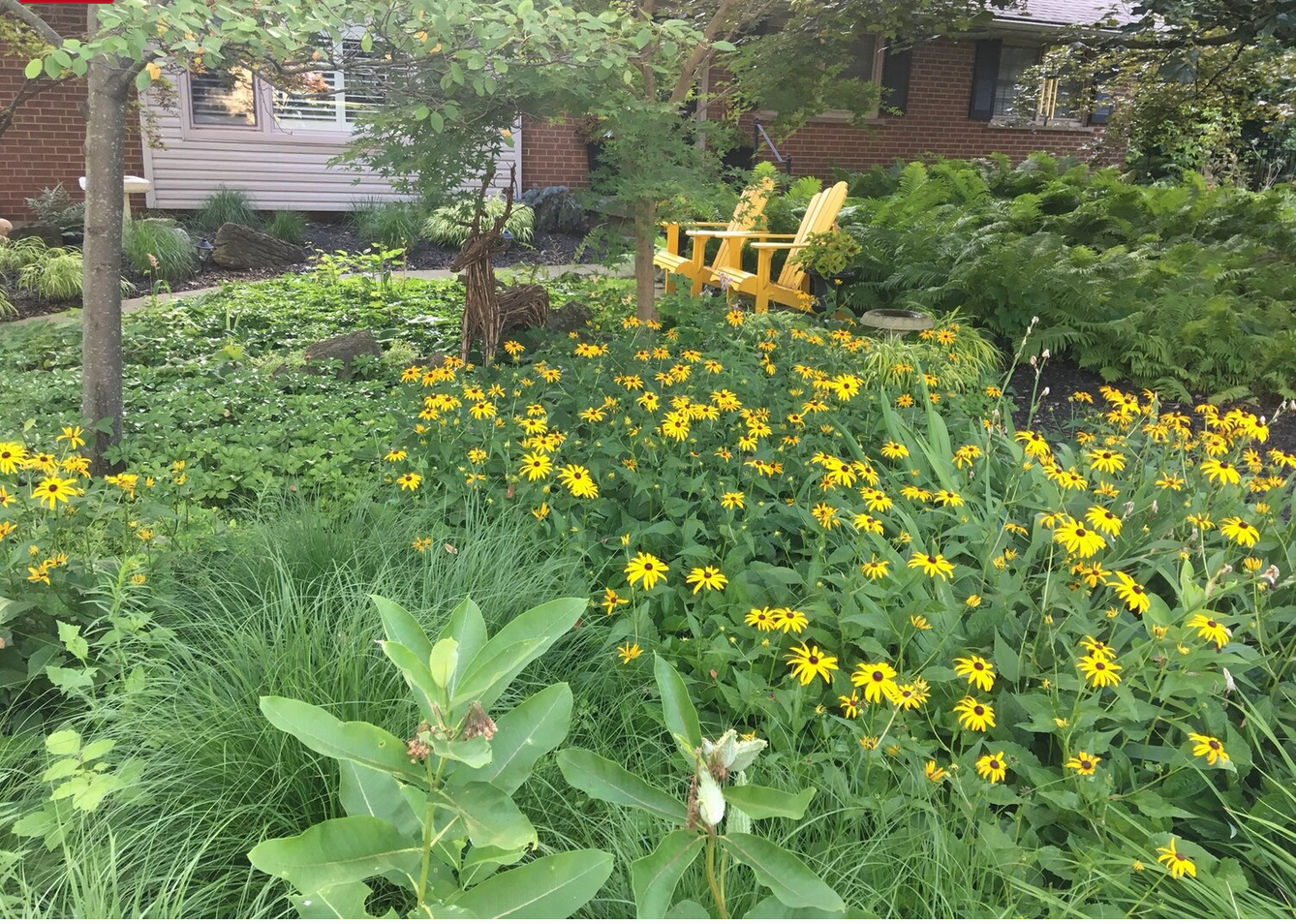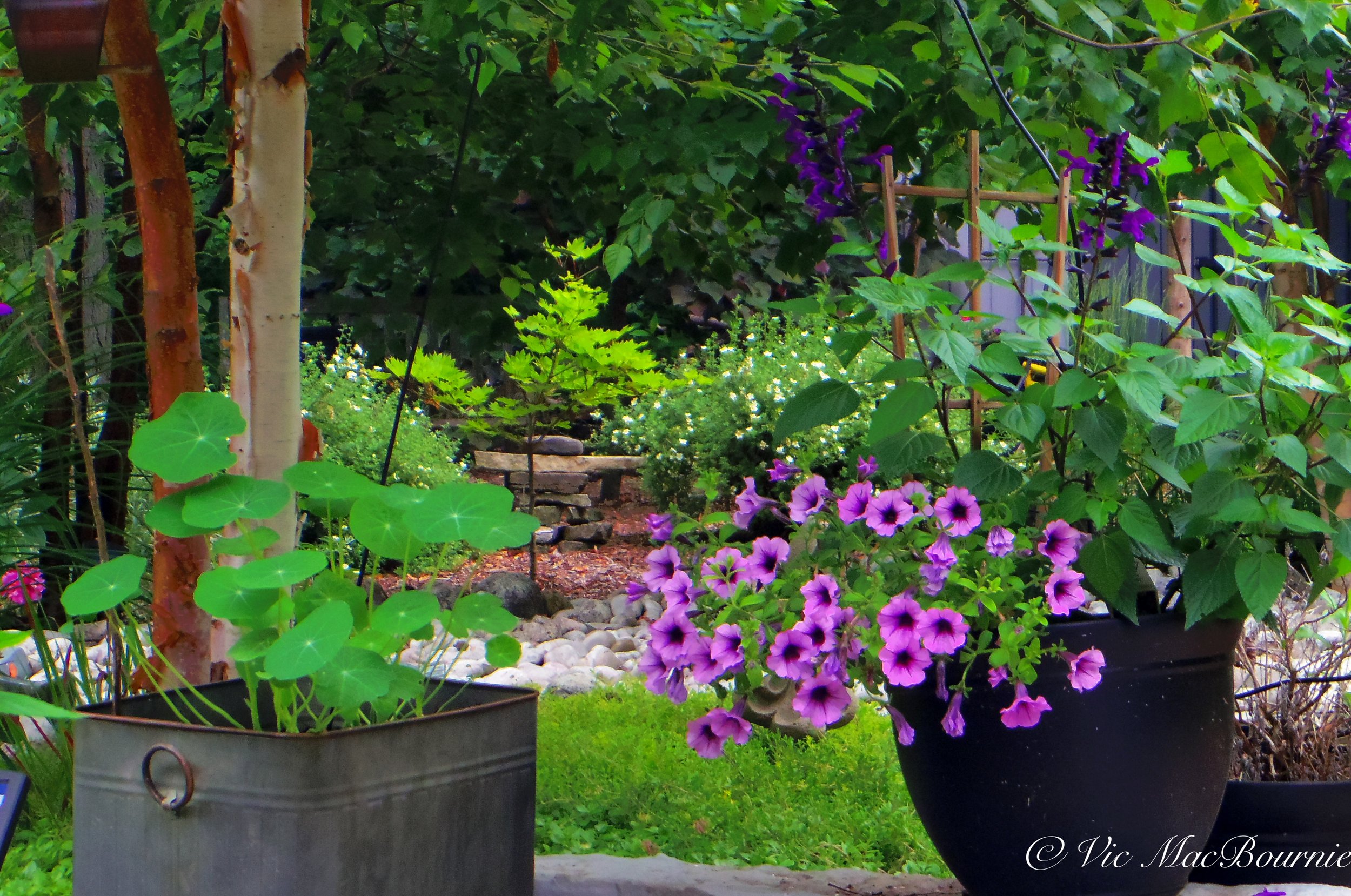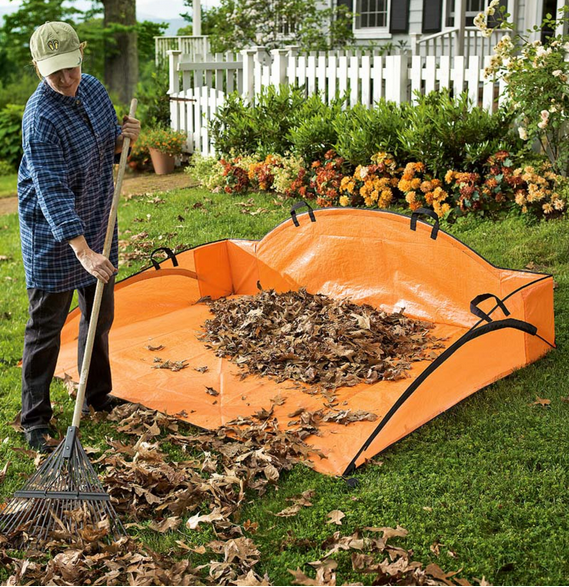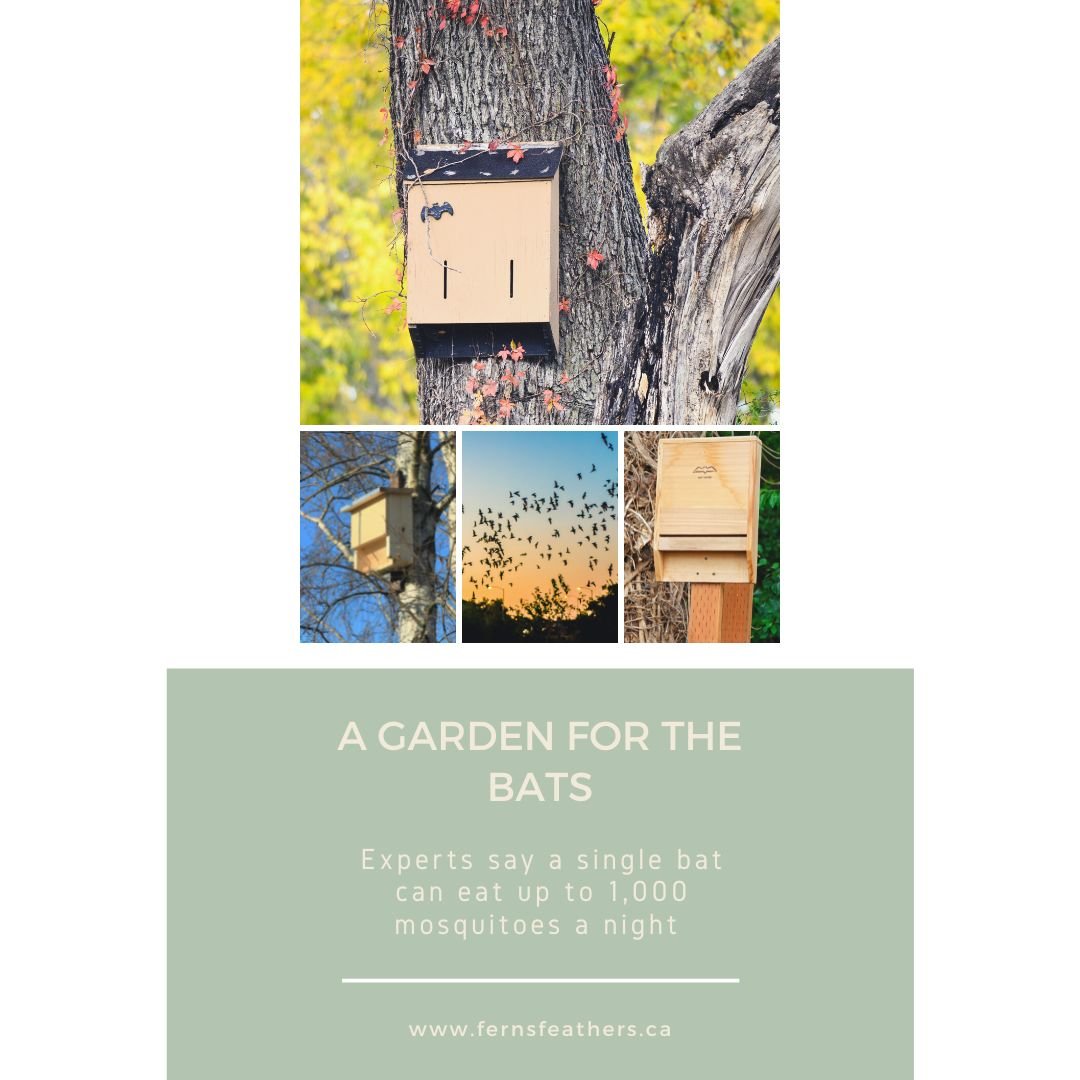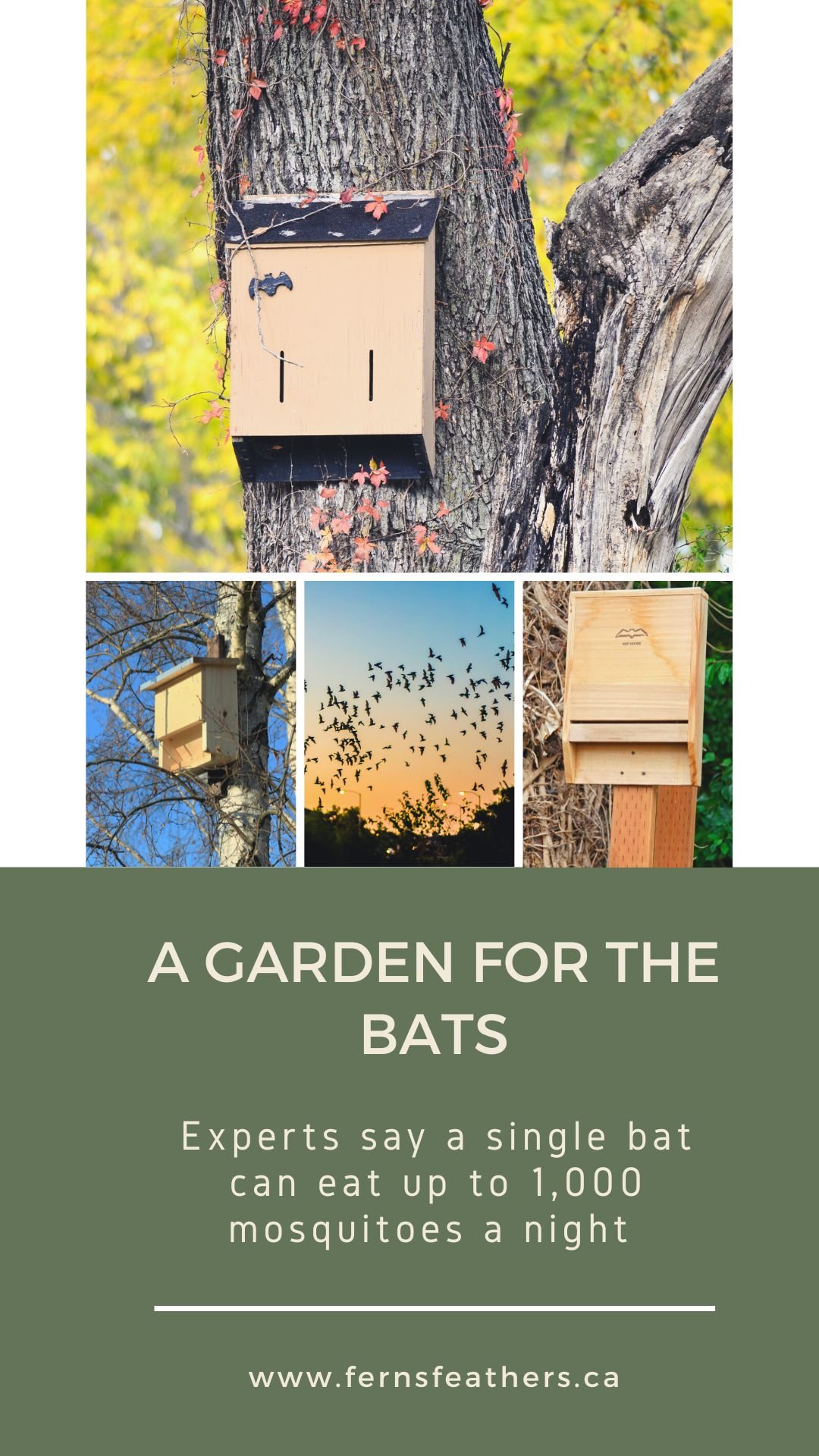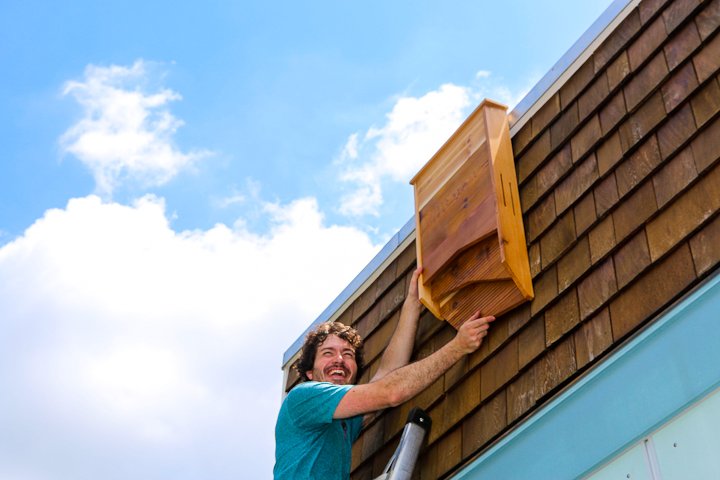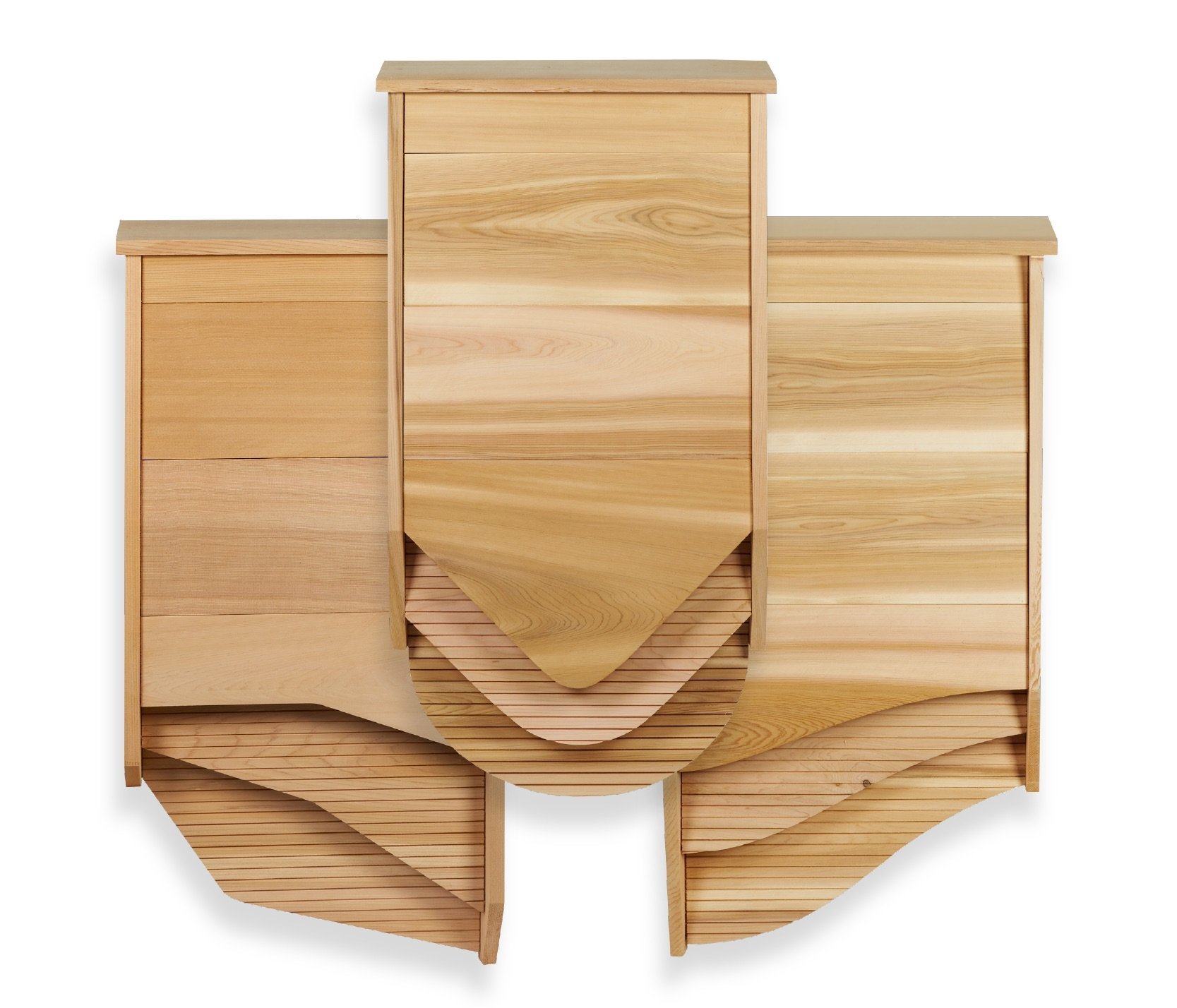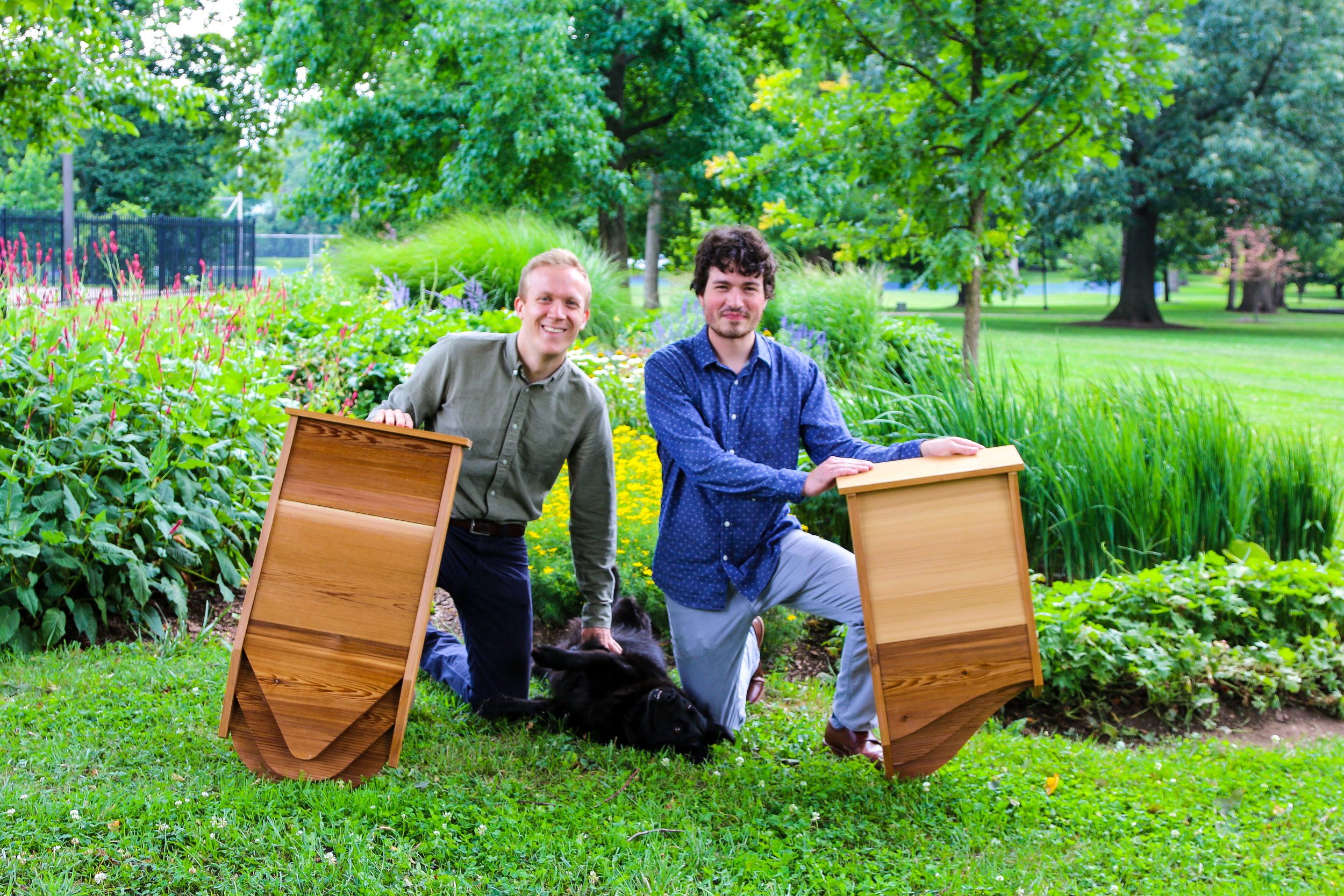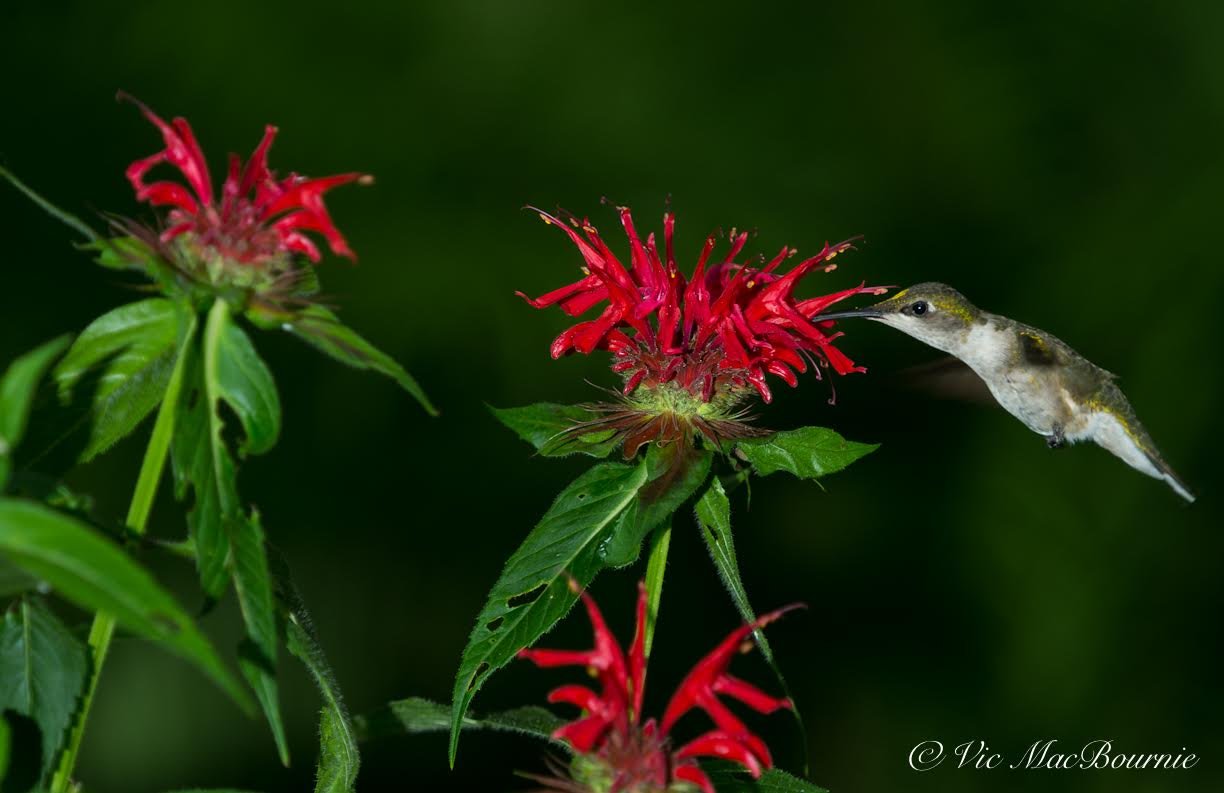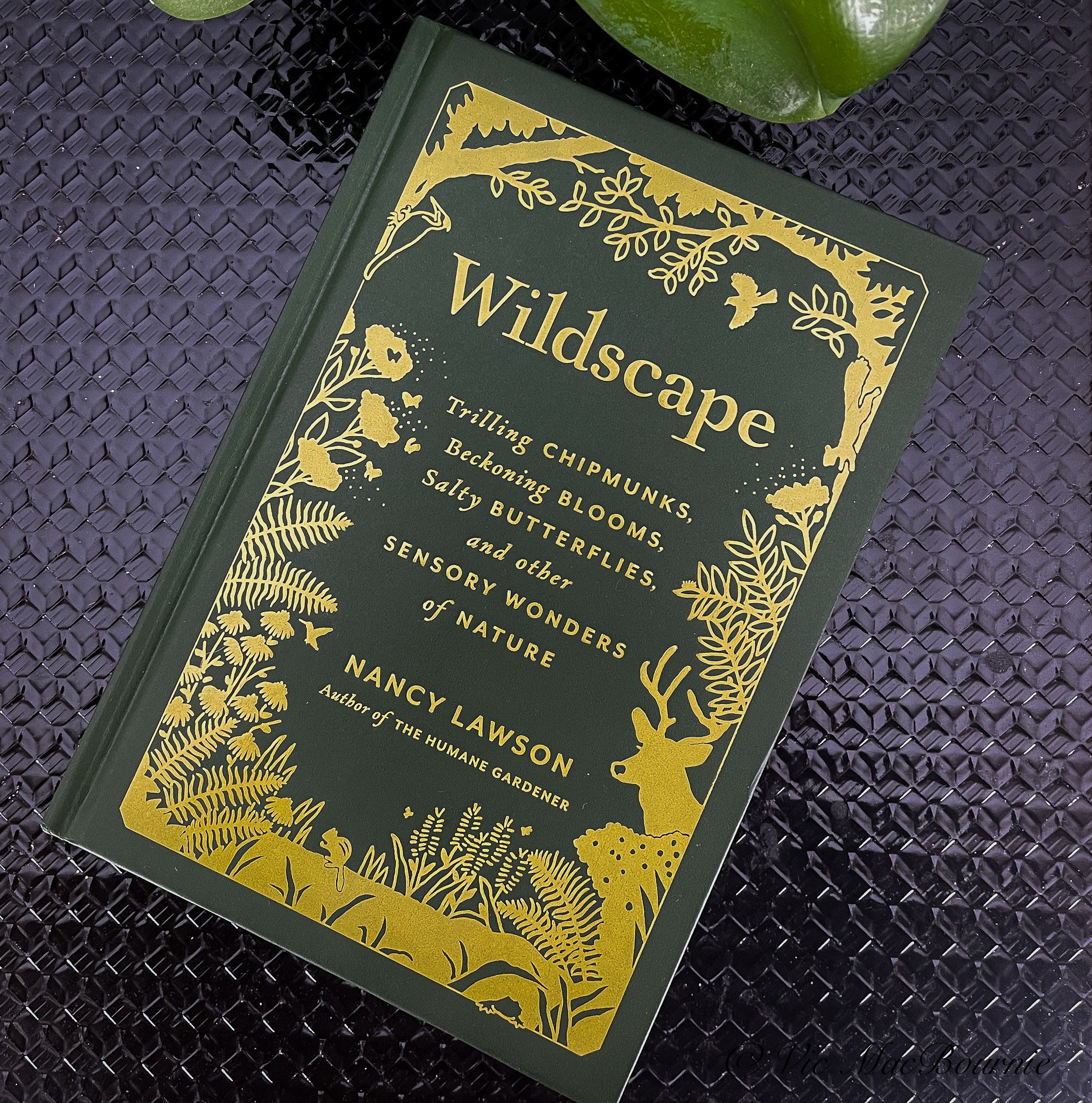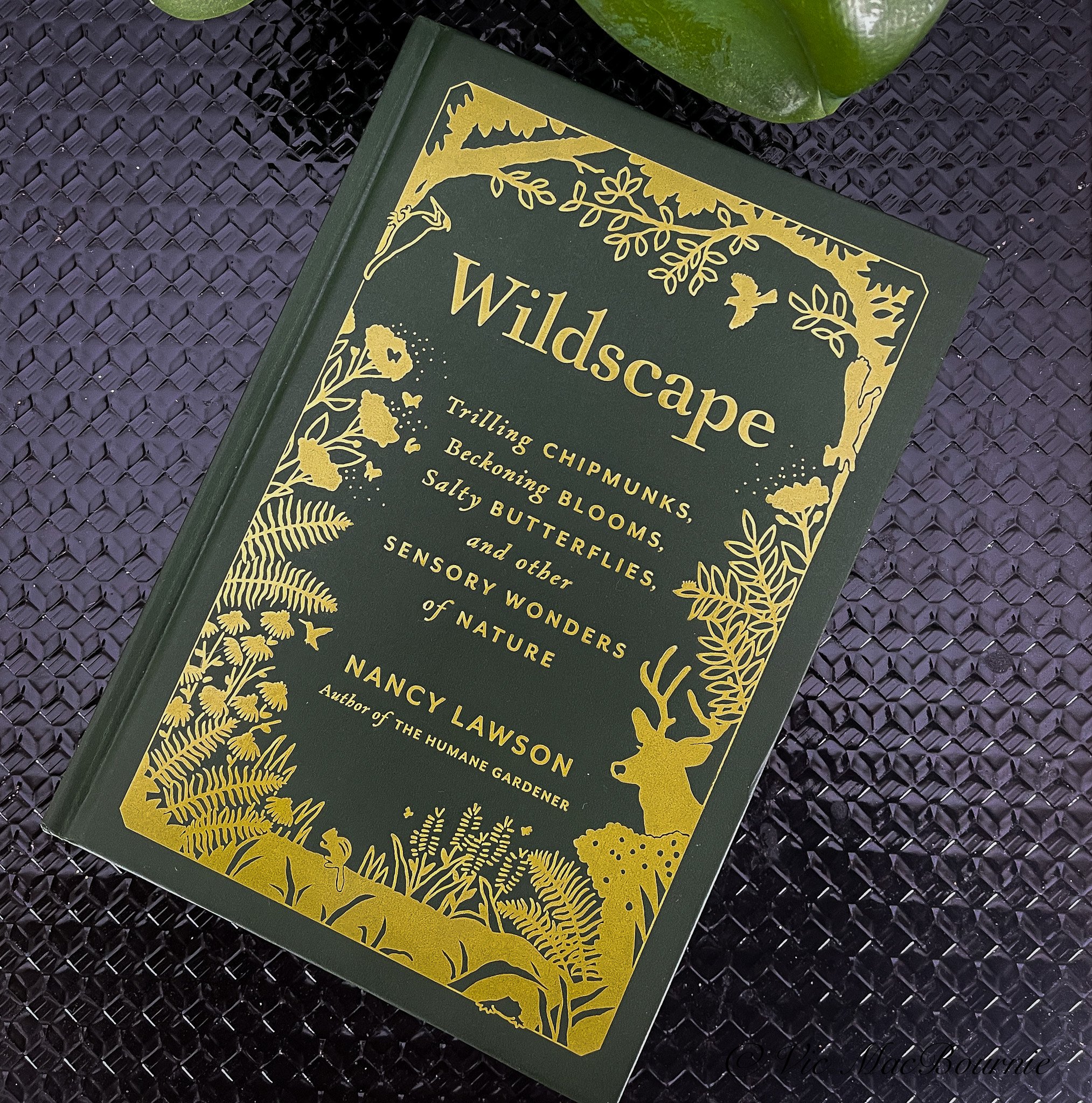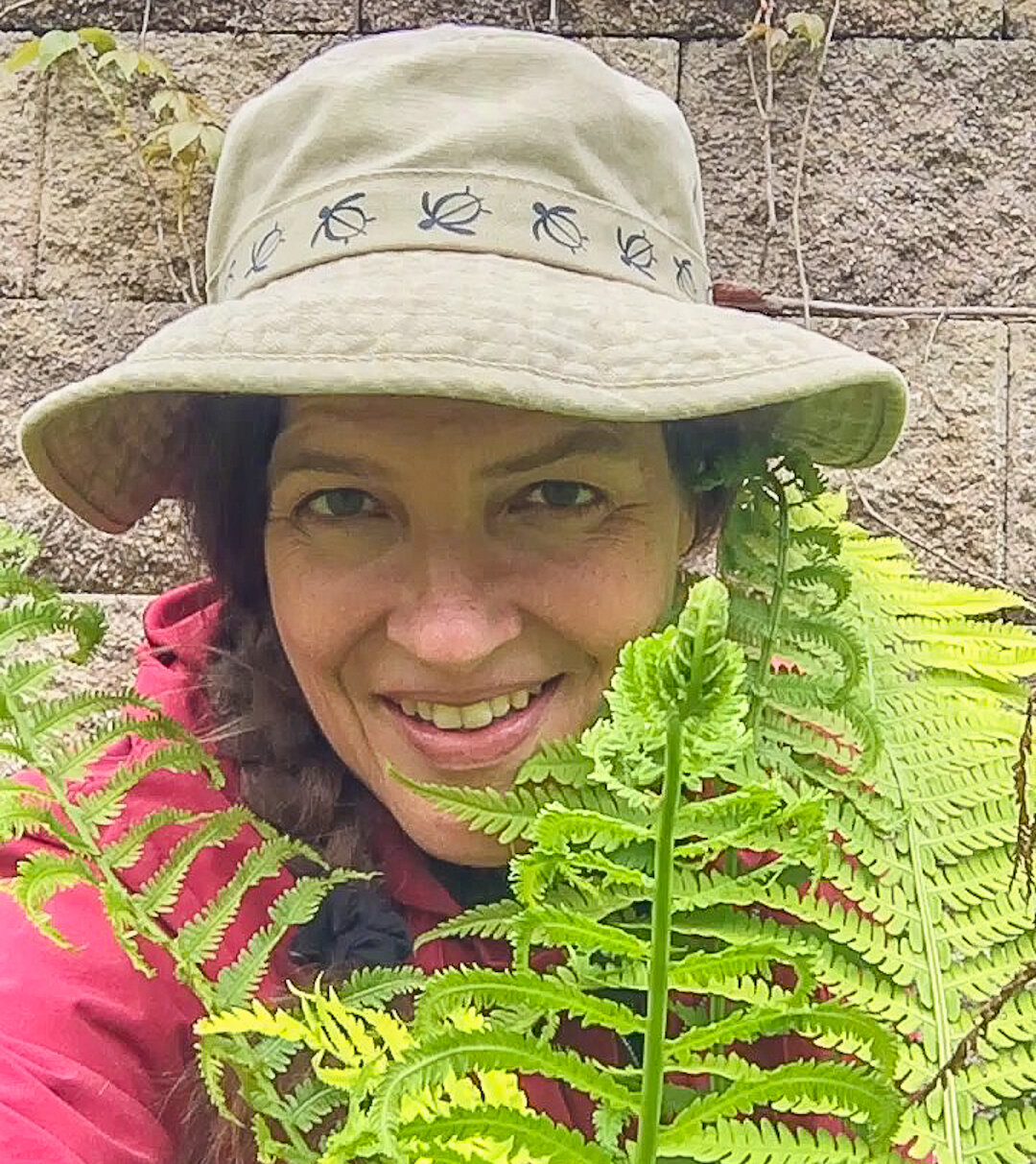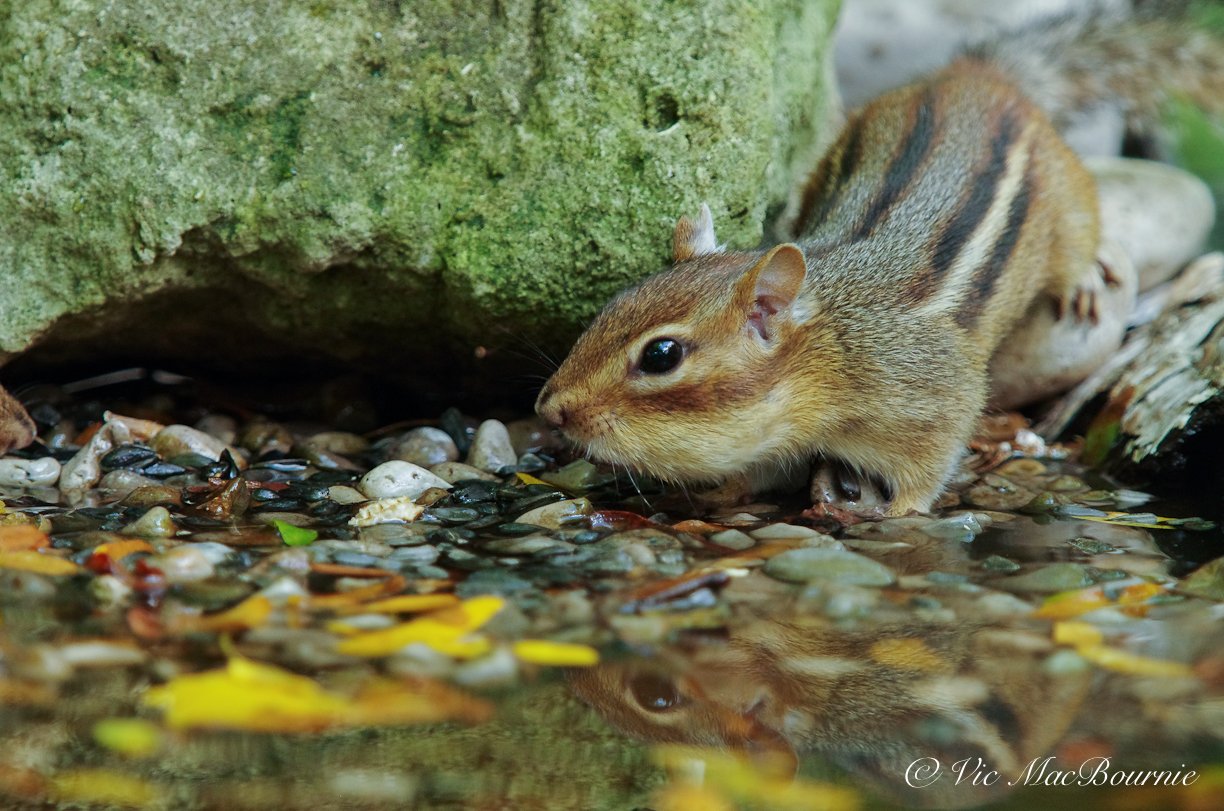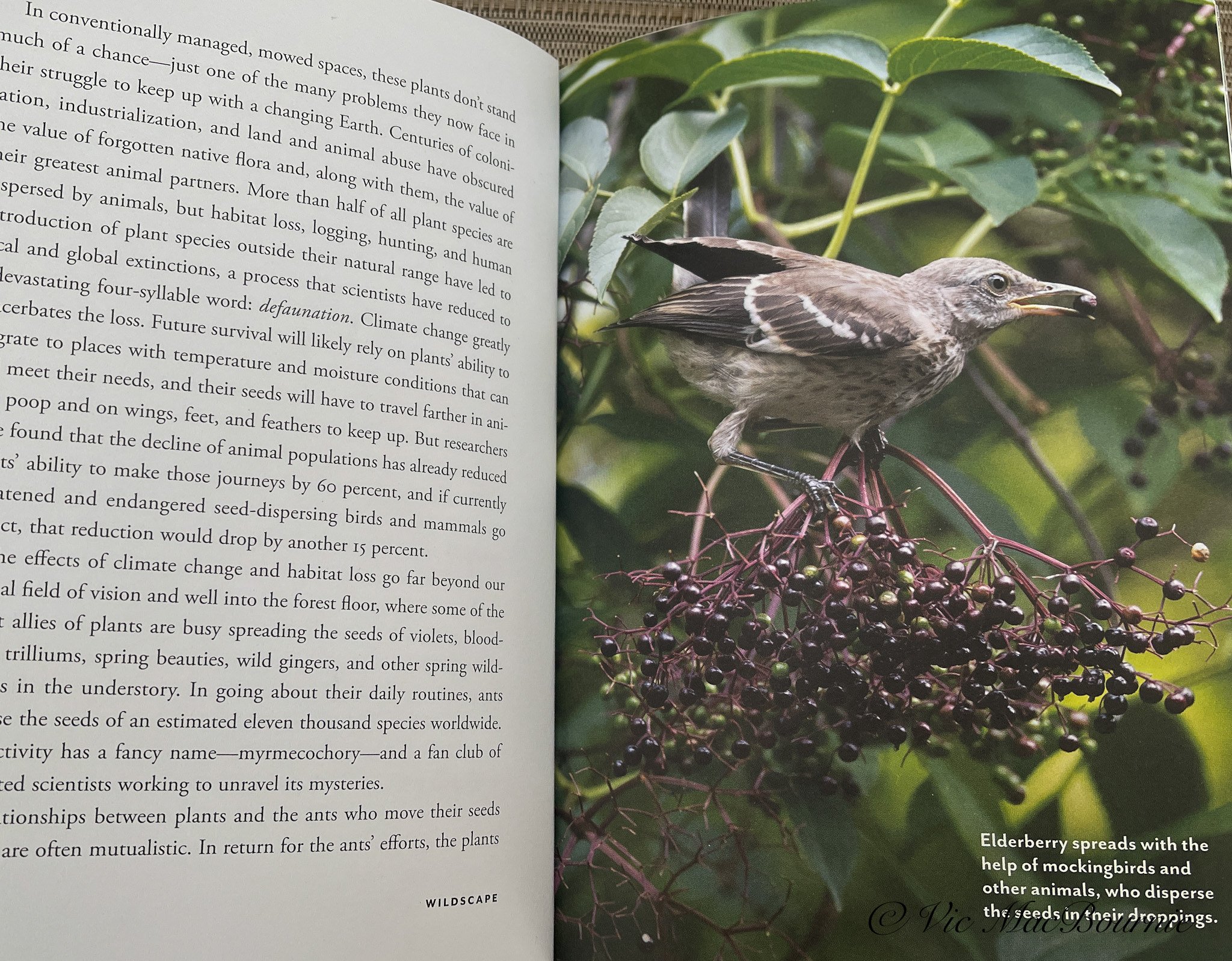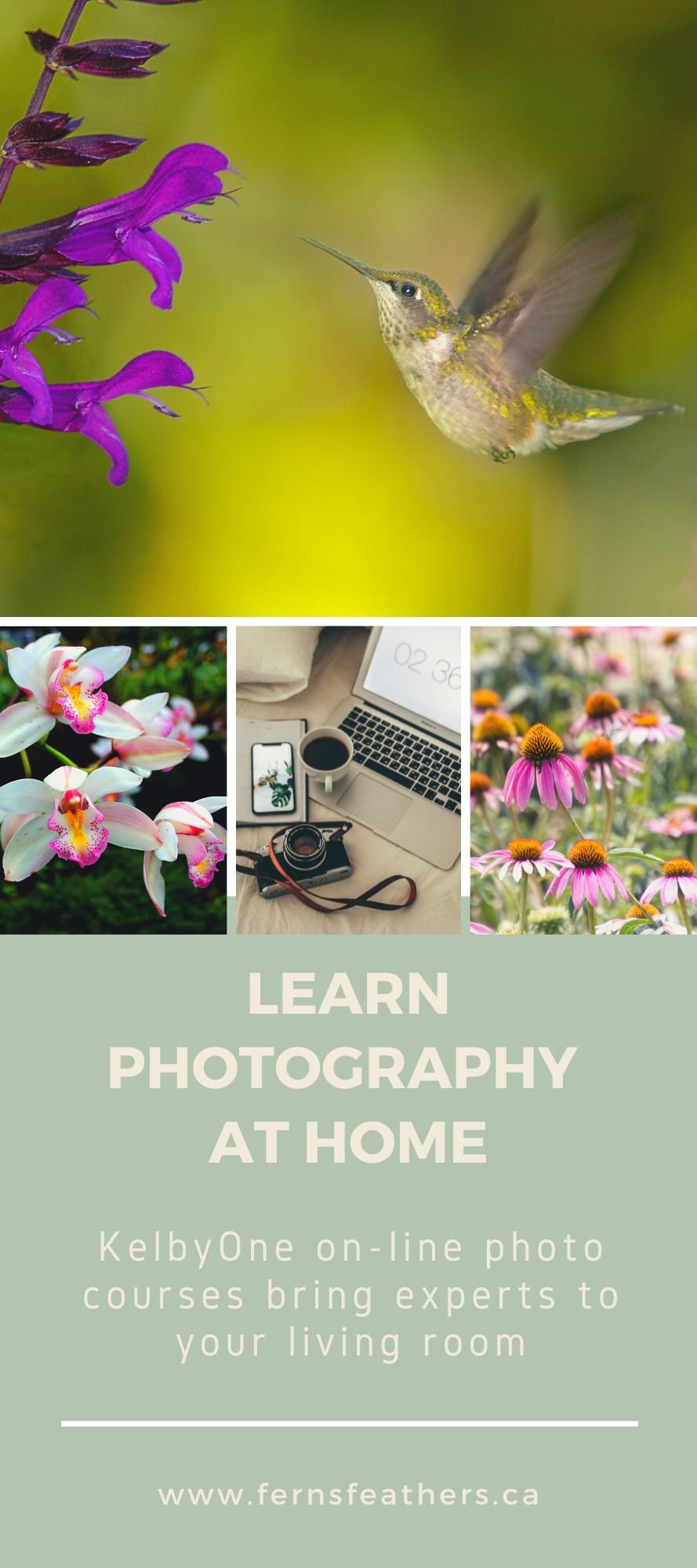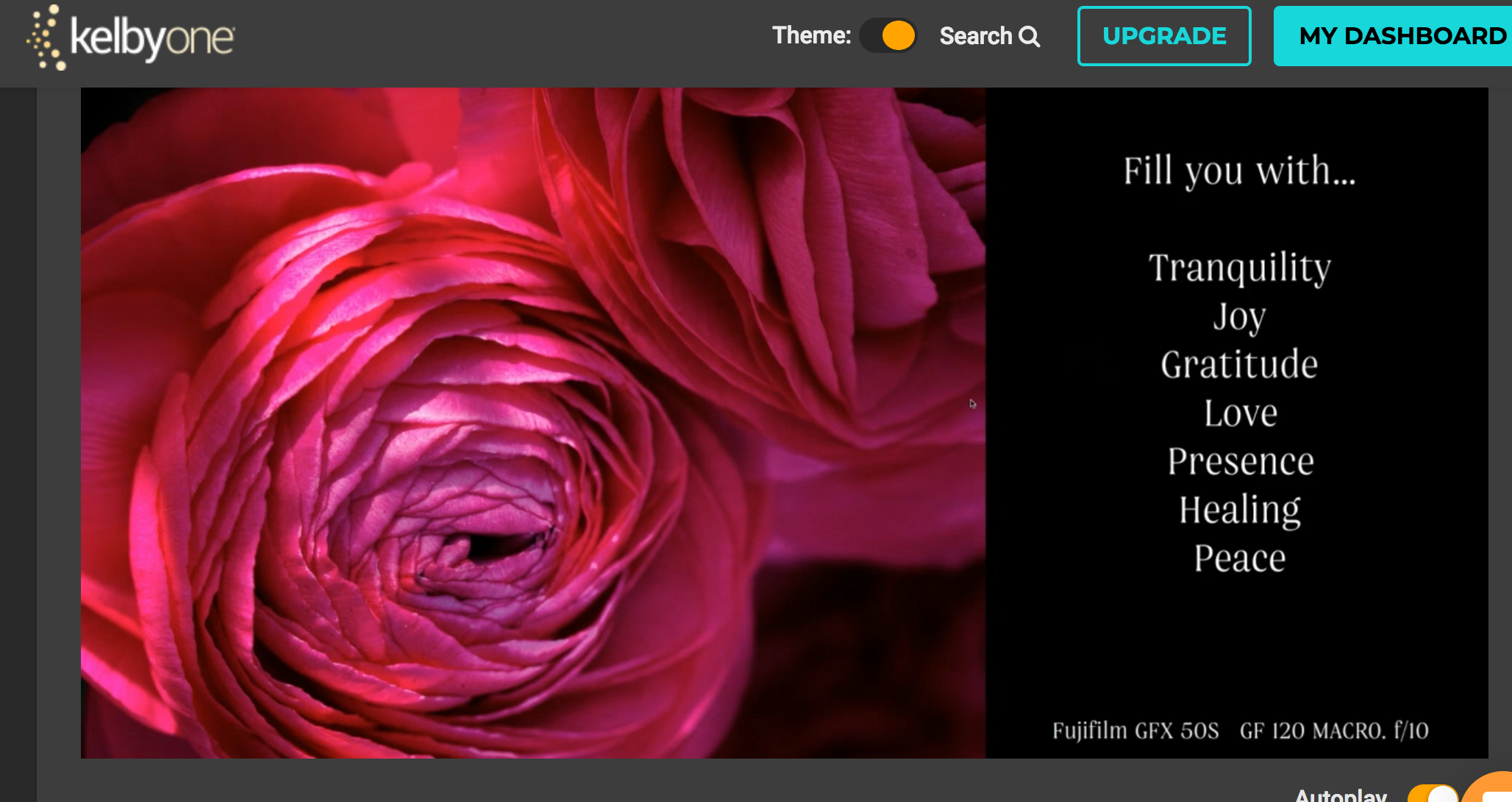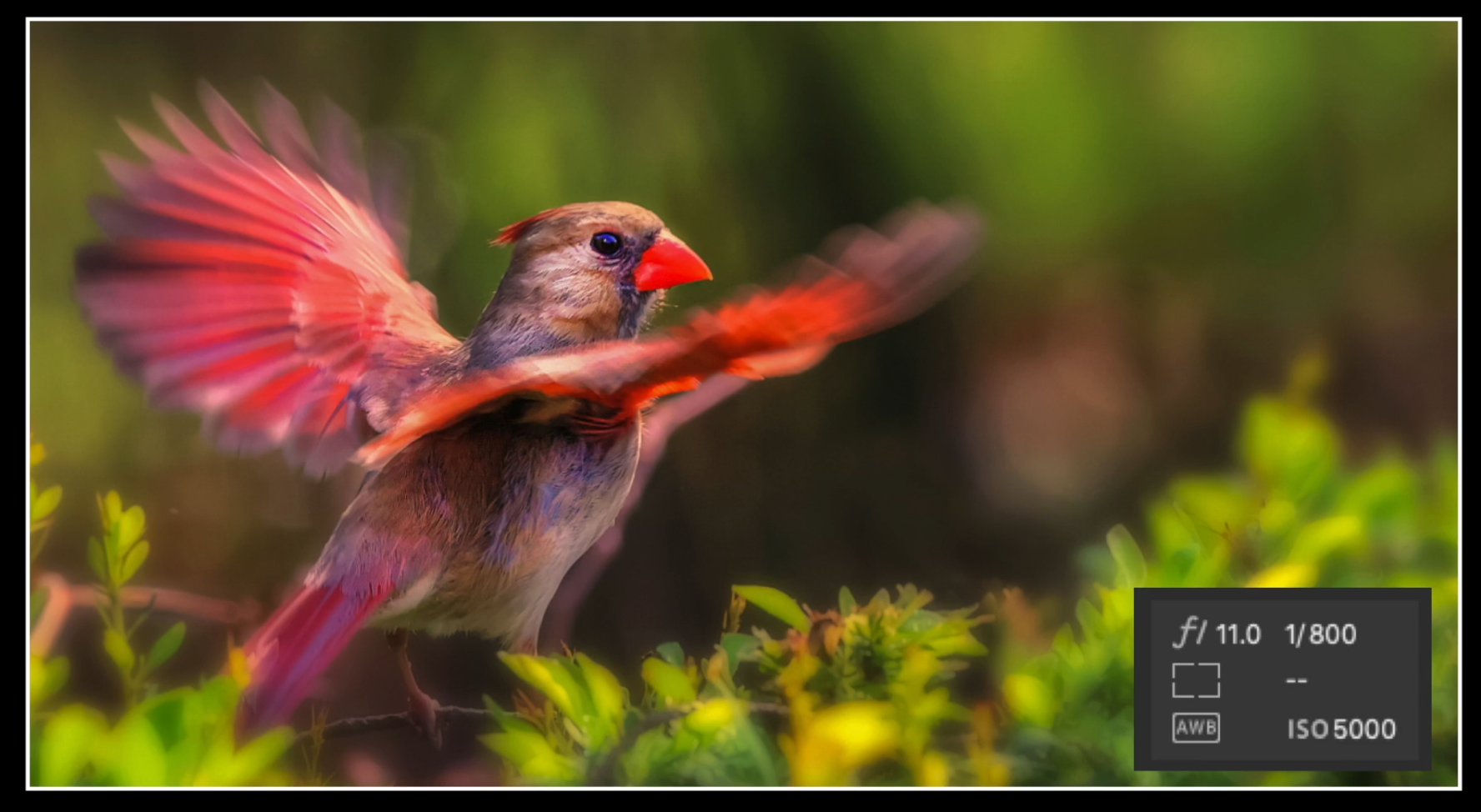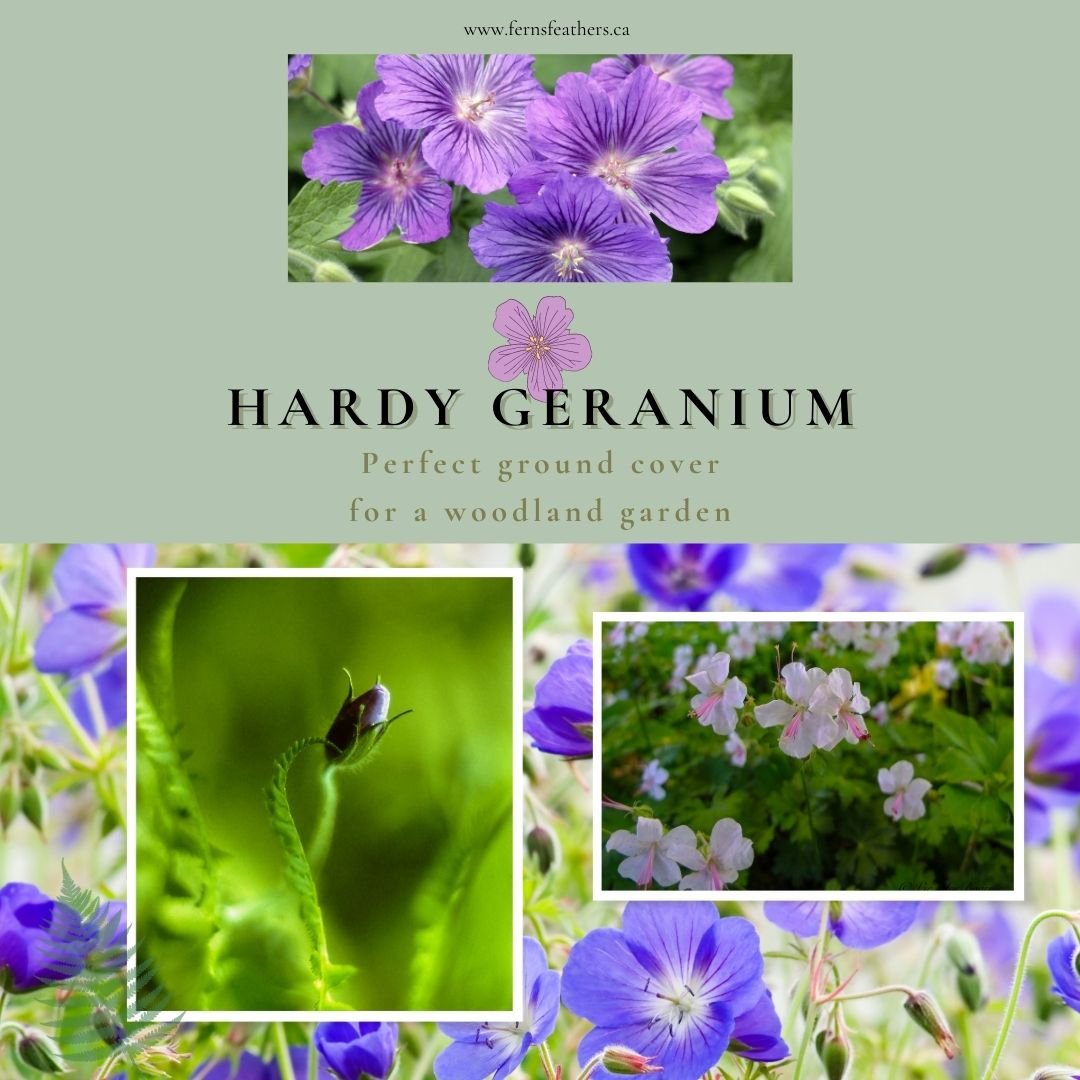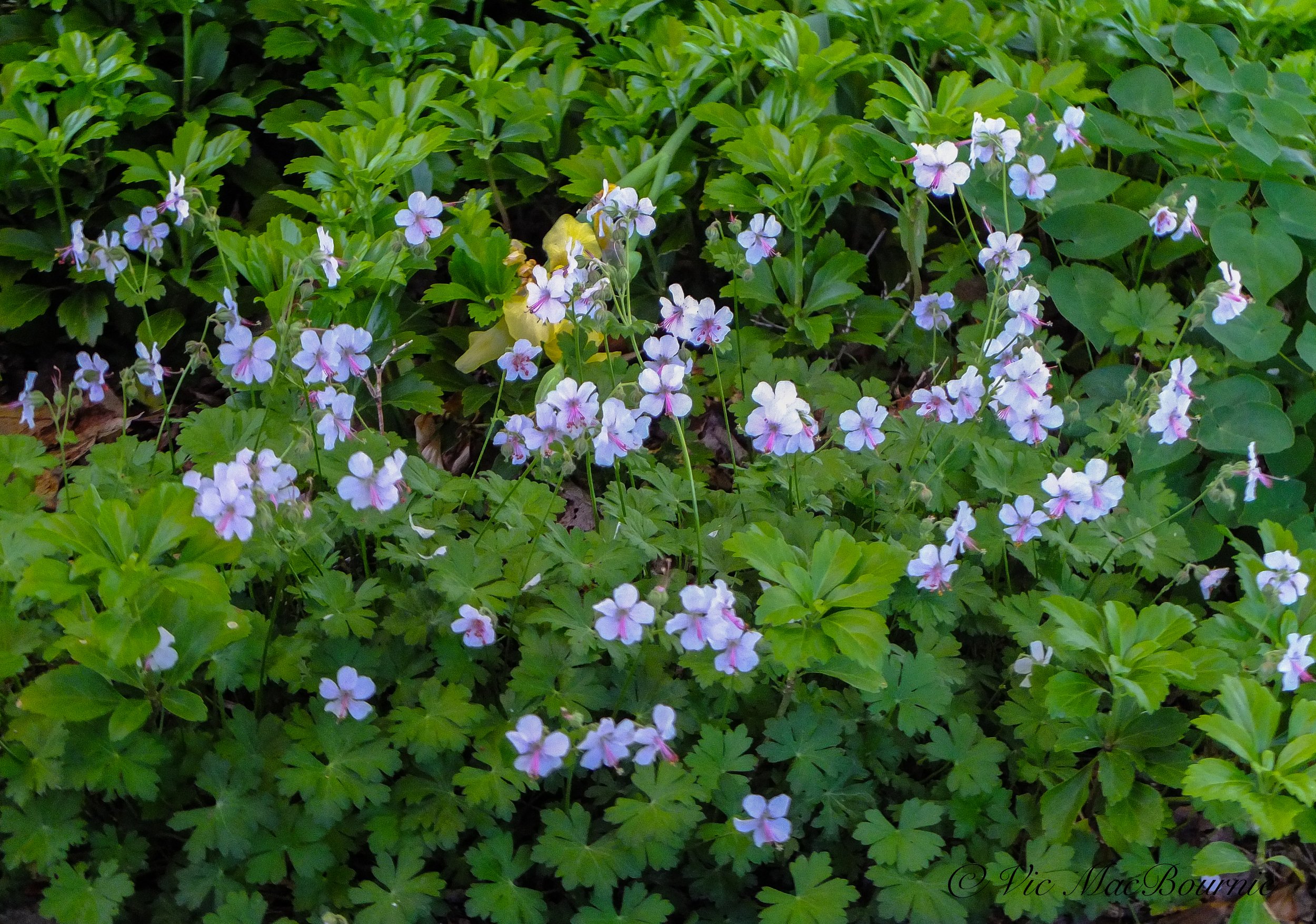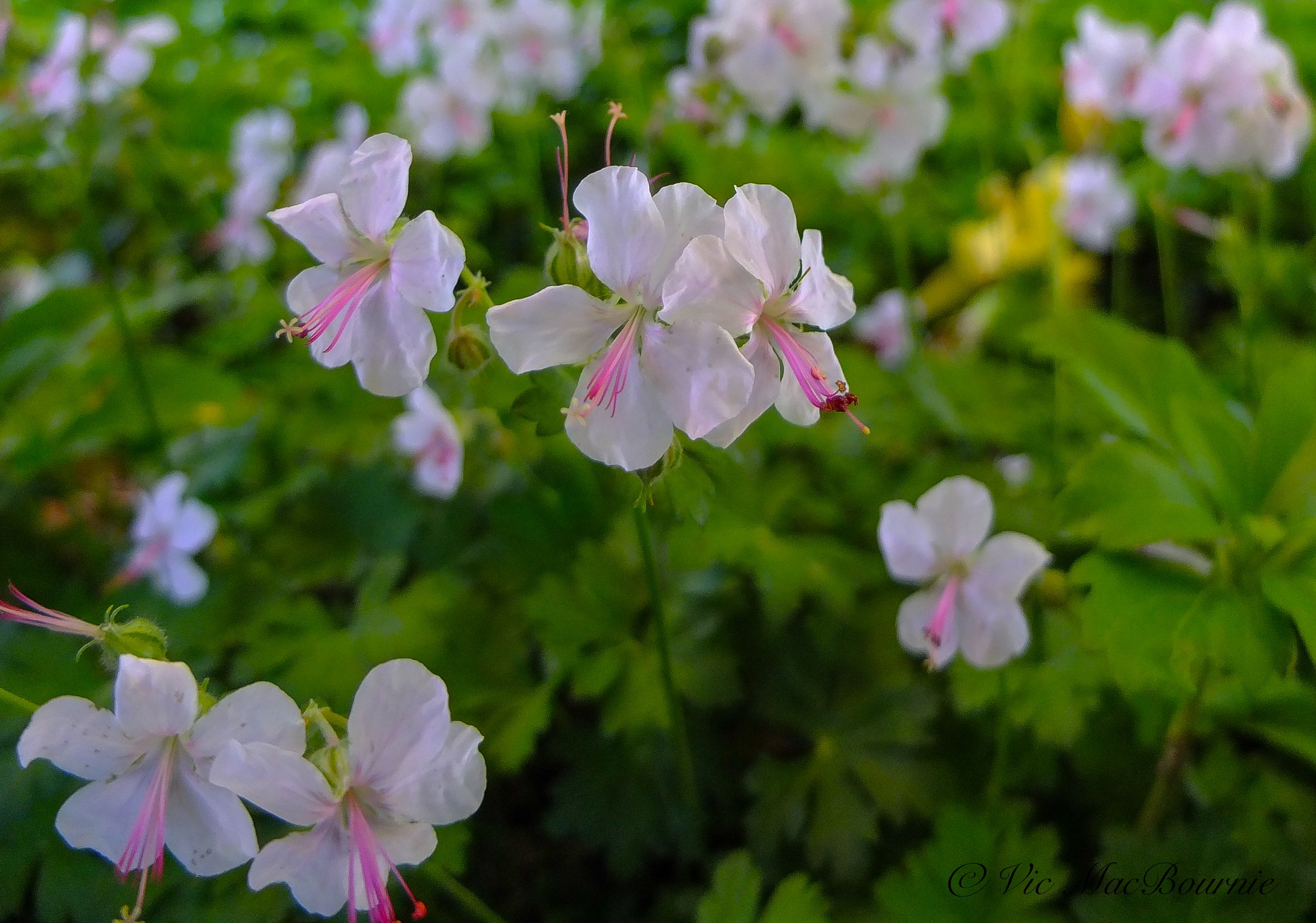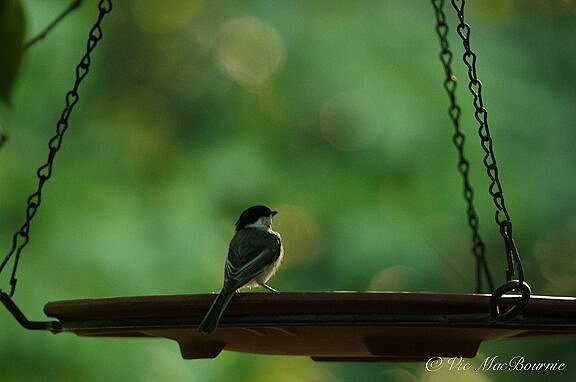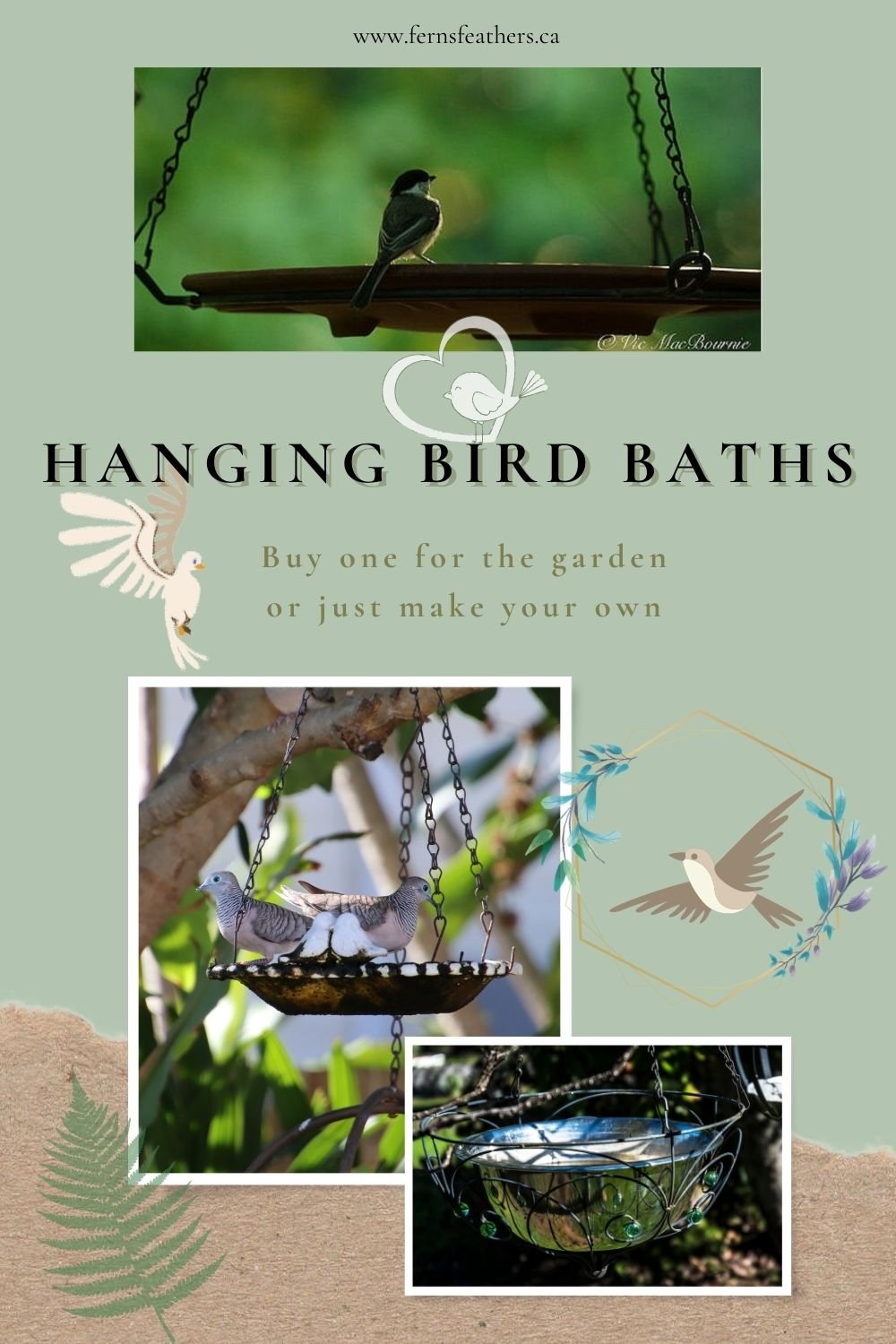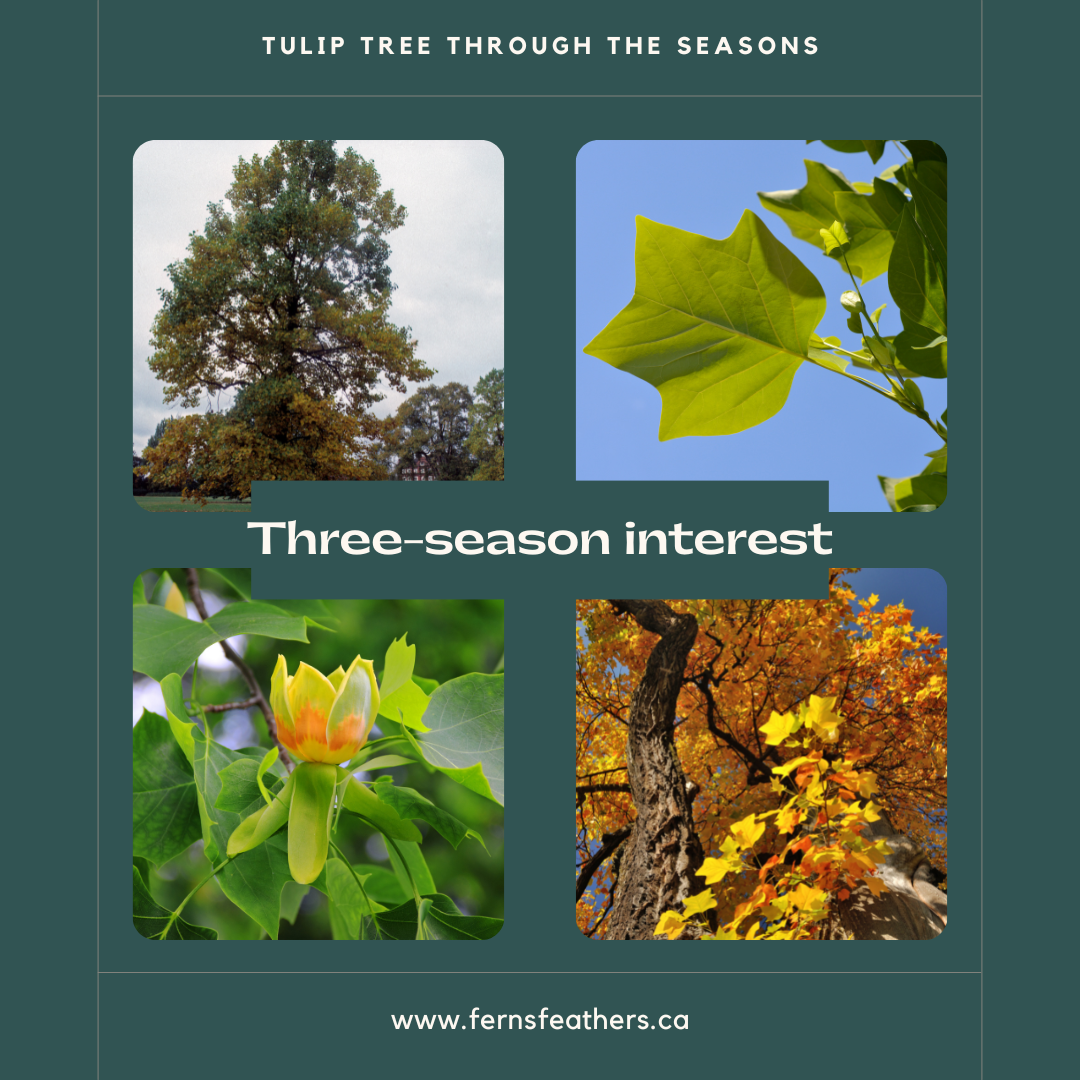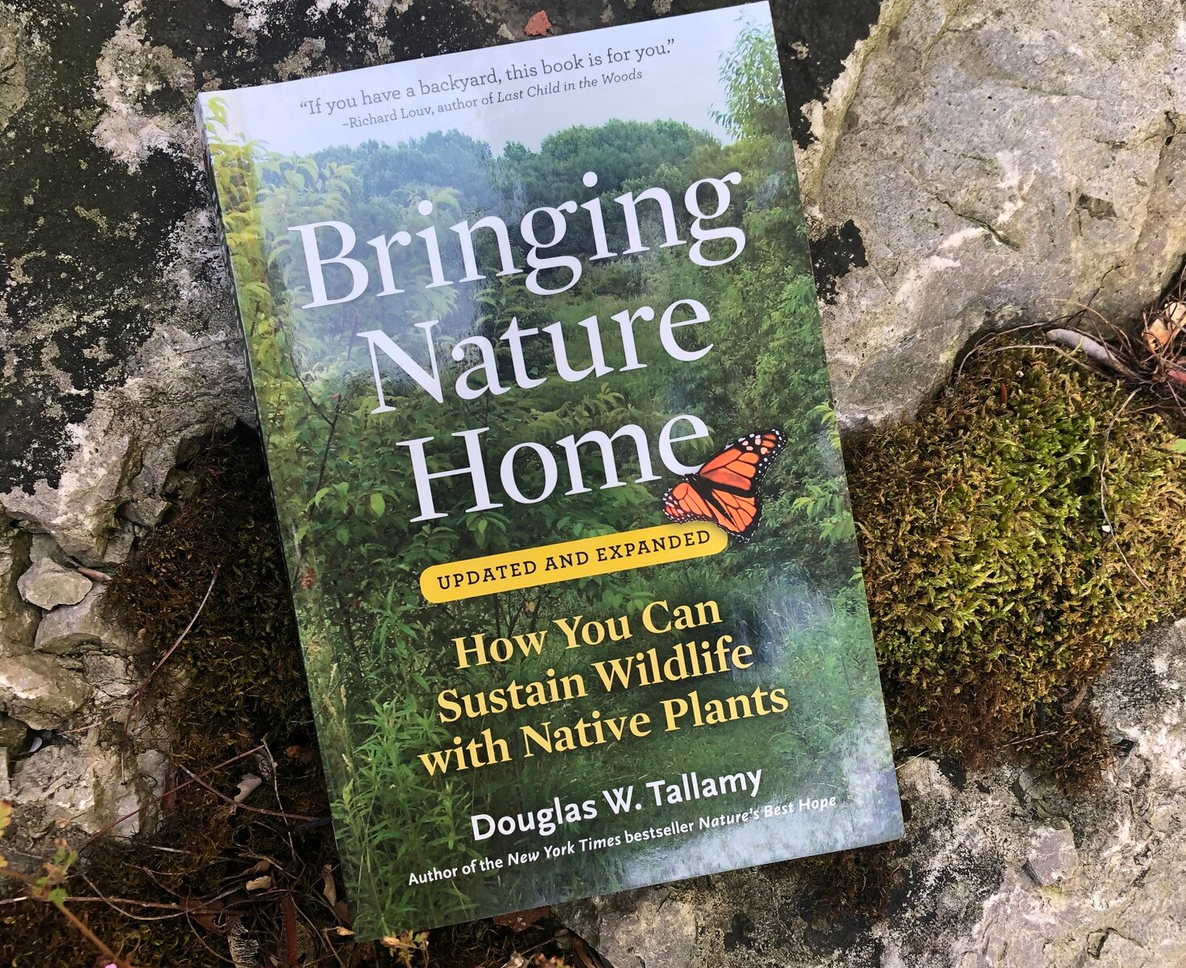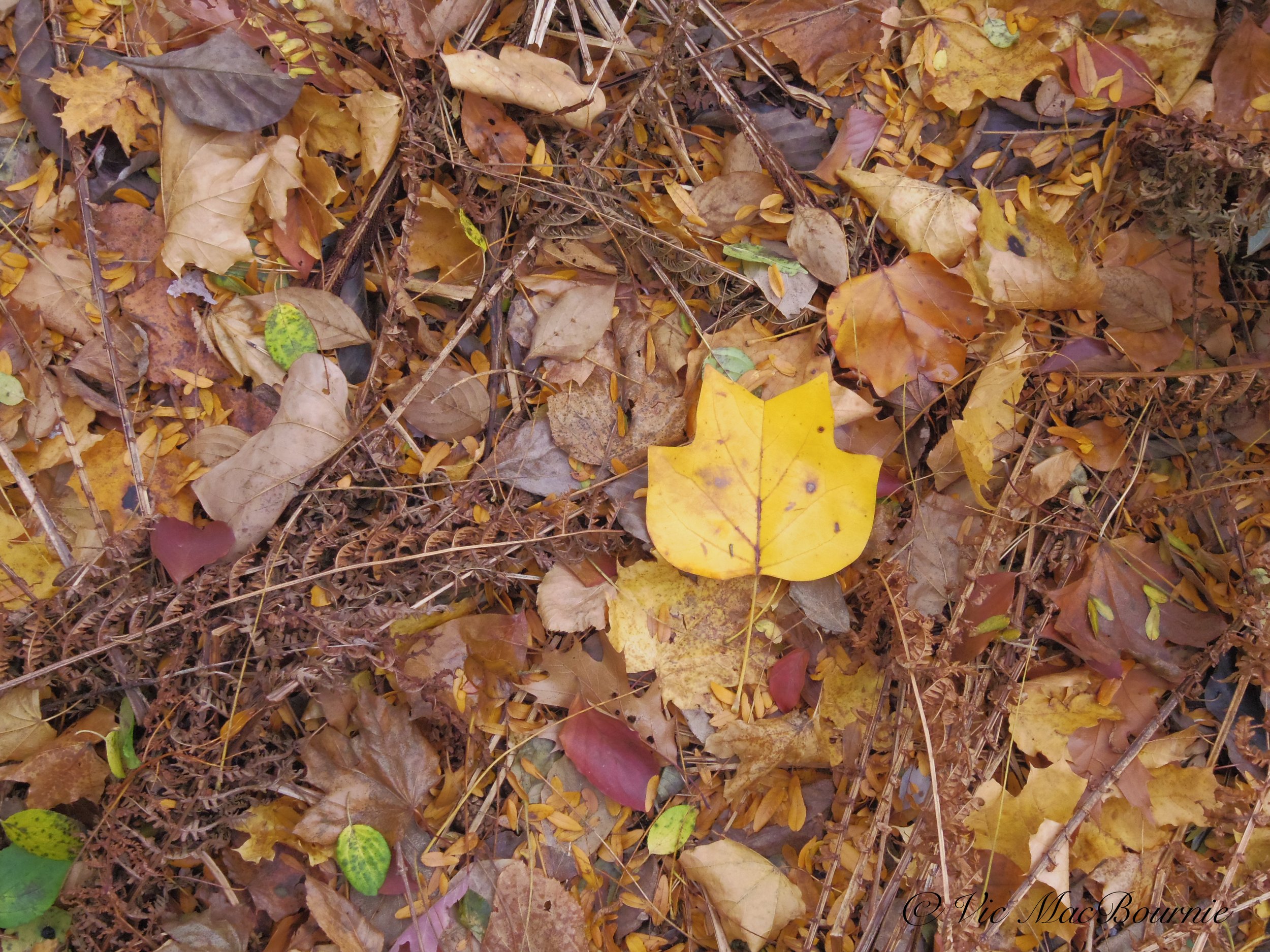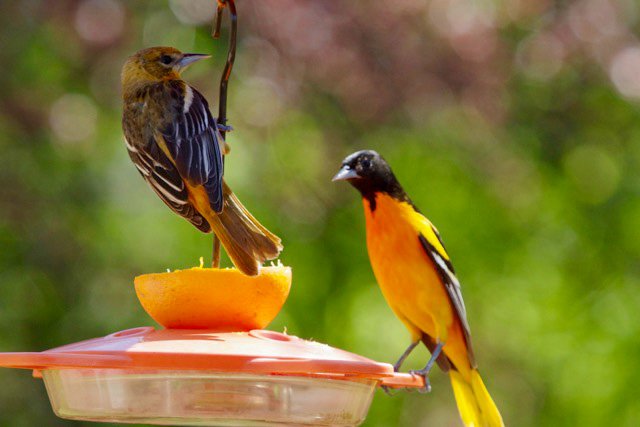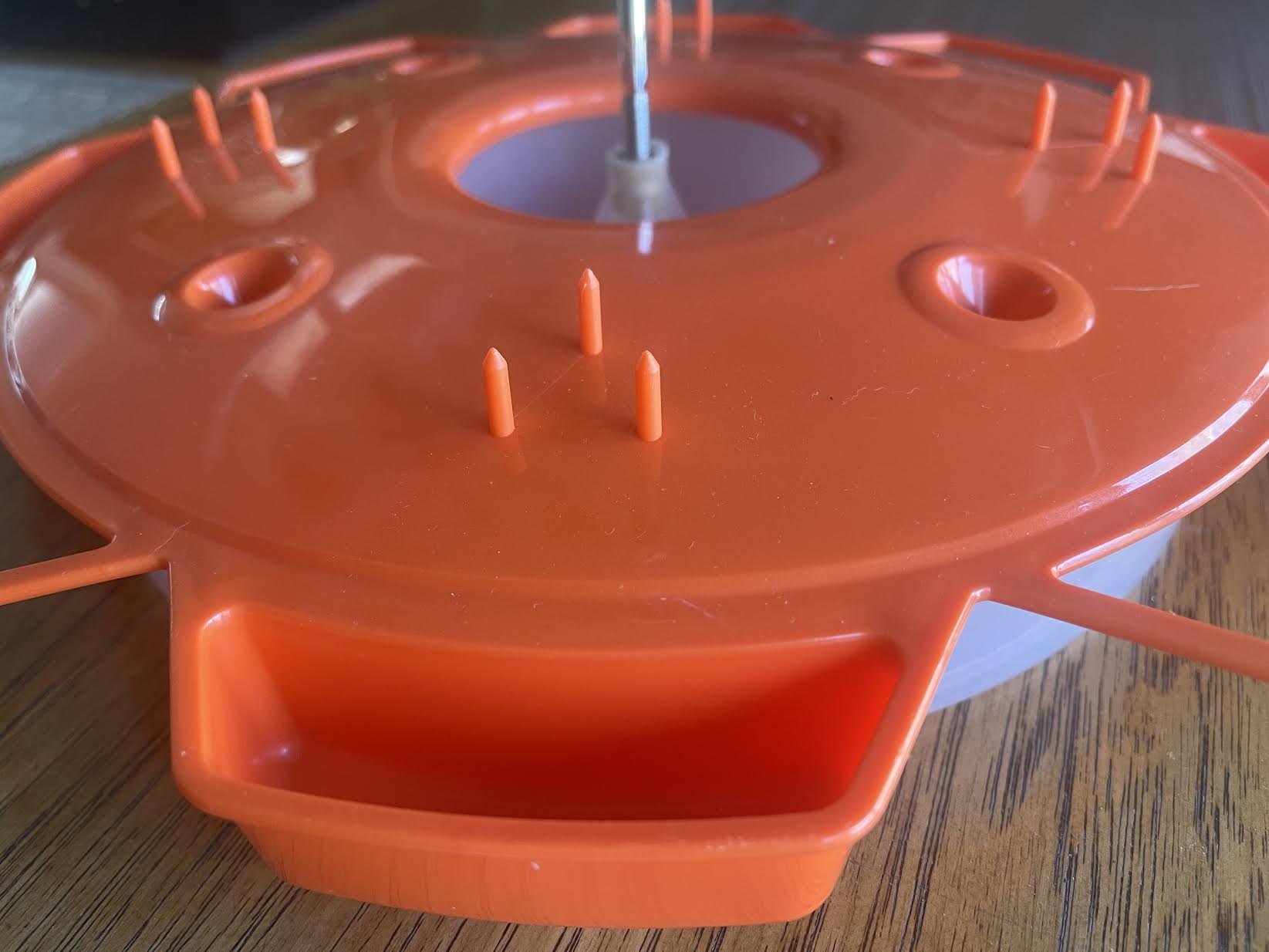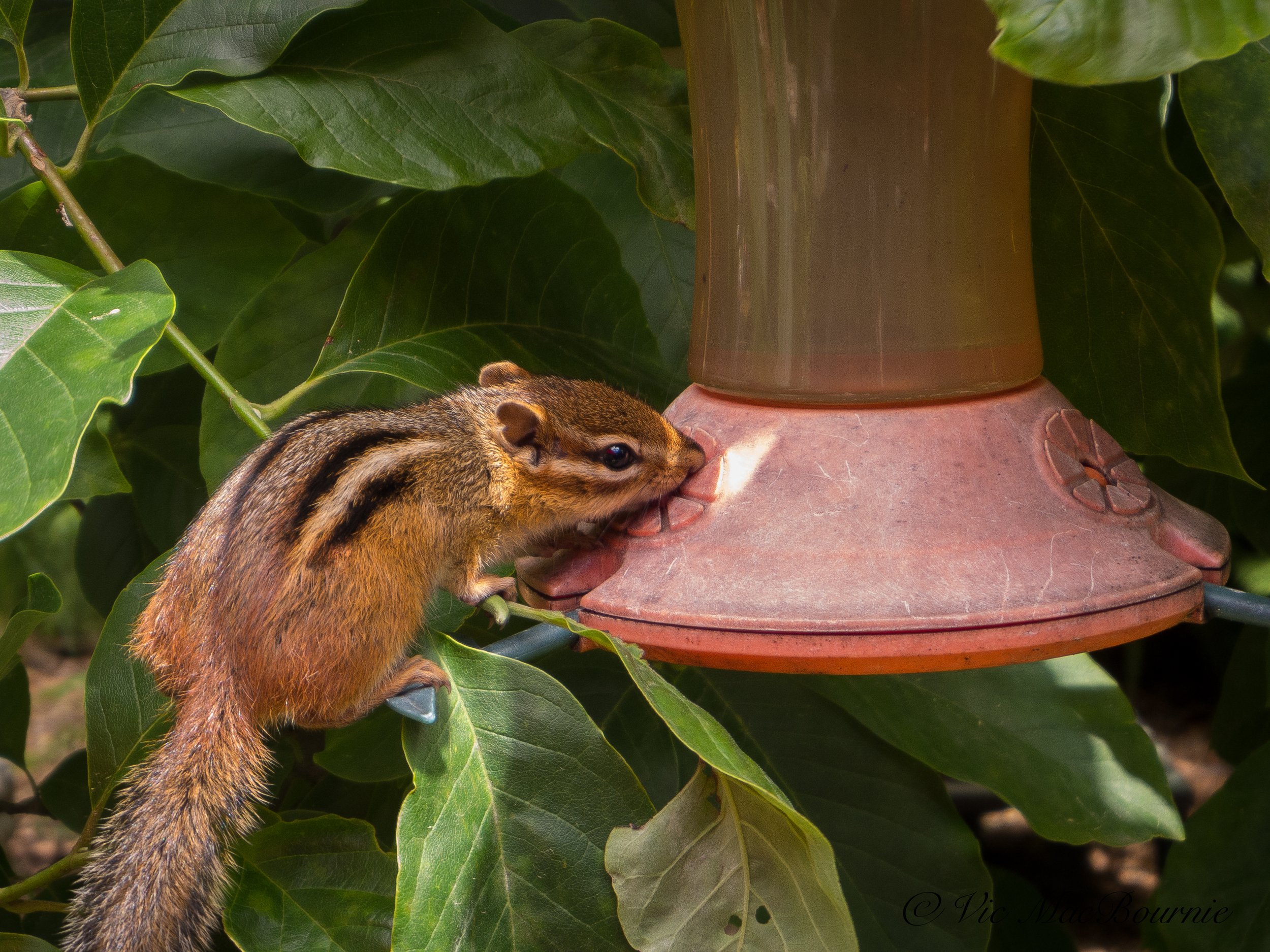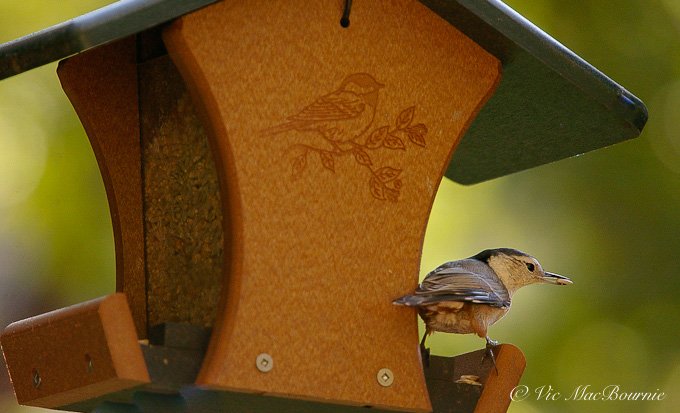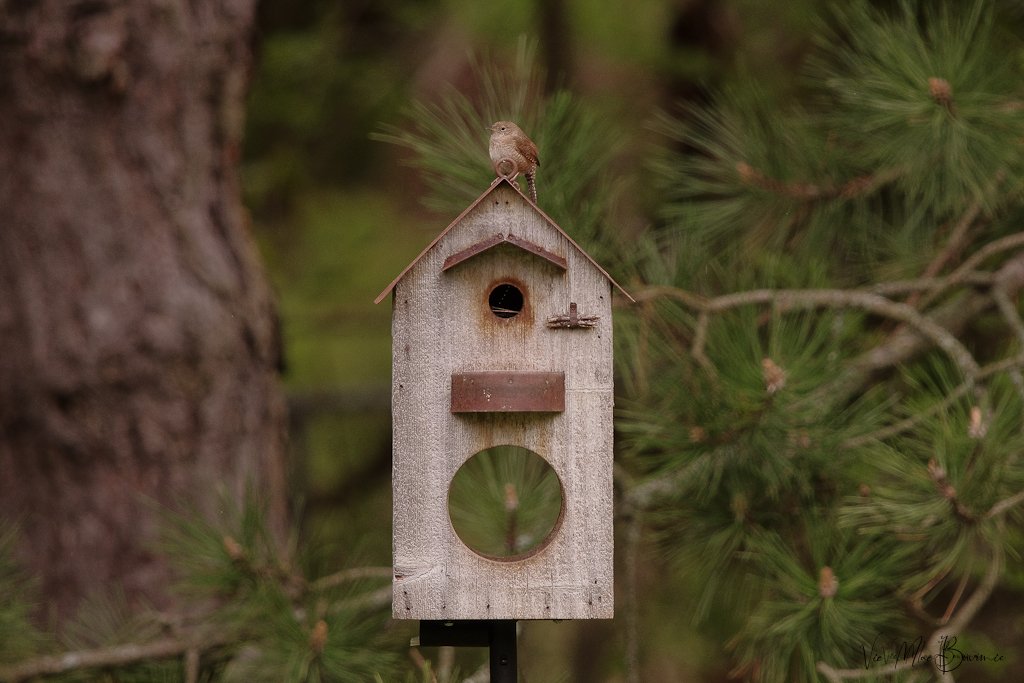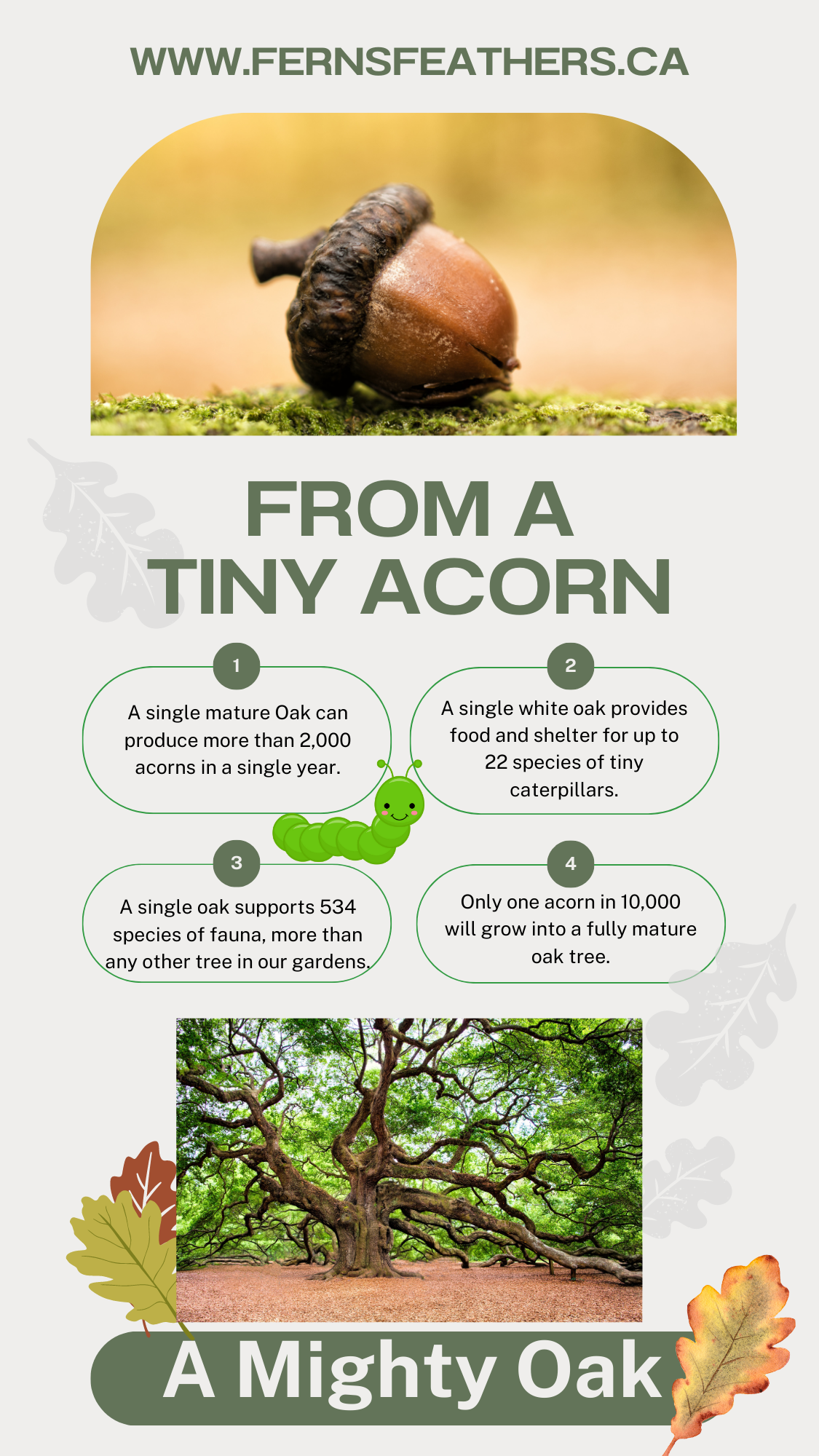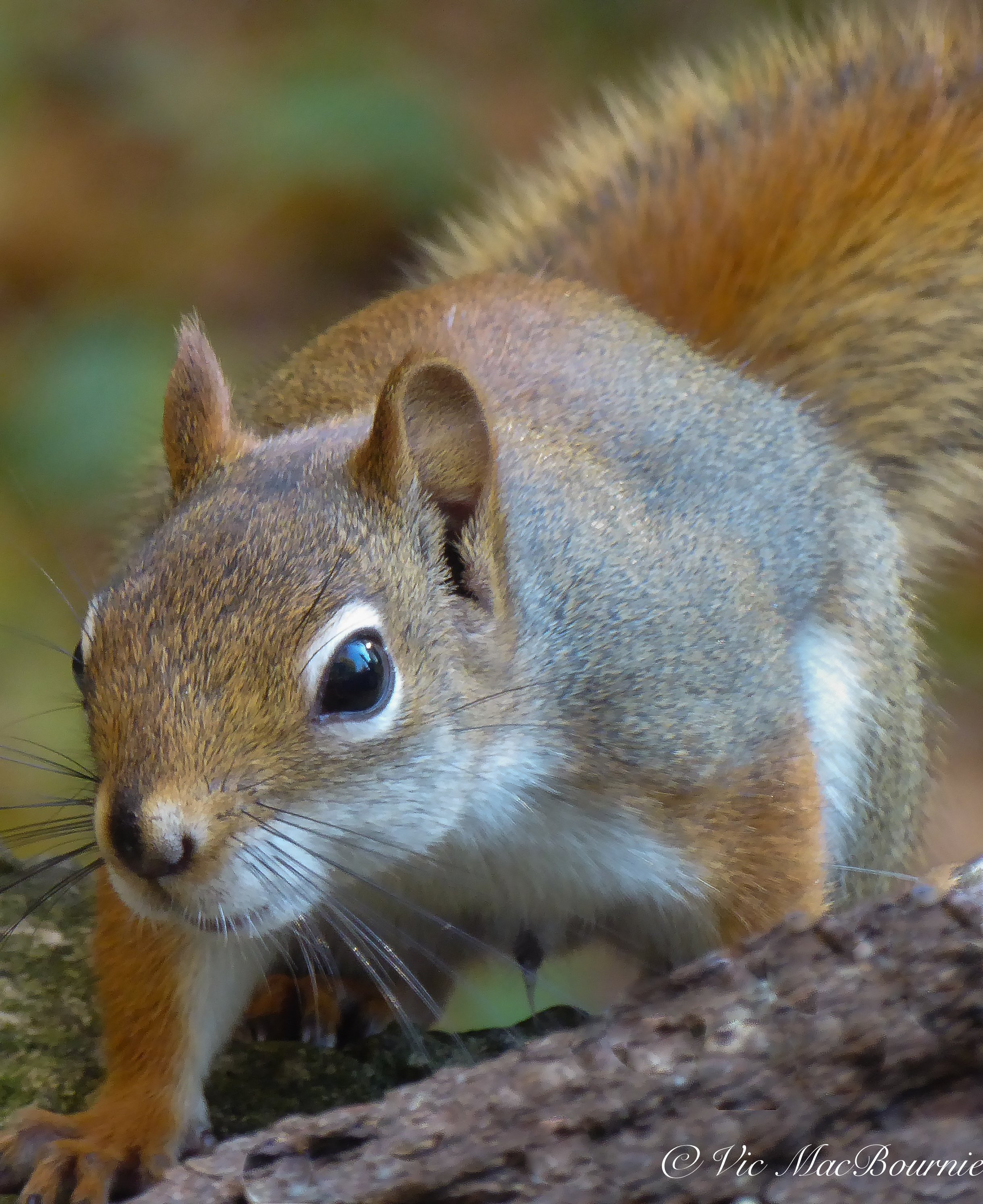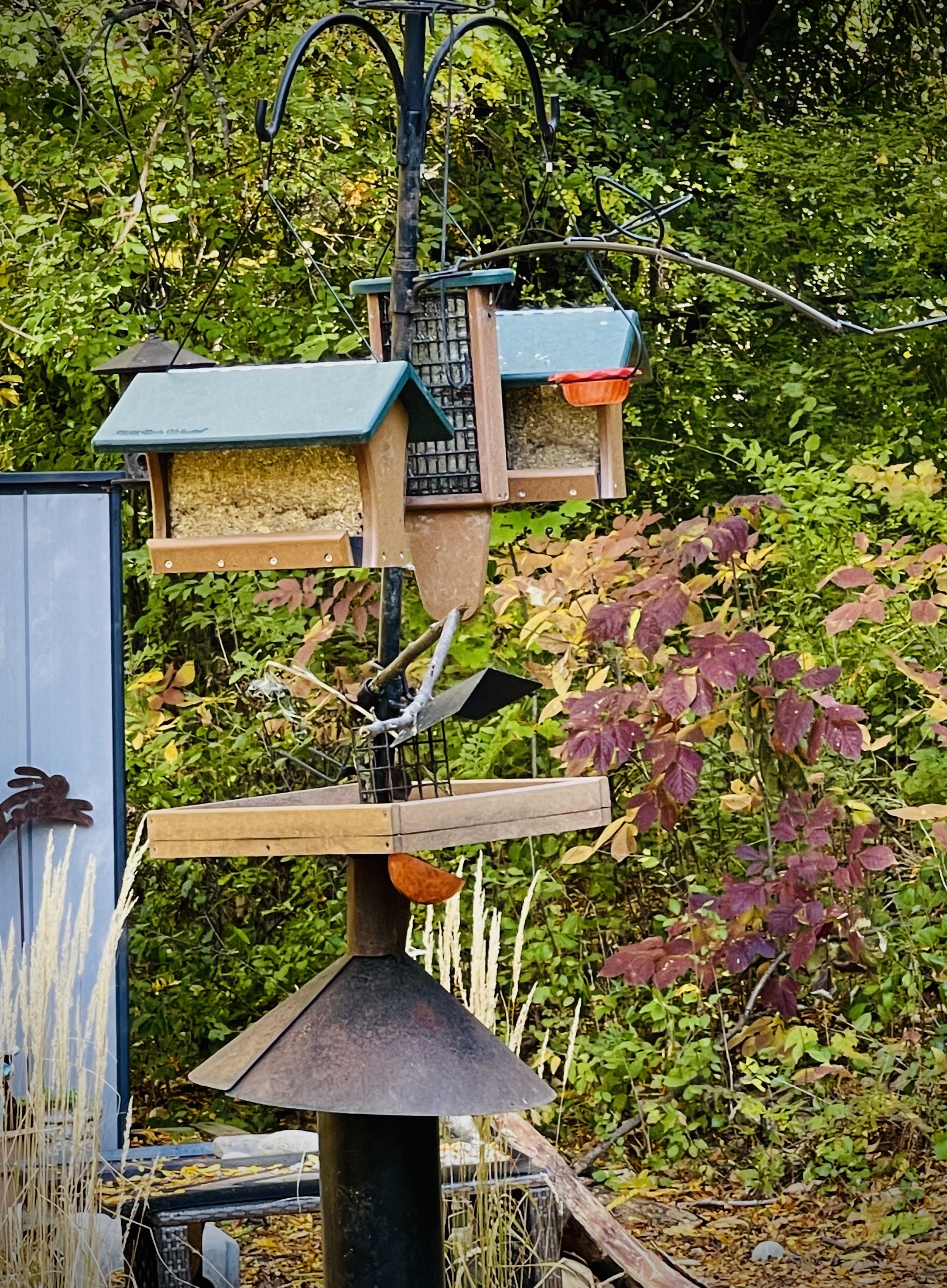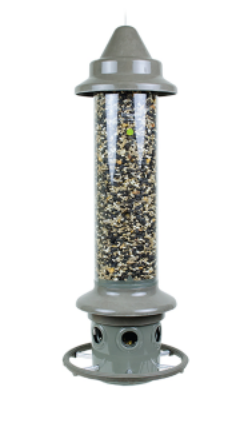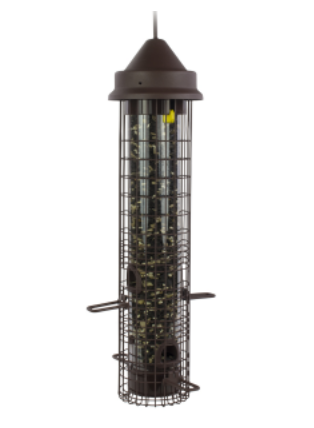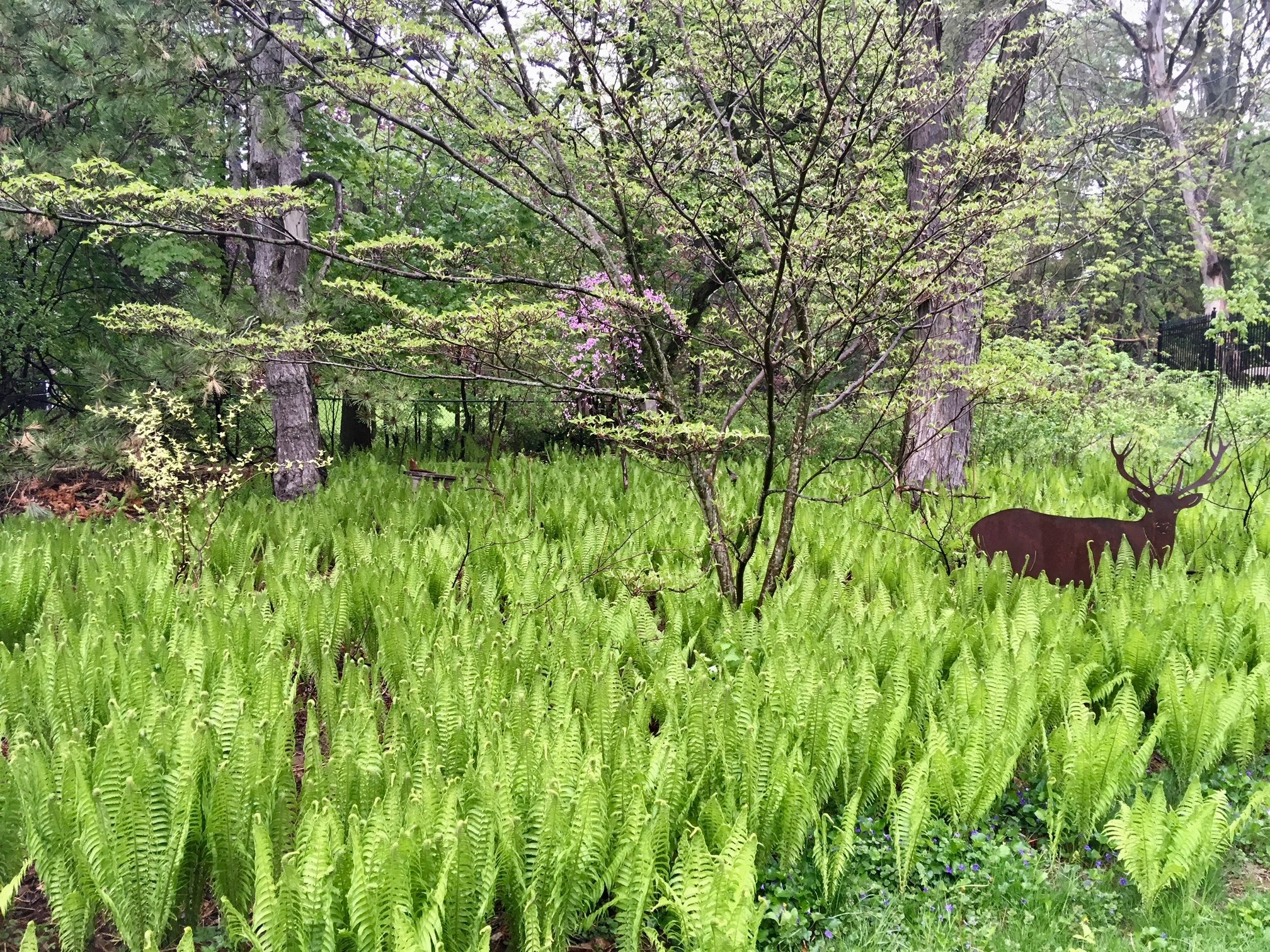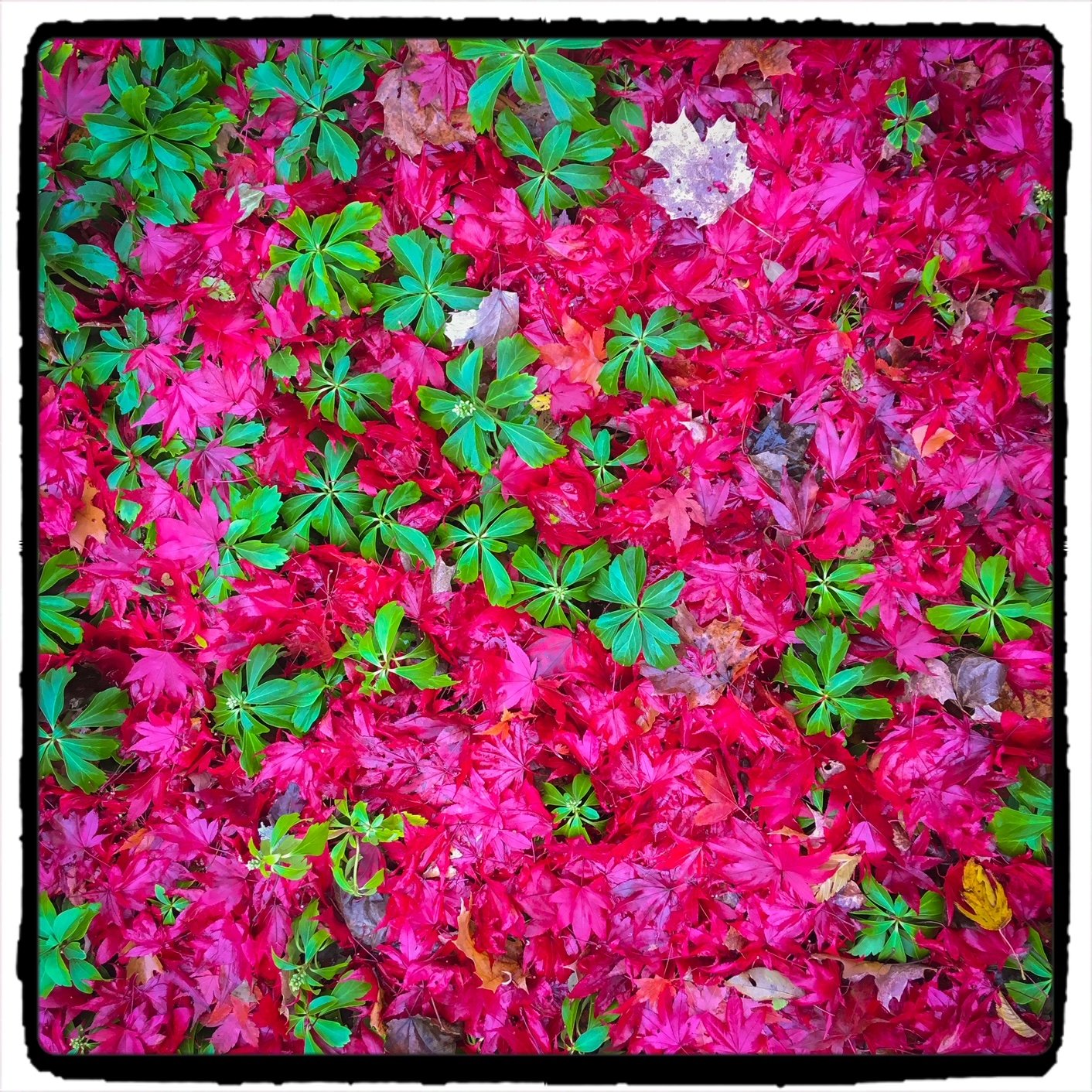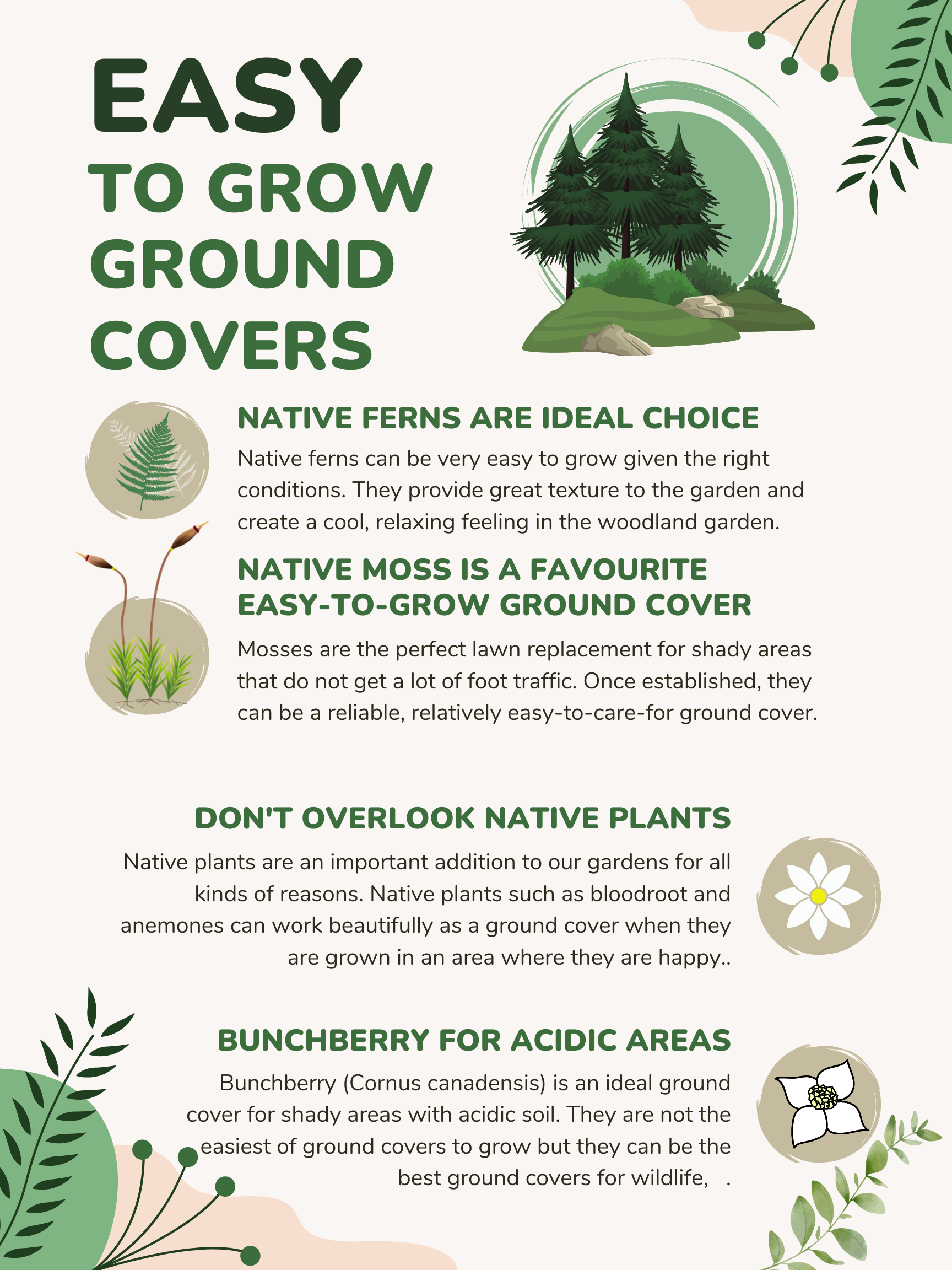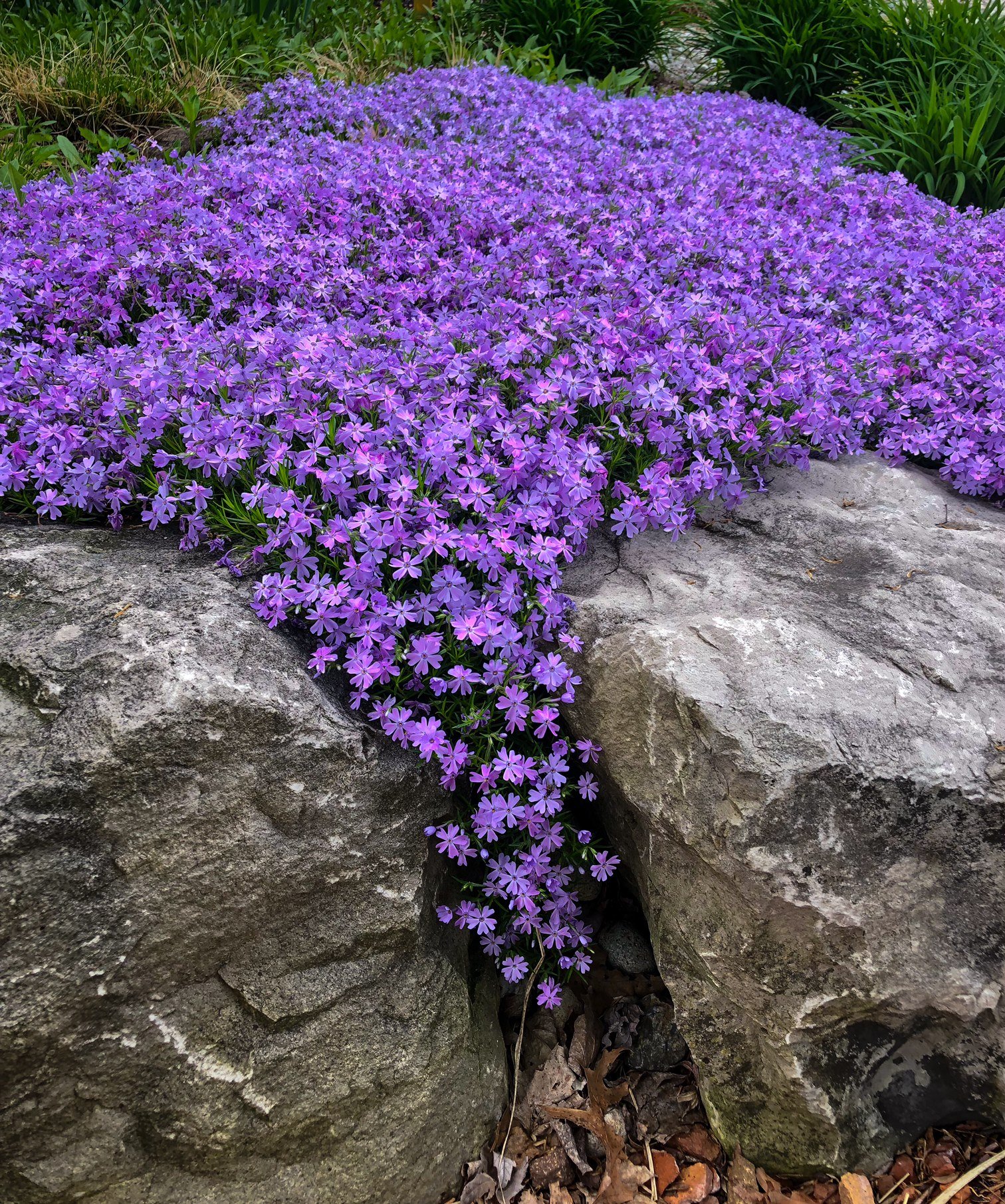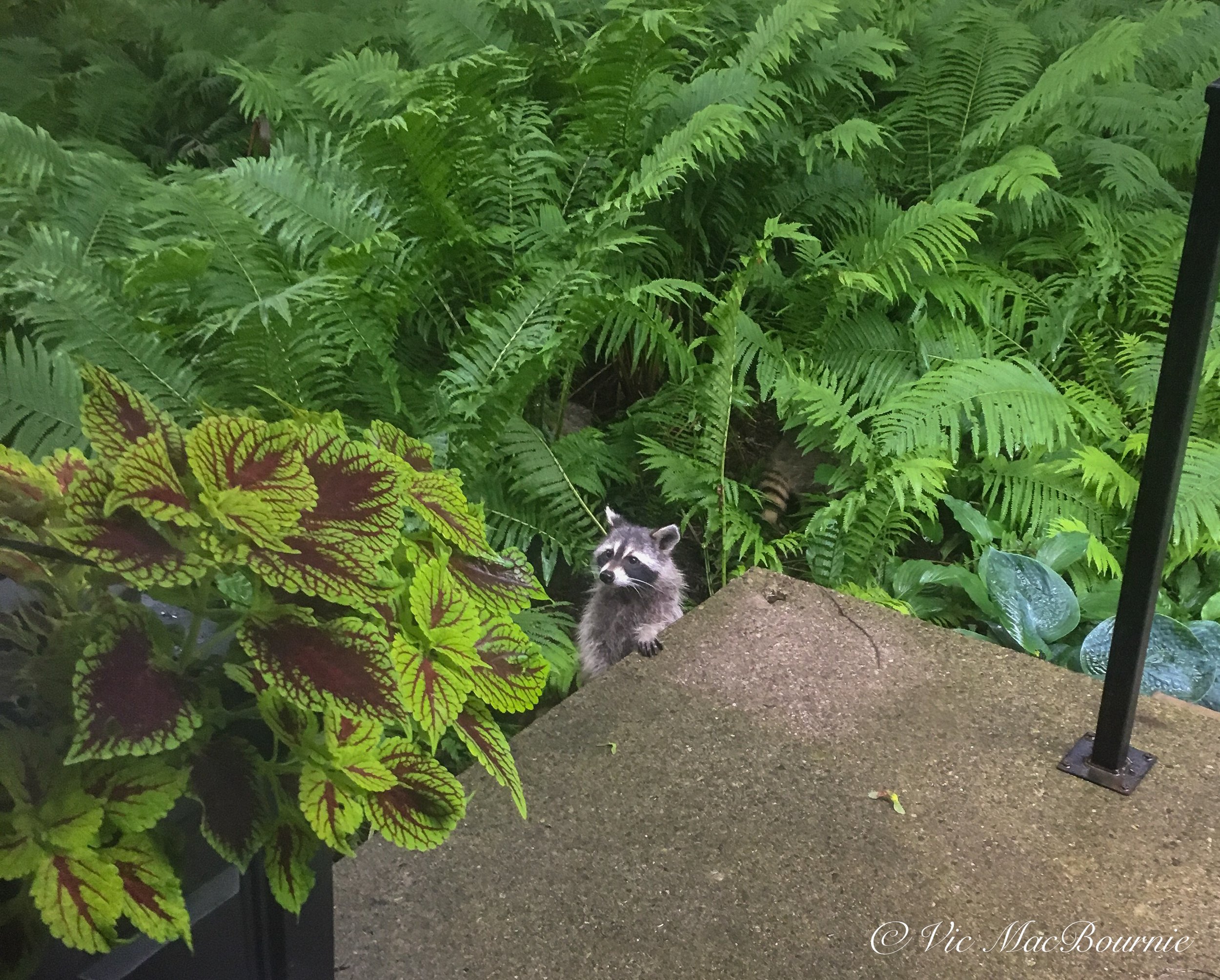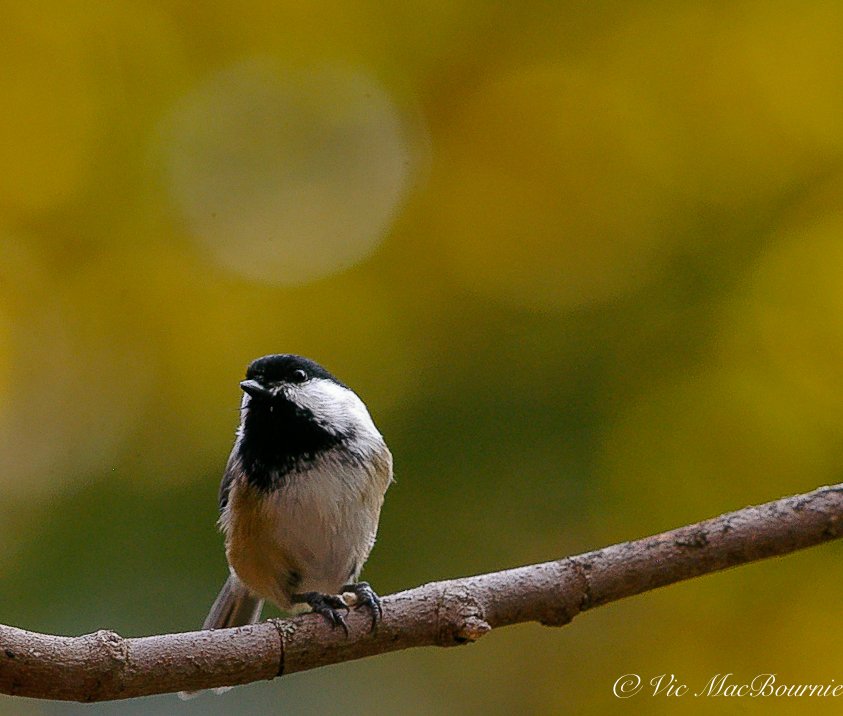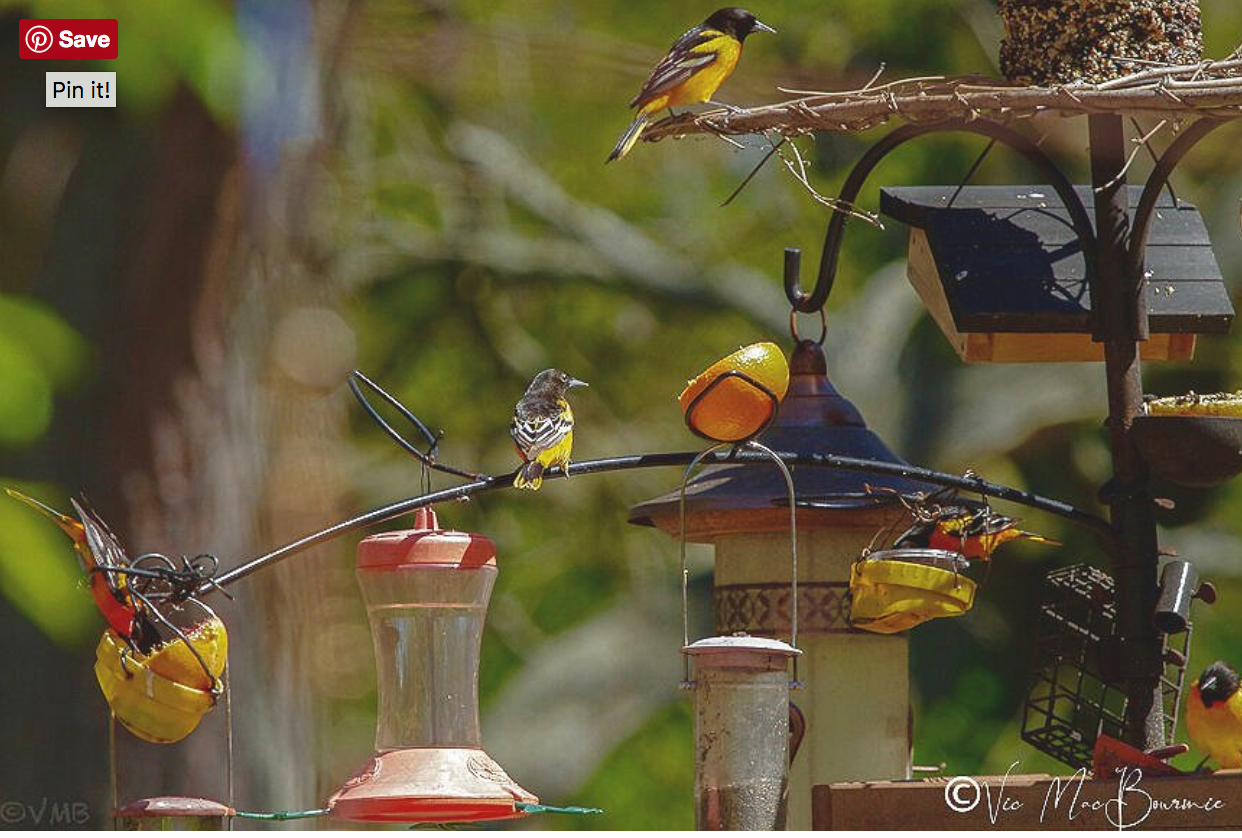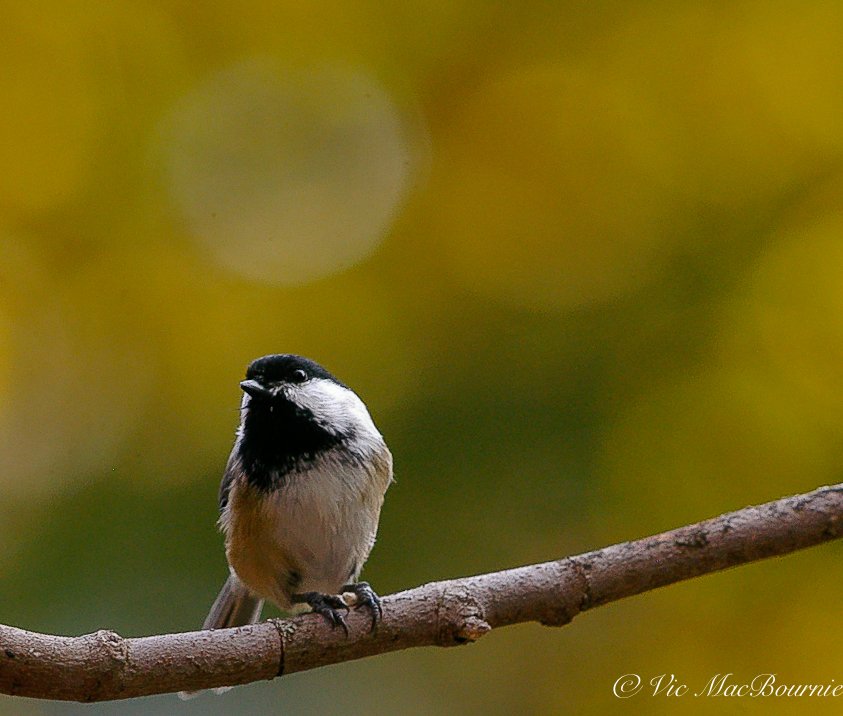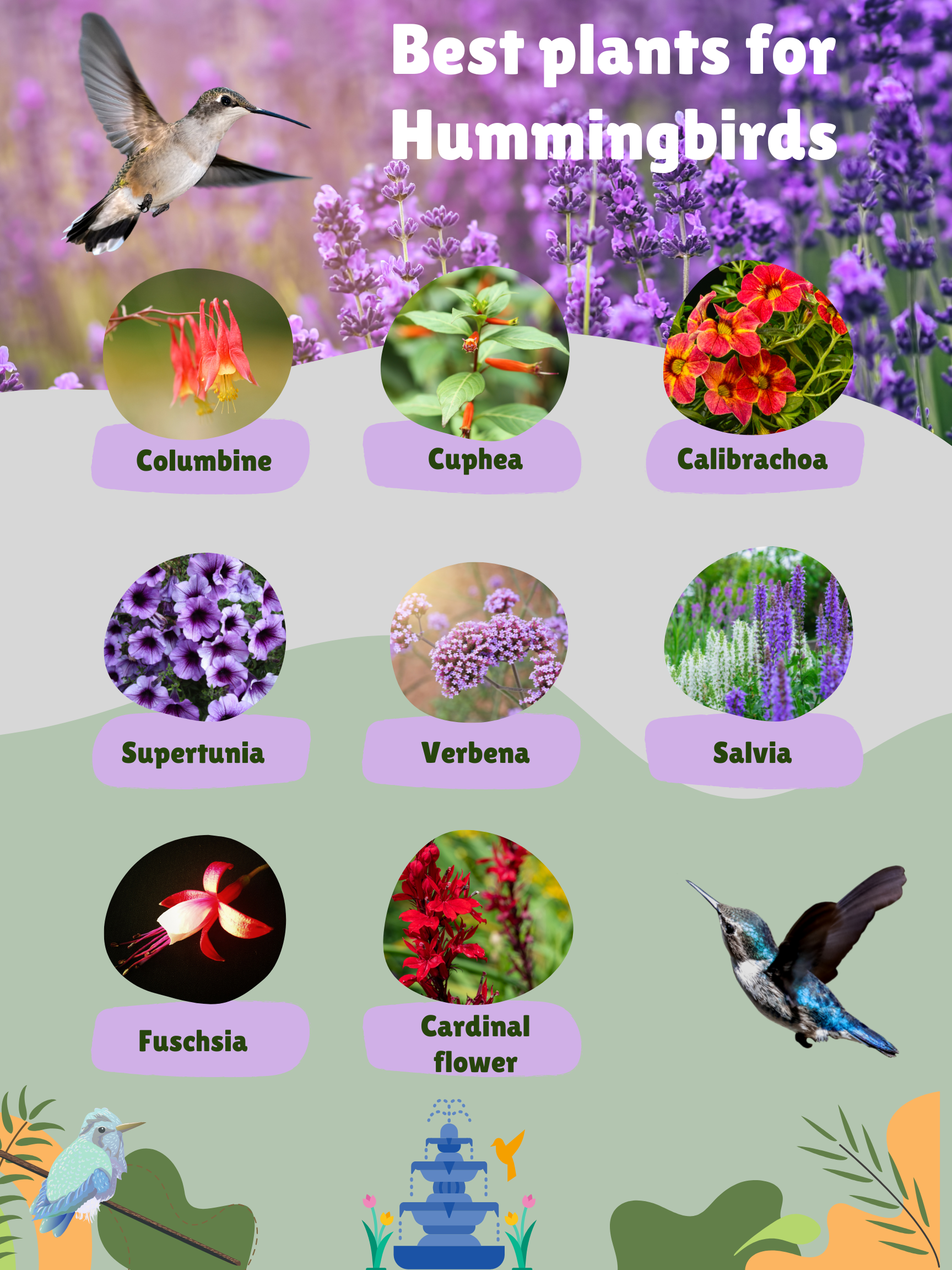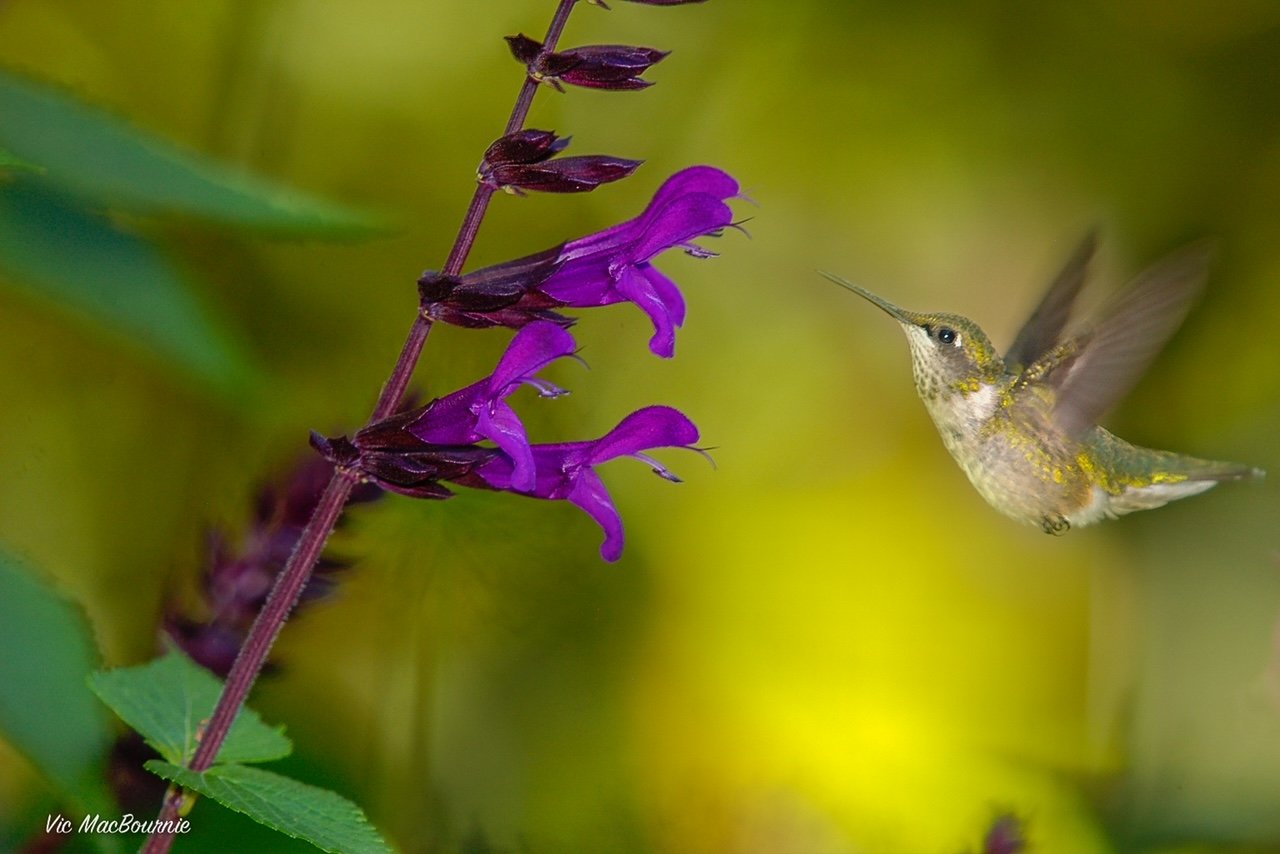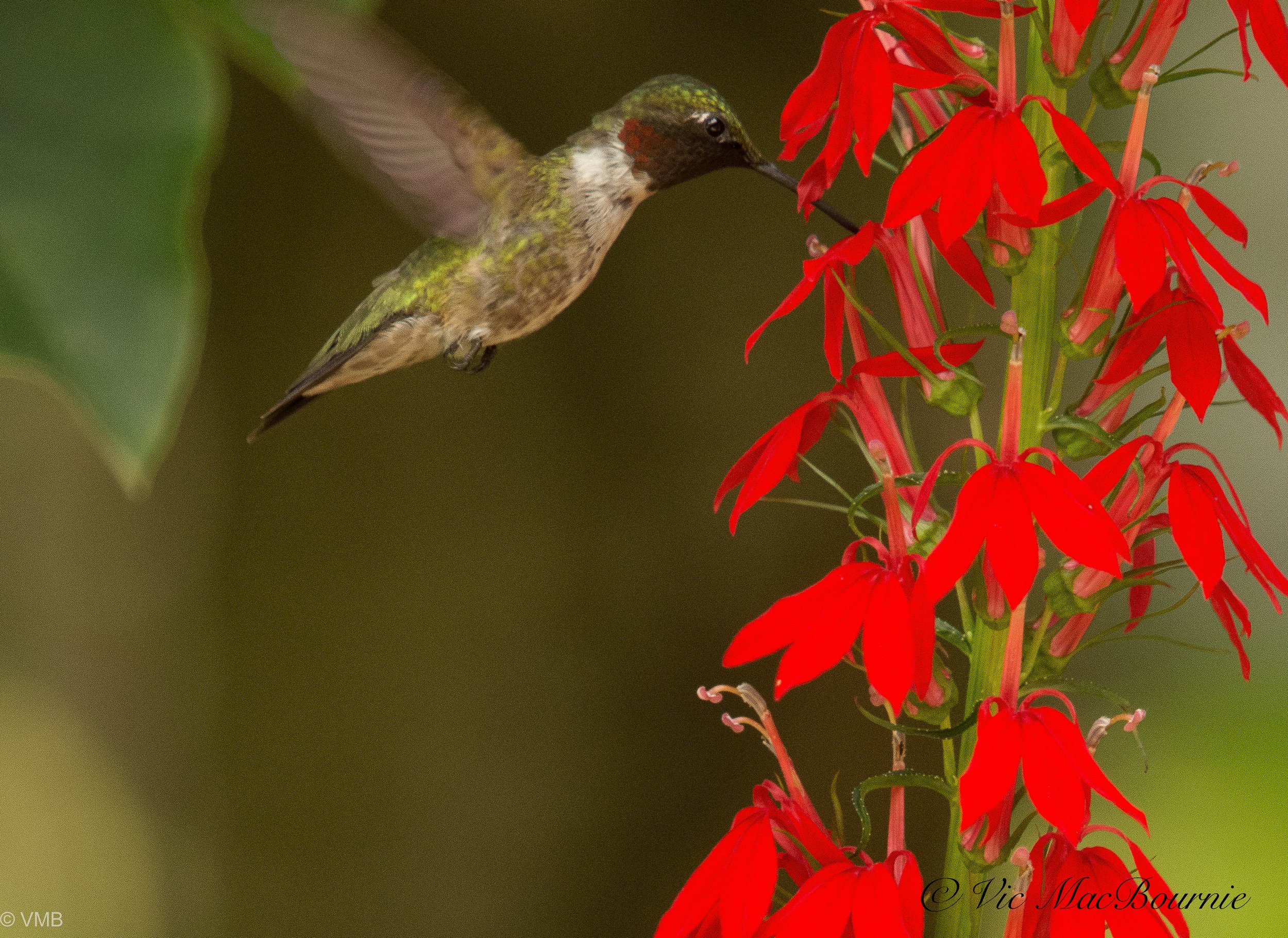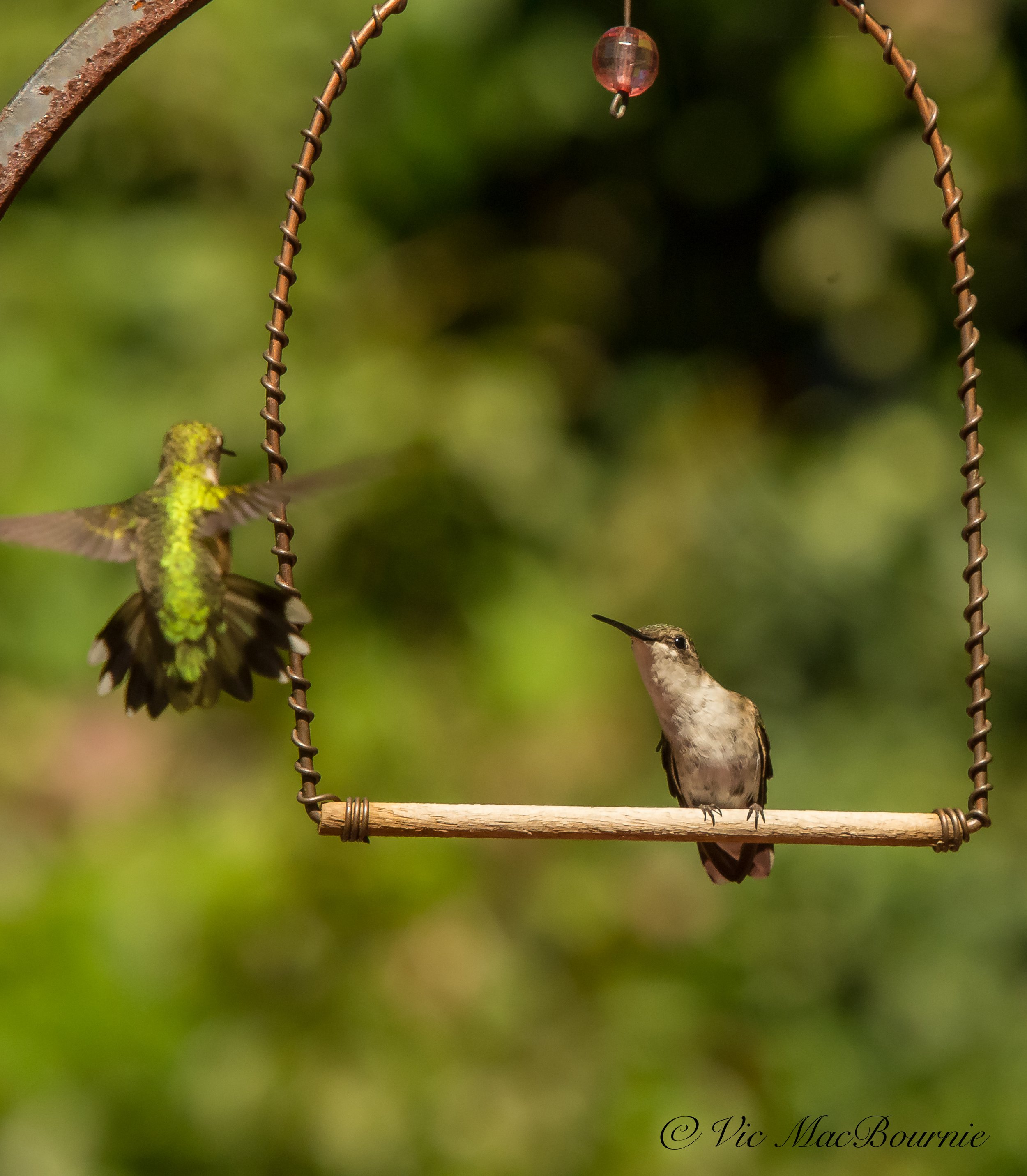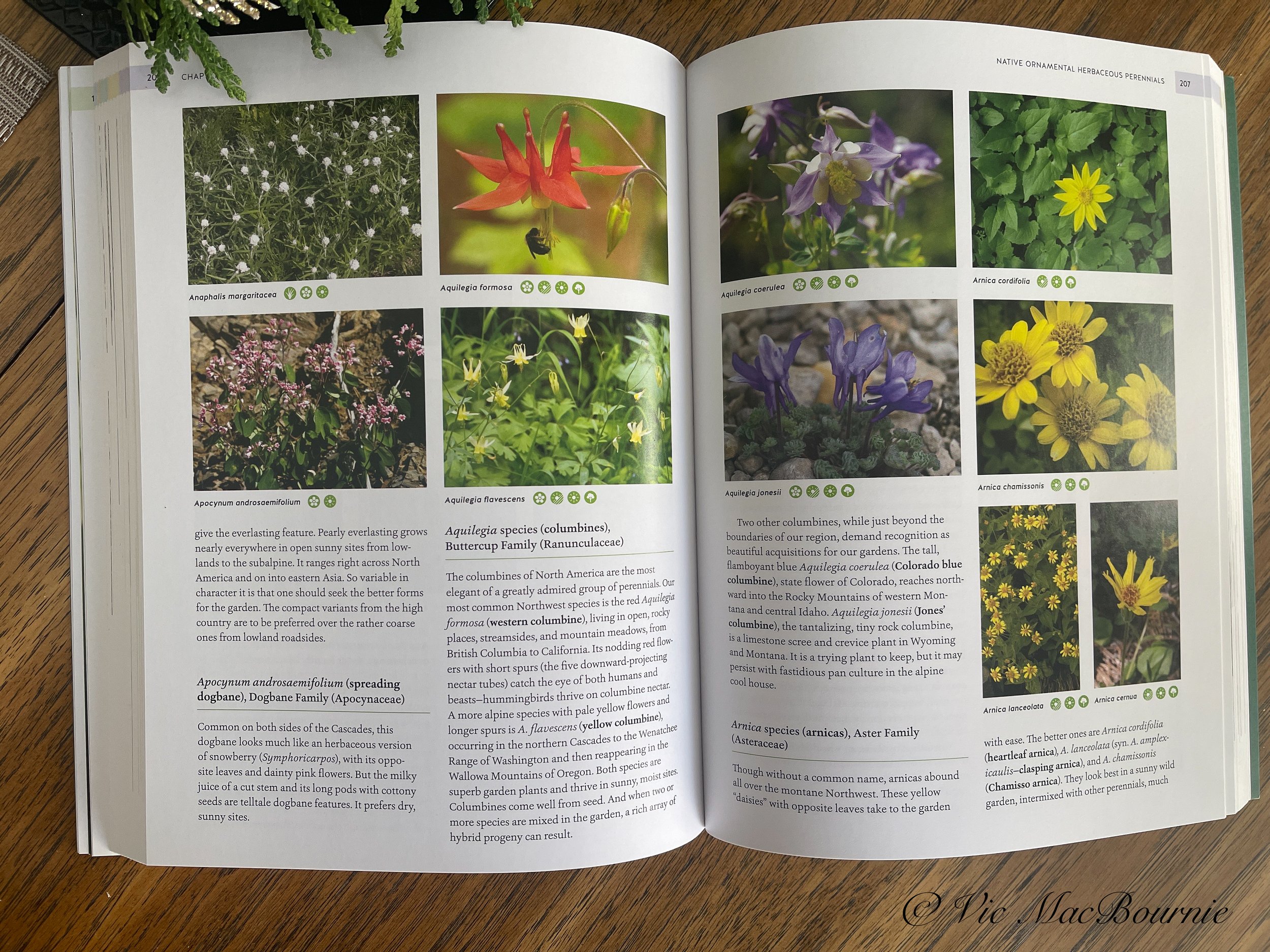Wildscape: Cultivate a vision all your own
Cultivating your own vision of beauty in your garden should include a focus on wildlife.
Author encourages readers to include wildlife in their garden vision
If you are looking for gardening advice about how to pretty up your front or back garden, Nancy Lawson’s newest book, Wildscape, is probably not for you.
But, if you are a wildlife gardener and are in need of inspiration with a very strong hit of validation, you need to get your hands on this little book packed with incredible insights, fascinating tales and love stories. And nothing better illustrates Nancy’s love for gardening and the creatures that call it home than the final chapter of her book.
It’s the culmination of a love story about her father who recently passed away, her sister and her family who fought their HOA for the right to enjoy their vision of natural beauty and, finally, it’s a passionate plea for the wildlife that face daily battles to survive in an ever changing environment.
If The Humane Gardener, Nancy Lawson’s first book, was a plea for respect and compassion toward all species and a call for gardeners to welcome all wildlife to our backyards, Wildscape is a call to action for gardeners to recognize the problems humans are creating and how our actions are, in many cases, forcing garden wildlife to change natural behaviours to survive.
In her latest book, Wildscape: Trilling Chipmunks, Beckoning Blooms, Salty Butterflies, and other Sensory Wonders of Nature (PA Press, Princeton Architectural Press, New York) Lawson explores – in five chapters – the sensory wonders of nature and the incredible adaptations insects, mammals, birds, reptiles and amphibians are sometimes forced to make to survive and prosper in our gardens.
Ferns & Feathers recognizes the value and importance the book Wildscape brings to gardeners and has decided to dedicate separate posts to each chapter of this valuable book.
For more on Wildscape, check out my reviews on
A vision for a new approach to gardening
The fifth and final chapter – entitled The Sightscape – turns its focus on vision. Vision – in the sense of the outright appearance of our gardens as well as our vision for the future – both in our gardens and the natural world.
The final chapter is about our interpretation of natural beauty. It tells the tale of her sister’s family and their battle fighting an HOA whose idea of the perfect landscape is acres of monoculture turf grass kept alive with pesticides, herbicides and an army of landscapers attacking neighbourhoods with a barrage of obnoxious weapons stripping the landscape of the very life that is waiting and eager to rise up to fill the neighbourhood with bird song, crickets and the sounds of life.
This chapter is about winning the small battles as a first step in coming out victorious in the war against people and an HOA. It’s about turning the tide of what is no longer acceptable for the future of our children and the wildlife we share our gardens and the earth with.
Nancy is able to accomplish this in a convincingly quiet manner using nature as her guide.
The Carolina wren needs insects, caterpillars and a more natural landscape to feel at home. It’s song in Nancy’s sister’s garden was a welcome celebration of the garden’s success.
Small victories in a bigger battle
It opens with the song of the Carolina wren singing in her sister’s unconventional butterfly garden celebrating a small victory for nature.
“From our chairs on the driveway, my sister, Janet, and I reveled in his territorial music, a kind of victory song for us too. The day before, the Maryland legislature had codified her right – and the right of people across the state – to grow gardens for bees, butterflies, birds and other wildlife. Her four-year battle with her homeowners association had planted the seed for a much larger fight, and now it was time to celebrate the new law of the land.”
The battle between the family’s vision of a garden and the HOA’s is one that goes on in many neighbourhoods in states, provinces and countries in the United States, Canada, the United Kingdom and other countries around the world struggling to recognize the value of native plants and a new way to garden.
The wren, celebrating spring in the garden, asked for little, Lawson explains.
“But if my sister’s neighbour had gotten his way, most of the wrens’ housing construction materials would have disappeared, and their grocery shelves would be empty. Despite the low demands and helpful ways of these hardworking birds, they were once unwelcome in Janet’s community, where one resident took it upon himself to declare turfgrass the only acceptable plant and to decry the presence of animals as verboten.”
Nancy goes on to explain how this one man influenced the HOA to spend “about a hundred thousand dollars of the community’s money” trying to destroy her sister’s garden.
“In a series of bullying letters, the HOA’s contracted law firm wrote that a garden ‘without the use of pesticides in which they have maintained ‘native plants’ to provide food for the birds, bees, and other insects and animals’ is “completely contrary to the overall design scheme for the Association, which is a planned development. Lots within the Association are intended to be uniform in design and character with manicured yards and green grass for lawns.”
Nancy’s conclusion is all we need to recognize that the battle is an ongoing one that needs our attention, and the attention of progressive thinkers who recognize that we are slowly becoming the voice of wildlife.
Finding your own vision of beauty in the garden is important.
“For the sake of a fake aesthetic – a collective conformity manufactured in the minds of corporate lawn and pesticide marketers – our culture has sacrificed birds and their soulful songs bees and the fruits of their buzzing labors, mikweeds and their heady perfumes, and rocks and branches and leaves and all the frogs, salamanders, beetles, and other hidden treasures underneath. We’ve given up the scentscape, the soundscape, the tastescape, and the touchscape in the name of an arbitrary sightscape that’s dead boring at best and most often just plain deadening. In the dominant paradigm, there is virtually no sightscaping at all, nothing for people to look at and no place for animals to hide and perch and take in the view. There is no color but uniform green, subsuming the splash and the flash that butterflies, fireflies, birds, bees, wasps, and so many other animals bring to a more natural garden…”
Pretty pink Planthoppers, Katydids and evolution
And then there is her fascinating story about the pretty pink planthopper she discovered in her garden. And, like the new YouTube watcher who discovers the bounty of garden videos, leads her down a path of discovery about Katydids, pink colorations and the possible evolution of these largely unstudied little sap suckers.
Equally fascinating are the caterpillars who use bits of flowers and lichen to visually camouflage themselves from predators, or the “color shifting” spiders who take on the yellows and purple flowers they lie in wait on to nab their next meal.
Our gardens play out visually in so many more ways than we ever really think about.
There is the grey tree frog that takes on the look of mortar when its tucked away in a crevice around the bricks of our home, but is just at home wearing its bright green outfit while hanging out on a similarly colored leaf.
And don’t forget about the fireflies that greet us with their delicate dances of light in our yards if, and only if, we put away the pesticides, lawnmowers and grow native plants.
But there is also the light pollution our neighbours inflict on us and the wildlife to light up their homes for all to see complete with massive windows that create illusions of wide open spaces that only end in the tragic deaths of countless birds.
A vision all your own
In conclusion Lawson writes: “For animals and plants, blending in and standing out in the landscape is a matter of survival. For humans, it’s a choice, and many people choose to blend into blandness, wearing the mask of the responsible neighbor who mows his lawn once a week, or the tidy homeowner who leaf-blows and stump-grinds away the understory, or the well-off family who can afford to hire a company to do all that for them. But far from protecting anyone, our forms of crypsis (crypsis: the ability of an animal or a plant to avoid observation or detection by other animals) are pretenses that banish other lives from the premises and impoverish our own in the process. Instead of blending into the barrenscape next door, why not try blending into nature, turning the trees and their leaves and the colourful cast of wild character they shelter into sparkling centerpieces of the neighbourhood?”
Great Garden Gift Ideas
Great Garden Gift ideas for dad for under $100. Everything from hummingbird feeders to bat houses and incredible deals on a garden pruning set. And, of course, a vintage pickup truck compete with working headlights.
I thought I’d do some serious leg work to find some gifts to save readers the trouble. Let me suggest a few for those looking to get a little something for the garden.
There are plenty to choose from, but here are some great gift ideas from some of the finest garden retailers. They start at below $25 that I think might be among the best gifts out there. (All prices in U.S. unless otherwise stated.) These are specific gift ideas, but I’m sure in many cases similar gifts can be found at a local store or through mail order.
How about a Window Watch Hummingbird Feeder for under $25 U.S. It’s a window-mounted feeder with a suction cup that attaches to the outside of a glass window. The handcrafted design with copper leaf accents holds about 3 oz. of nectar and allows you to enjoy the hummingbirds up close, real close. Plow & Hearth with a 4.7 out of 5-star rating after 43 reviews.
Audubon Bat Shelter is a not only a great gift for the gardener, it’s also great for the environment in so many ways.
Sticking with the bird theme, one of the best gifts you could to help the environment is the Audubon Bat Shelter. Bats are extremely important to our environment. Not only do they eat a host of insects including mosquitoes, wasps, flies and gnats, in doing so, hopefully they will help reduce neighbours from using pesticides. The Audubon cedar bat shelter gives bats a warm place to roost, protected from the elements and predators.It holds between 15-20 bats and requires virtually no maintenance once installed. Also from Plow & Hearth with an almost perfect 4.9 star rating after 16 reviews. But what would you expect from an Audubon protduct?
It’s no fun getting old. The knees, the back, the hips all start aching after a day of gardening. A garden kneeler may be just the ticket to make the job a lot easier. This Folding Garden Kneeler/Seat with foam pad not only makes kneeling a little easier, its handles also help the gardener get up from the kneeling position. Flip it over and it works as a small seat. The Garden Kneeler has a weight limit of about 250 pounds. The whole thing folds up for portability and storage. Again Plow & Hearth with an almost perfect score of 4.9 stars after 62 reviews.
Garden cleanup made easy…. a dustpan for your leaves.
Ok, I know there are a lot of men and some women obsessed about keeping the yard perfectly manicured and leaf-free. That’s not my game, just ask my wife. But even I can appreciate the EZ Leaf Hauler. When it is spread out on the lawn if looks like a giant dustpan, but it’s for cleaning up the leaves in the fall. The Hauler holds about five times as many leaves as a wheelbarrow and has the added benefit that it sits at ground level so all you have to do is rake the fallen leaves directly into the Leaf Hauler. It’s not unlike the giant tarps you see the landscapers use when they are doing a fall cleaning-up accept it has sides and convenient handles to help drag the load to your composter or garden bed. Remember, we don’t throw out our leaves folks. We keep them to create perfect soil. This thing folds flat for storage and is made of rugged woven polyester stretched on fiberglass rods. Scores a 4.5 out of 5 stars with 68 reviews and it too is from Plow & Hearth.
I could not pass this one up. I happen to love Japanese-influenced gardens and I know I’m not alone. If you are looking for a nice fountain to complement your Asian-influenced garden this Buddha Head Fountain with LED Lights might just do the trick. Includes the recirculating pump that sends water cascading over the Buddha’s head creating a trickling sound. The head also lights up at night. Wind & Weather, 4.8 star rating after 4 reviews.
This Professional Rain, Snow and Hail Gauge might be the ideal gift for the gardener or weather enthusiast. The rugged, long-lasting clear plastic instrument comes with its own mounting hardware. Scores a 4.8 star rating after 54 reviews. Wind & Weather.
A garden weather vane can add a nice touch to any garden acting both as a piece of garden art and an indication of the way the wind is blowing. This Running Horse Garden Vane can be mounted on a stake for the garden or on a deck. Created by an artisan in Michigan, the 14-gauge steel; zinc plated with a copper-tone and clear powder coat finish, measures in at 23 inches high and 21 inches wide. The garden stake is more than 4-feet high. Wind & Weather with a 5-star rating after 4 reviews.
Another on-line store United Kingdom visitors might want to check out is Coopers of Stortford, who offer a similar selection of garden art and accessories. They deliver globally for any North American readers interested in exploring their offerings.
If Dad is into pruning this Everyday Complete Pruning Set is simply the perfect gift. Even if pruning isn’t his favourite thing, this set may be just the thing that sets him down the road to exquisitely pruned trees. Who knows, maybe he’ll become the neighbourhood topiary master. Three hand pruning shears all in cast aluminum with rubber grips. These will easily cover smaller pruning tasks like flowers and small branches. For larger limbs or small trees, the 24-inch long Forged-Steel Bypass Loppers are built to last and won’t flex when cuting branches up to 1.5 inches. For more serious pruning, a Japanese tooth-pattern folding saw with a full 10-inch blade is included. Garrett Wade.
This page contains affiliate links. If you purchase a product through one of them, I will receive a commission (at no additional cost to you) I try to only endorse products I have either used, have complete confidence in, or have experience with the manufacturer. Thank you for your support. This blog would not be possible without your continued support.
Best bat house: Turn your garden into a home for Bats
BatBnB is changing the world for gardeners and bats alike by encouraging and educating people about the benefits of Bats. The company hopes to convince people that there is no need for pesticides to reduce the mosquito population when you have bats that do the job much more efficiently.
Bats need help to survive and prosper?
BatBnB wants to change the world, but not just any world. They want to change the world of bats.
Their future, how they survive and where they live.
Most important, the BatBnB wants to change how humans see bats in the environment, and that includes our gardens. The Louisville, Kentucky company’s vision starts with eliminating the use of pesticides and replacing them with natural solutions – bats, and if they have their way, lots of them.
In fact, they want to change the minds of gardeners and convince them that every garden needs to encourage bats. In the Woodland Wildlife garden, bats fill a niche that is often left unfilled in our gardens. By bringing them into our garden we not only help improve our gardens, we also play an important role in helping these mammals recover their dwindling numbers.
BatBnB are not alone. More and more garden experts are recognizing the value of our native bats and are urging homeowners to help the bats any way they can. For some, that may mean eliminating pesticides and using more native plants in their gardens to encourage insects.
For others, putting up a large nesting box to create habitat and attract a small colony of native bats to control insects – especially mosquitoes – is the right direction.
Bat boxes are available in many styles, sizes and configurations from many different retailers ranging from specialized bird stores, to popular commercial and on-line outlets. Purchasing a high quality bat house will go a long way to provide a safe and enticing place for the bats to roost.
Placement of the house is also important.
Five tips to help Bats
• Eliminate all pesticides from your garden
• Provide a natural habitat like a woodland garden with trees, fruiting shrubs and flowers to attract insects.
• Offer evening- and night-blooming flowers as well as compost heaps that attract insects.
• Provide access to water in your garden. A fountain left on during the night is excellent but bird baths or natural ponds also work well.
• Add a high-quality bat house to the garden to provide a safe and comfortable environment for these incredible mammals.
The BatBnB team, consisting of only five fanatical bat lovers, are doing it many ways – through education about the importance of our native bats on their impressive website and by showing the world that providing a place for bats in our gardens is not only beneficial to the bats and the gardeners, but it can be done with a whole lot of style.
“We are all big bat fans and want to see these animals thrive,” says Community Manager Jessica Woodend.
To ensure they can get as many BatBnBs out into the world as possible, the small team of bat enthusiasts has partnered with a U.S.-based distributor to make and ship the stylish boxes.
Just one look at the company’s elegant bat house designs, and you would be forgiven for mistaking them for an elegant piece of garden art.
If the BatBnB houses are not to your liking, there are many bat house styles available.
One of the best is the Vundahboah Amish Goods Outdoor Bat Box Shelter with Large Double Chamber. The bat house (pictured below) is handmade from solid cedar in the United States. The cedar is not only long lasting, it will also age gracefully to a lovely shade of gray over time.
Ferns & Feathers readers are being offered a 15 per cent discount on BatBnB houses when they use the code FERN at checkout. Simply go to the BatBnB website and use the code FERN when checking out.
Education is key to bat survival
“We’re here to rewrite the narrative around one of the world’s most commonly misunderstood animals,”the company states in its website.
And it doesn’t take long to realize just how serious they are.
“Our team is on a mission to empower the conservation movement by designing products that facilitate mutually beneficial relationships between people and wildlife. In doing so we welcome a broader demographic to participate in conservation in a meaningful way. With BatBnB, we’re empowering customers to ditch pesticides in favor of a natural alternative, provide a safe home for an animal in need, and educate their communities about the benefits these amazing animals bring.”
And, in case you thought these are meaningless statements just to sell bat houses, consider that BatBnB is endorsed by leading bat expert Merlin Tuttle.
The Gold Label Bat Houses (see below) are an excellent alternative to consider. It includes shingles for added warmth and protection long-life, and has two chambers.
Expertise and commitment from the beginning
The company started in 2016 after the founders recognized the problem bats faced.
“We spent about 2 months doing our own research into the design. We then spent about 4 months working with world renowned bat biologist Merlin Tuttle, who has spent years studying what was working for bat houses and what wasn’t. Once we had the design ready, and Merlin’s seal of approval, it was about 6 months into our journey starting BatBnB,” explains Ms. Woodend.
“We’re here to rewrite the narrative around one of the world’s most commonly misunderstood animals. ”
“Merlin Tuttle has been on the forefront of bat conservation for over 60 years,” she explains. “It was very important to us that we created a product, alongside Merlin, because he knows what works and what doesn’t. I don’t think there is anyone who knows as much about bats as Merlin does, and we wanted to have a product that would help these animals. He doesn’t give his seal approval out lightly, and we are proud of the product we have that checks all of the boxes for what Merlin found in his own research.”
Mr. Tuttle writes: “The BatBnB line of houses is the first to be developed for mass sale that meets all my personal criteria. I have been involved in the design and construction of these houses from the beginning and am happy to endorse them as unsurpassed in meeting bat needs, resisting deterioration, and still looking great.”
Education at the root of BatBnB website
Visitors to the BatBnB website can get an in-depth education on the value of bats.
The company has teamed up with the the Tuttle Bat Conservation group to provide the Bat Education Zone on the website where they explain the types of insect bats love to eat (1000 mosquito-size insects an hour) including Japanese Beetles, Cucumber Beetles, mosquitoes, stink bugs, leaf hoppers and army worm moths.
Check out this link to a fun but informative YouTube video about the importance of bats.
Visitors to the site will also learn what type of bats they might be able to encourage into the bat house, where the bats live in winter (some migrate south) and why bats need our help.
For parents looking to provide important outdoor education to their children or grandchilden, the kid-friendly website includes videos and fun facts about bats. There is even a quiz at the end to test your knowledge about bats.
The company has come a long way since their beginnings.
Company founders Christopher Rännefors and architectural designer Harrison Broadhurst started with the dual-chambered designs, and the company’s Mammoth bat house, explains Ms. Woodend.
“A year later we released the single-chamber option in order to create a different price point to meet the needs of our customers.
“We have made slight modifications to the mounting apparatuses to make things easier for the consumer to install, and to shift to more eco-friendly options. Our overall structure hasn’t changed much, and that is something we take a lot of pride in. Our research paid off and we were able to offer a high quality product to the masses,” explains Rännefors.
Just how much help has the company been to the survival of bats?
“We have sold enough BatBnBs to provide a safe home for almost 1,000,000 bats! We have BatBnBs in all 50 states, and 13 countries,” he explains.
Why gardeners should attract bats?
“Bats provide some major benefits,” explains Ms. Woodend. Not only do they help control mosquito populations, but they also eat a wide range of other garden pests. Also, bats don’t typically eat bees or butterflies due to a scheduling difference, so our local pollinators are safe.”
As an added bonus, Bat guano is also a really rich fertilizer that can be used in small quantities on our gardens.
So not only are they a natural pest control, they’re a natural fertilizer with no chemicals needed. That’s a combination that is difficult to beat.
Ms. Woodend adds that there are also locations that benefit from pollination from bats. Although bats don’t get the same credit that our native bees and butterflies enjoy when it comes to pollination, bats can be important pollinators especially in tropical climates as well as deserts in the American Southwest where they pollinate agave plants as well as native cactus.
The United States Forest Service Rangeland Management Botany Program credit bats with pollinating more than 300 species of food-producing plants including cashews, bananas, peaches and figs.
Plants such as French Marigolds, Cleome, Yucca, Night-blooming phlox, Evening primrose, Fleabane, Moonflowers, Goldenrod, Nicotiana, Honeysuckle and Four o’clocks all benefit from possible pollination from bats.
If adding a moon garden of night-blooming flowers is in your plans, having bats will help ensure its success.
Bats also help spread seeds from hundreds of different plant species. Tropical fruit bats are good examples of how important seed dispersers bats can be, especially in warmer tropical climates.
Bat tips from a wildlife rehabilitator
Crystal Faye, Animal Care coordinator for Procyon Wildlife in Beeton Ontario, offers Ferns & Feathers readers some vital information about bats from years of helping injured animals or those needing a helping hand.
Here are just a few of her recommendations:
• Leaving dead trees (if safe to do so) to act as roosting spots
• Choosing native flowers that bloom late in the day or at night to attract insects bats will feed on
• Having a pond or birdbath to provide them a water source
• Don’t evict bats from structures during summer when they are raising pups. They have small litter sizes and low reproductive rates, so loss of an entire colony’s pups can really impact their population.
A few bat recommendations for anyone:
• If a bat pup falls from a roost you may be able to get it to grasp onto a broom and raise it back up to the bat house/nesting area. If given the chance it may climb back up to its colony.
• If a bat is found out of hibernation in the winter it has likely used up all its fat stores and needs help to survive. Releasing a bat outdoors in winter will cause it to die from freezing or of starvation. A bat found awake in Ontario or other cold climate during winter needs to be cared for by a licensed wildlife rehabilitator.
• Never handle a bat bare handed. Like most wild mammals they can contract and spread the rabies virus. Always wear thick gloves or use a thick towel if attempting to catch a bat.
To find a list of licensed wildlife rehabilitators in Ontario visit the Ontario Wildlife Rescue. Ontario Wildlife Rescue is a network of rehabilitators and wildlife centres across Ontario.
Why we need bats in our gardens
But what about woodland gardeners? Why should we care about bats?
In a Woodland garden, we strive to create a natural environment where everything is in check. Bats are an important part of that natural environment helping to create a balance. Bats fill a niche that few other animals can meet.
When my wife and I first moved into our home more that 20 years ago, the evening sky was filled with bats flitting about capturing their dinner in mid flight. I remember sitting out with a glass of wine just watching the little bats fly about in the openings between trees.
Mosquitoes were never really a concern at that time. West Nile didn’t exist in our area and the odd nip from a mosquito was no problem.
Life went by and working afternoons meant looking up into the evening sky became a rare endeavour available only on busy weekends. Since retirement, however, looking up into the evening sky has become an alarming exercise in futility.
No longer are bats filling the evening skies with their frenetic flights. There are still bats, but the numbers have fallen drastically. Seeing them flying about is now an exciting moment, rather than a common one.
Even in an area surrounded by acres of conservation land forests the bat population is in decline.
The result, besides the increase in the mosquito population and the inability to sit out in the evening without being attacked by a barrage of blood suckers, is the likely rise in pesticides to deal with the increasing numbers. This doesn’t include the enormous increase in electronic bug zappers that kill not only mosquitoes but every other flying insect at night including moths.
Artificial roosts help bats recover from White-Nose Syndrome
Adding to the problem is the enormous loss of bats due to White-Nose Syndrome.
According to Mr. Tuttle, “The bat-killing fungus Pseudogymnoascus destructans, that causes white-nose syndrom (WNS), has triggered the most serious wildlife disease epidemic in American history.”
The immediate goals of wildlife experts has been to try to halt the spread and find a cure for the disease.
Mr. Tuttle goes on to explain that White-Nose Syndrome “has proven unstoppable. Bats have spread it rapidly across an entire continent since 2008, killing millions of cave-hibernating species. This is extremely discouraging.
However, the most dire predictions have not come to pass, and encouraging discoveries have been made.
Bat facts from the U.S. Department of the Interior
1) There are more than 1,400 species of bats worldwide.
2) Not all bats hibernate
3) Bats have few natural predators – disease is one of the biggest threats particularly white-nose syndrome.
4) No bats mean no bananas, avocados and mangoes.
5) Night insects have the most to fear from bats.
6) Bats are the only flying mammal
7) Bats may be small, but they’re fast reaching speeds over 100 miles per hour.
8) Conservation efforts are helping bat species recover. At least 12 types of U.S. bats are endangered. In 1988, estimates of lesser long-nosed bat numbers put them at fewer than 1,000 bats at 14 roosts. There are now an estimated 200,000 bats at 75 roosts.
9) The longest living bat is 41 years old. In 2006, a tiny bat from Siberia set the world record at 41 years.
10) Not unlike cats, bats spend a lot of time cleaning and grooming their sleek fur. It also helps to control parasites.
For more interesting facts on our native bats, check out government website 13 awesome facts about Bats.
How gardeners can help bats
Merlin Tuttle’s Bat Conservation suggests the way to help bats deal with White-Nose Syndrome is to focus “on helping bats recover, (by) strictly protecting and restoring their most important hibernation sites, protecting remaining summer colonies, and providing artificial roosts.”
There is mounting evidence of a gradual recovery, when these steps have been taken.
Individual gardeners can do their part by providing natural roosting places in their gardens and by erecting specialized bat houses that help to provide habitat for these critical garden helpers.
Properly constructed and well built bat houses will go a long way in helping our local bats survive and prosper until wildlife scientists are able to wrestle WNS into submission.
The problem, however, is not going away. Efforts to stop the spread of WNS has not slowed its progression. Bats are spreading the disease themselves and cures and vaccinations are are proving impractical, according to the Tuttle Bat organization.
Individual bats can be cured of the fungus that causes WNS, but “cures do not confer immunity, so cannot prevent reinfection.”
In addition, “Widespread vaccination is cost prohibitive and could slow natural selection needed to evolve genetic resistance in future populations.”
In the meantime, all we can do is provide them with the best and healthiest environment possible.
That does not include the use of pesticides.
“Merlin Tuttle always says it best,” explains Woodend, “that the biggest threat to bats is our failure to understand them. We have made it our mission, along with providing quality bat houses, to educate the public about these misunderstood animals. Highlighting the benefits we receive from these animals, and how we can help. Not everyone has to love bats, but we do need to respect them and their role in the ecosystems we all depend on.”
Do bats carry rabies?
Probably the biggest fear of bats is the possibility of contracting rabies.
It’s important to remember that bats are already living all around us, and the chances of getting rabies from a bat is exceedingly rare.
“Like all mammals, bats can contract rabies (though often at a lower rate than other mammals like raccoons or skunks), but transmission to humans is extremely rare, with just 1-2 cases per year in the U.S. and Canada combined,” explains Ms. Woodend.
“It’s worth noting that in the majority of those cases, it was a result of a human making the mistake of touching the bat. Never do that. Bats are not pets and should never be handled. For anyone who simply doesn’t handle bats, the odds of contracting any disease are exceedingly remote,” she explains.
“Additionally, there are hundreds of thousands of bats living in bat houses across North America, and according to bat expert, Merlin Tuttle, there’s not a single recorded case of a bat house owner being harmed by a bat.
“In Austin, Texas 1.5 million bats live under the Congress Ave Bridge in the center of the city, have attracted millions of visitors to view their spectacular emergence close-up, and none has ever been attacked or contracted a disease.
BatBnB recognizes that, although contracting rabies from a bat is extremely rare, their responsibility to educate customers is vital and to make them aware that bats are “absolutely not pets.”
“If a bat is ever seen on the ground or in the home then an animal control professional should be called, and the bat should never be handled directly,” they are quick to point out.
“We don’t pretend there isn’t a risk of rabies with bats, but we also don’t want to allow over-blown scare stories in the media to prevent us from looking at the real numbers in the data that show how small a risk this is to the general population. If we didn’t, then bats would continue to be vilified, threatened, and ultimately tumble down the path of becoming endangered species.”
Wildscape: How the sense of smell influences life in our gardens
The importance of scent in the garden is critical for the survival of many insects, mammals and other garden critters.
Scent can be a matter of survival in our woodland gardens
The smell of a spring rain, or the scent of jasmine wafting over us is a memory often ingrained in our minds. They bring us back to our youth or perhaps happier times on a vacation, or spending time with friends.
To the butterfly, however, fluttering over our heads or the fox stealthily roaming the back of the garden, these pleasant smells that awaken our senses, are nothing compared to the really enticing smells of pheromones gently spreading out over the garden.
We really have no idea what the gentle breezes are bringing to our garden inhabitants, from the tiniest of insects to the largest of mammals.
Wildscape is a follow-up book to Nancy Lawson’s highly acclaimed book The Humane Gardener.
In her latest book, Wildscape (PA Press, Princeton Architectural Press, New York) Lawson explores the sensory wonders of nature and the incredible adaptations insects, mammals, birds, reptiles and amphibians are sometimes forced to make to survive and prosper in our gardens.
For more on Wildscape, check out my reviews on
• How sounds influence our gardens
Take a moment to check out my comprehensive review of The Humane Gardener.
If The Humane Gardener, was a plea for respect and compassion toward all species and a call for gardeners to welcome all wildlife to our backyards, Wildscape is a call to action for gardeners to recognize the problems humans are creating and how our actions are, in many cases, forcing garden wildlife to change natural behaviours to survive.
Nancy Lawson, in her book Wildscape, Trilling Chipmunks, Beckoning Blooms, Salty Butterflies and other Sensory Wonders of Nature, brings it all into perspective in the opening chapter of her book.
How animals, insects and reptiles use scent in our garden?
“Of all the sensory inputs experienced by our wild neighbours, their olfactory world may be the hardest to grasp, reliant as it is on the ever-changing conditions that are largely amorphous. It’s difficult enough to comprehend that the world is full of colours outside our visual spectrum and sounds too high for us to hear. But many odours are so fleeting and so malleable, constantly mixing together and dissipating, that understanding and describing their structures is even harder than catching sand in a cracking bucket; you might grab some momentarily but lose others, never quantifying how a given scent compound runs its course in the natural environment, let alone all the organisms catching its drift.”
Lawson goes on to explain how useless the human olafactory systems are in detecting “unseen and unheard communications.”
So, all this unheard communication is going on in our backyards and, unless we know what to look for, we’re missing it all.
“As mammals, we can sense fear and anxiety through our scent receptors. Odours lure us to mates and warn us of spoiled food and impending calamity. But it’s possible to lose our sense of smell and still survive,” Lawson writes.
Humans’ dependence on sight and sound, Lawson explains, has diminished our ability to both smell and, to a lesser extent, recognize how much better the animal world’s olfactory operates in comparison to ours.
Lawson explains that it was only in the last 50 years that researches recognized that more than a handful of birds could even smell. Frogs too were thought to lack olfactory abilities.
“Only recently have researchers begun to understand the social and scent-based dynamics of creatures like snakes, discovering that they too commune with friends, defend young, and babysit for one another.”
Obviously, scent plays an important role in our gardens when it comes to finding mates, but it can also be crucial when it comes to staying alive in a very dangerous environment.
Lawson uses the example of a variegated fritillary caterpillar “shooting poop” as a means of not giving away its position to predators. That same defensive practice can be seen with parental birds who fly their nestling’s poop far away from the nest.
Studies show that bee balm emits odours to keep insects and mammals from eating it.
Do plants use the sense of smell for survival?
It’s easy to think that only insects, mammals and other creepy crawlies use scent to survive.
But you would be very wrong. The plants that we all love so much in our gardens depend on scent for survival.
Lawson tells the story about a researcher from the University of Wisconsin who discovered how bee balm used odour to fend off an attack by one-spotted tortoise beetles to the point where he was almost overwhelmed with scent when he walked into a field of it in the mountains.
That scent that the plants released, the researcher later confirmed, “when he found that chewed-on wild bergamot leaves released twelve times more volatile compounds than those left intact. As members of the mint family, wild bergamot and other bee balms release strong monoterpenes, the compounds that give essential oils their aroma and flavour, in tiny sacs on their leaves and flowers called trichomes. Just rubbing a leaf is enough to create a powerful scent that keeps most other herbivorous insects and mammals at bay.”
How do we affect scent in our gardens
It’s not enough to know the importance of scent in our gardens. More important is how odour pollution is interfering with our garden’s ability to function properly.
Lawson explains the problems bees and other insects face because of general air pollution and the fact that ozone is pulling odours out of the air into the upper atmosphere. But, our gardens are more affected by local odours that work to Jam our garden inhabitant’s ability to take in the smells they need to survive.
She cites a 2013 UK study that showed that when floral chemicals were exposed to diesel exhaust, the scents were so altered that few honeybees could recognize them anymore.
Studies also showed that the presence of fungicide confused bumblebees, increasing the time it took for them to find flowers. “When given the choice, they also showed a significant preference for fresh-air pathways over those contaminated by common lawn fertilizer.”
Need we say more? Yes.
To wrap up the chapter on scent, Lawson raises an important argument for leaving our gardens to die naturally, to decompose on their own and to send out that scent of decay that is so important to so many of our garden inhabitants.
“Though I have been leaving fallen logs and leaves and leftover stalks for years in my wildlife habitat, I was just as surprised as Brice (a young boy she was communicating with) to learn of even more ways that butterflies and bees could use such detritus too. Nature has shown us both that there is more life after death than we could have imagined – including on decaying and broken wildflowers still standing and still sending their invisible scents into the aerosphere, a final gift to animals during their descent back into the earth.”
Wildscape: Exploring the senses to live in peace in our gardens
Nancy Lawson, author of The Humane Gardener, explores how the senses come to life in our gardens both through our plants and wildlife.
Let natural sounds dominate our gardens
Nancy Lawson’s latest book, Wildscape, follows her highly acclaimed book The Humane Gardener building on the cornerstones of compassion and love for the fauna that make our gardens home.
If The Humane Gardener, was a plea for respect and compassion toward all species and a call for gardeners to welcome all wildlife to our backyards, Wildscape is a call to action for gardeners to recognize the problems humans are creating and how our actions are, in many cases, forcing garden wildlife to change natural behaviours to survive.
In her latest book, Wildscape (PA Press, Princeton Architectural Press, New York) Lawson explores the sensory wonders of nature and the incredible adaptations insects, mammals, birds, reptiles and amphibians are sometimes forced to make to survive and prosper in our gardens.
Take a moment to check out my comprehensive review of The Humane Gardener.
Lawson’s love and compassion for wildlife comes from a lifetime of helping wildlife. As a gardener and editor with the Humane Society for many years, her extensive knowledge of the relationship between fauna and plants in the garden comes honestly.
The 284-page book explores the senses of the garden donating a chapter to each sense. Beginning with scent in the garden and moving through the remaining senses from The Soundscape, The Tastescape, the Touchscape and wrapping up with the garden Sightscape.
For more on Wildscape, check out my reviews on:
• Cultivate your own vision of beauty.
The chapters are packed not only with her own fascinating observations from a lifetime of studying her own garden, but backed with extensive scientific evidence found through her wide-ranging knowledge and research into scientific and academic studies.
The results are not always encouraging. In fact, they can be downright depressing for those of us who care about the future of the world as well as the life in our gardens, the forests and woodlands around us.
The results, however, are certainly not surprising to anyone who is paying attention.
(Rather than write a single book review, I have decided that Nancy’s work is too important to not dive fully into each chapter. We’ll begin by focusing on Chapter 2 – the one that I think most gardeners fear the most. – The Soundscape.
How excessive noise affects our garden wildlife?
If you are one of the millions of people who, like me, are almost afraid to step outside in spring, summer and fall for fear of screaming, obnoxious, gas-powered leaf blowers, lawnmowers, grass edgers and the like, this book will help put your fears and frustrations into perspective.
In short, you have plenty to fear from your neighbour’s obsessive compulsion for the perfect lawn, the perfectly manicured edges and reliance on non-native flowers, shrubs and trees.
Unfortunately, those unnecessary gas-powered machines are not only destroying your summers, they are a direct attack on the survival of birds, animals and a host of fauna that are trying to survive in our gardens.
In her book Wildscapes, Trilling Chimunks, Beckoning Blooms, Salty Butterflies and other Sensory Wonders of Nature, Lawson doesn’t just write about the annoying noises, she documents how these loud, unnatural sounds in our gardens are disturbing the natural lives, reproduction and survival of our garden inhabitants.
How wildlife use sound to communicate in our gardens
Of course, it’s not all doom and gloom.
Lawson begins the chapter pointing out how being in the garden and recognizing the chorus of songs – from the smallest peeps of tree frogs to the sexual calls of insects helps bring the garden to life. She talks about how her own lack of hearing has forced her to listen more intently.
She also points out how many animals – chipmunks for example – depend on warning calls to keep the family safe. Lawson writes about frogs and toads communicating in through vocal calls and how insects depend on sound to communicate. The importance of sound – the ability to hear and communicate with it – is of vital importance in our gardens, as is the inability to hear it because other sounds such as machinery are masking the natural sounds.
Learning to listen to our garden visitors
Lawson writes about learning to listen to these sounds.
“The bench on the edge of our pond marks a border between two worlds. In front of me is a forest in the making, where brown thrashers churn the leaves, Carolina wrens snatch moths from midair, and red-shouldered hawks perch on tulip trees, waiting for their moment. Behind me is a land bereft, a carnage of stumps where, one after the other, nesting sites for bluebirds and owls have met their doom in the yards of neighbours who expand their own houses, but declare war on leafy green homes they’ve deemed too tall or too disruptive of their acres of turf.”
Wildscape (PA Press, Princeton Architectural Press, New York) explores the Sensory Wonders of Nature in our gardens.
“Eventually they’ll call in the hitmen to take out the last of the stumps too, leaving little left for the woodpeckers who feast on insects in dead wood and sending everyone else fleeing from the deafening roar of life being ground up. Noise often begets noise, and as trees disappear, so do nature’s buffers.”
Lawson goes on to explain that as the trees are removed, the sounds from distant highways begin spread over barren backyards, void of all but the smallest of ornamental trees and shrubs. She cites a study from the University of Georgia that showed Monarch caterpillars living beside busy roads became unusually stressed to the point that these docile beings actually became extremely aggressive due to the stress caused by the noise of traffic. Once it was removed, the stress levels returned to normal.
“I’ve often wondered how animals outside can get any good shut-eye at all,” Lawson writes before going on to write about a study in Belgium that showed traffic noise has significant negative effects on European songbirds, reducing how long they sleep and prompting them to leave their nest boxes earlier in the morning.
All troubling for the future of wildlife.
Gas-powered garden tools masking natural sounds
But nothing more troubling than the constant barrage of neighbourhood noise from gas-powered mowers, blowers and trimmers.
“Like physical illness, noise falls into two general categories: chronic and episodic. Noise pollution research has typically focused on the chronic variety, partly because it’s easier to study and partly because it’s so ubiquitous; most places in the United States are less than a mile from the road. As noise from other sources grows in volume and duration, with more homeowners hiring landscaping companies that deploy large crews of mower cowboys and leaf-blowing soldiers with machines strapped to their backs, the question becomes; at what point does the episodic become chronic, adding yet another layer of aural harm?”
Images of nature help to tell the story of how the senses play an important role in our gardens.
Little to no research exists on the effects of acute landscaping noises on our wild neighbours. But as Davis notes, if the occasional passing car emitting a seventy-five-decibel sound stresses out a monarch caterpillar, ‘It really makes you think: How many other stressors, are we exposing these caterpillars to in our daily lives?’
Lawson points out that, according to global analysis, migratory birds are now avoiding noisy areas.
“But what about the animals who must stay, with no other home to go to? Though wild birds can technically fly away, that’s not an option for nesting parents who can’t leave their young. I can afford noise-cancelling headphones, which help me work while neighbours saw down trees along the road and replace them with “This is Birdland” decorative flags to celebrate the Baltimore Orioles baseball team….”
“Just as noise begets noise, the songs of birds, frogs, crickets and grasshoppers can build on themselves too, drawing more wildlife back home. Together with a smattering of neighbours who also have started to hear the call of the wild and nurture habitat for them, we will try to turn this community into a real birdland – and a land for chipmunks, spiders, bees, trees, and peace-loving people too.”
What can we do to reduce noise in our gardens?
You can’t control your neighbours’ obsessive compulsive behaviours when it comes to creating obnoxious noise throughout the neighbourhood. You can’t do too much about them starting their gas-powered mowers and snowblowers as the sun is rising. They obviously don’t care about your feelings or the problems they may be causing to local wildlife. If they are waking you up, chances are they are waking the wildlife as well.
You can, however, do everything in your power to set a good example.
Invest in electric or battery-powered garden equipment and ditch the obnoxious, outdated gas-powered equipment. Eliminate as much grass as possible so that you can easily cut your grass with a much quieter electric or battery-powered mower. I often joke that I could cut my grass at 2 am and my neighbours would never know because my battery-powered Ryobi mower is so quiet.
Check out my comprehensive post on battery-powered lawn equipment.
After seeing and hearing my mower, my thoughtful neighbour purchased a battery-powered mower, and leaf blower. Now, I have to listen intently just to hear the whirring of the electric mower. I’m still waiting for our other neighbours to follow suit.
Respecting your neighbours goes beyond the human inhabitants – it should also extend to the wildlife.
Try to be a part of the solution rather than part of the problem.
How to attract the Mourning Cloak butterfly
The Mourning Cloak butterfly may look a little drab in its rough coat of brown and yellow, but it’s the butterfly’s ability to blend in with nature that helps to make it successful.
Host plants and ability to hide in plain sight is butterfly’s secret to success
It’s easy to overlook a mourning cloak butterfly. After all, it lacks the elegance of our swallowtails and the bright, colourful markings of our monarchs.
But don’t sell the Mourning Cloak short. Not only are they a tough, long-lived species, they can take the cold of even a severe winter and emerge the following spring.
The Mourning Cloak’s (Nymphalis antiopa) and the Camberwell Beauty’s (Britain), drab looks might just be the reason you are seeing it. In fact, it just might help these butterflies hide in plain sight.
They are often cited as the first butterflies of spring because rather than migrating like monarchs, these tough little guys do not participate in long-distance migration. Instead of migrating, research suggests that the mourning cloak butterflies overwinter in place.
Where does a Mourning Cloak overwinter?
If you are looking for another reason not to rake up your leaves and remove every fallen branch from the ground, look no further than the Mourning Cloaks. These butterflies rely on “antifreeze” chemicals in their blood to survive winter in cold climates, while they hide under bark, in woodpiles, under leaves and in rock crevices.
These butterflies are mid-size – smaller than monarch’s and swallowtails, but certainly larger than skippers and sulphurs. Although they are relatively common in most areas of North American and Europe, don’t be surprised if you are thinking that you don’t recall ever seeing one.
Unless you are paying attention to your butterflies, these ones can quickly disappear into nature once they land. Often mistaken for an old leaf, these guys are masters of disguise.
I have come across them in the garden and the only way I notice them is when I, by accident, scare one up into flight.
Where are Mourning Cloaks found?
This butterfly is native to North American and Eurasia. It has earned a reputation as a strong flyer and is often found during migration far from its more common range.
Not only is this butterfly present in abundance throughout all of the United States except Florida, its range extends up into the northern regions of Canada.
The Mourning Cloak is found in most environments including gardens, open woodlands, forest borders near streams and ponds.
For more on our native butterflies, check out my post on How to attract the Giant Swallowtail.
How long does the Mourning Cloak usually live?
There are lots of reasons for the butterfly’s success, not the least that it boasts one of the longest lifespans for any butterfly at an impressive 11 to 12 months.
In caterpillar form, you might know it as the spiny elm caterpillar.
What are the Mourning Cloak’s host plants?
Part of its success lies with the fact that, unlike monarchs and other butterflies that rely on a very narrow number of host plants, the Mourning Cloak is happy to use a large number of host plants to lay their eggs and raise their young in the form of caterpillars (bird food).
The growing importance and awareness of native plants in our landscapes has never been a more persuasive influence on what we should be planting. More gardeners are recognizing that butterflies need more than flowers to feed on to survive as a species. Equally important are the plants that the larvae need to live on before they emerge as adult butterflies.
Here is a list of host plants for the Mourning Cloak butterfly.
• Weeping Willow (Salix babylonica)
• White Poplar (Populus alba)
• Cottonwood (Populus deltoides)
• Black Poplar (Populas nigras)
• Alder (Alnus serrulata)
• Ironwood (Ostrya virginiana)
• Various Maple trees (Acer spp.)
• Sugar Hackberry (Celtis laevigata var. reticulata)
• Common Hackberry (Celtis occidentalis)
• American Elm (Ulmus Americana)
• Siberian Elm (ulmus pumila)
• Slippery Elm (Ulmus rubra)
• Hops (Humulus lupulus)
• Red Mulberry (Morus rubra)
• White Ash (Fraxinus americana)
• Common Pear (Pyrus communis)
• Carolina Basswood (Tilia americana)
• Sheep Sorrel (Rumex acetosella)
Mastering photography in the garden, on vacation and at the computer
The KelbyOne photographic on-line program is an excellent way to learn about your new camera and improve your photography right in the comfort of your own home.
Cashing in on KelbyOne’s photographic expertise
Let’s face it, our smartphones are great, but to capture truly memorable images of our gardens, vacations, pets or our kids and grandchildren, we are going to need a decent camera.
And we are going to have to learn at least the basics before we begin using our camera with any real confidence.
That’s where KelbyOne comes into the picture.
This on-line treasure trove of how-to videos has not only made learning to use our cameras extremely simple, it offers the budding photographer the opportunity to grow their skills and knowledge at your own pace in the comfort of your own home. Need to be part of a community for one-on-one interaction and problem solving? They’ve got that too, as well as a regular newsletter to help photographers take their images to higher levels through the use of Photoshop, Lightroom and other valuable photo software.
And it’s fun.
Heck, it’s a lot of fun. Just the idea of sitting at home with a tea or coffee – being able to call up one of the more than 900 videos on the laptop and getting help from expert instructors – is almost unimaginable to this grizzled old photographer who cut his teeth on Kodachrome slide film and grainy B&W film.
How times have changed.
It was a few years ago that I purchased my first 35mm camera right out of university and went to work learning everything I could about it and the art of photography.
I still have many of the original books that I poured over to learn about the master photographers and outstanding photojournalists of their day – Margaret Bourke-White, Robert Capa, Ansel Adams and the like. The impressive, but completely out of date, Time Life series of books still sit on one of our shelves collecting dust.
Yes, times have certainly changed.
What type of photo courses are offered at KelbyOne
I still love my old photography books, but they just can’t compare to the ease and enjoyment of on-line learning from some of the best photographers in the industry. Experts in their field coming straight into the comfort of your home to give you a course on macro photography, capturing backyard birds, travel photography, photographing children, toddlers, pets, portraiture, architecture and, of course, perfecting landscapes, just to name a few.
Speaking from experience: On-line courses are valuable resource
I have been lucky enough to take two of the KelbyOne courses recently.
The first – Fujifilm ambassador Karen Hutton’s informative close-up and macro photography course – proved to be truly inspirational. Although the detailed information she imparted on equipment was useful, it was her approach to using close-up and macro photography as a means to create a photographic story that inspired me to take a new approach to my own close-up and macro photography.
Click on the link for my full story on Karen Hutton’s close-up photography course.
Hutton encourages photographers to take multiple images of a subject, showing it in its natural environment before moving in closer to capture finer and finer details. The resulting photo essay provides a more complete picture than a photographer could hope to create with any single image.
This approach gives both the photographer and the viewer a much greater understanding of the subject.
Hutton’s enthusiasm for her work adds to her inspirational approach and creates a friendly feel to the whole experience. Watching her video is more akin to hanging out in the field with a photo friend, than it is about an hour of photography instruction.
I highly recommend enrolling in her close-up and macro photography course if you have any interest in documenting your garden and its inhabitants up close, or if you have stayed away from close-up photography because you have been uncomfortable with the traditional tools needed to be successful.
Photographing backyard birds with Rick Sammon
The second on-line course I was lucky enough to take was from Rick Sammon.
His course, like Karen’s, is not designed for expert bird photographers with the longest, most expensive lenses.
I would recommend this course for anyone looking to use their existing lenses to capture backyard birds as well as birds at sanctuaries and parks where they are accustomed to people. If you are simply looking for tips or to brush up on your skills, this course will set you on the right path.
Rick loves to share his knowledge almost as much as he enjoys sharing his work.
Click on the link for more on Rick Sammon’s course on photographing backyard birds.
That includes, at last count, more than 50 books on photography, regular monthly articles in Outdoor Photography and an envious portfolio of more than 25 instructional courses on KelbyOne, The Ultimate Source for Photography Education. In fact, Photographing Backyard Birds is his 25th course offered on KelbyOne.
The one-hour course features a total of 250 slides to help illustrate his talks and keep viewers focused on capturing great photographs. Many of the images include tips on post processing in both Lightroom and Photoshop, including examples of images that many of us would discard. Rick also shows us how most can be saved through post processing.
Rick starts with the basics and progresses through photographing around garden ponds and lakes. He offers tips on ISO settings, anticipating action, creating controlled backyard sessions, and tips to learn from your mistakes.
He kicks off the video with 11 tips every bird photographer needs to know. The tips provide an ideal starting point for viewers and helps to set the tone for what to expect.
For those of us thinking about getting into backyard bird photography, Rick’s course is an ideal starting point. For those who have some experience shooting backyard birds but want to take it to the next level, Rick’s expertise is worth tapping into for just a few dollars.
Since, we have already spent a lot of money on cameras, lenses and accessories, it makes sense to spend a little more to learn from Rick’s expertise.
What is the KelbyOne photography program?
Before I explain the KelbyOne on-line photography program, let’s take a look at the founder of the program, Scott Kelby.
I was introduced to his work many years ago when I purchased one of his incredibly informative Photoshop books from my local Costco. Since then, he has gone on to write a plethora of books and articles on everything from Lightroom and Photoshop to getting the most out of your iphone camera.
Scott is the brains behind KelbyOne, the extensive on-line photography educational program boasting more than 100 of the world’s best and most entertaining photographers sharing their knowledge and expertise with the photographic community and anyone looking to expand their knowledge about their hobby or their chosen profession.
It’s all online and can be accessed from your computer, tablet or even from your phone. There is no need to leave the comfort of your home to gain a wealth of knowledge.
There are courses on everything from iphone photography to travel photography, portraiture, creative landscapes and Black & White photography to name a few of the more than 900 on-line courses available. There are several courses on using and mastering Lightroom and Photoshop
Students can purchase courses individually for as low as $9.95 or by monthly subscriptions for less than $20.00. There is also a yearly membership for those looking for the ultimate learning experience. The courses offer something for everyone whether your are a beginner, hobby photographer, or a seasoned professional.
“Our goal here is to make learning something that you look forward to. This way you, our community of photographers, can move past the hurdles and bring to life the images that are stuck inside of you. We feel like the content has to be fun, cinematic, and inspiring, and taught by the most personable and experienced photographers in the industry,” states the KelbyOne site.
Can hardy geraniums be used as a ground cover?
Hardy geraniums or Cranesbill are not like the summer plants we put in containers or plant out in our gardens for the summer months. These are much smaller-flowered perennials that are perfect to use as ground covers.
Hardy geranium: A blue-flowered ground cover for the woodland or shade garden
When most of us think about geraniums, the first thing that comes to mind is the bright red and white lollipops that filled window boxes and containers at our parents’ homes.
These annual geraniums known as pelargonium still have a place in our gardens, but they’re not what we’re talking about when we speak of using geraniums as ground covers. The pelargonium is a long-time favourite non-native summer bedding plant that is not cold and frost hardy.
Hardy geraniums, on the other hand, often referred to as cranesbill geraniums, are hardy perennials that can withstand freezing temperatures and return year after year. The primarily bluish-pink flowering perennials are hardy in zones 4 through 8 and can be grown in a rich woodland soil in the garden or in containers. They are perfect to use as ground covers.
Wild geranium, like the one pictured below, can be hardy down to zone 3.
Native wild geranium is ideal ground cover for the woodland garden
The wild geranium (Geranium maculatum) flowers in spring, with tender pinkish-purple blooms that will attract pollinators to the garden while adding delicate colour.
These native, clump-forming plants in the geranium family (Geraniaceae) can form large dense patches in natural woodland openings. These colonies are formed of groups of long-lived clones that have grown from individual plants, according to the University of Wisconsin-Madison.
Although they can form large dense clumps, I would not consider them overly aggressive. They can spread by underground roots as well as through seed. Plants have a loose cluster of basal leaves and flowering stems arising from thick, branched horizontal rhizomes.
It is an herbaceous perennial native to deciduous woodlands of eastern North America, from southern Ontario south to Georgia and west to eastern Oklahoma and the eastern part of the Dakotas in zones 3 to 8.
Also known as Spotted/Wild Cranesbill, alum root, alum bloom and wood geranium, among others, this plant is an easy-to-manage perennial that prefers medium to wet conditions and tolerates most light conditions. Like the more hybrid cousins, it has unique dissected leaves that turn red and orange in the fall and is hardy from zones 3-7.
Wild geranium is generally the showiest of the native geraniums with larger flowers than the other Cranesbill species.
Being a woodland plant, they prefer a well-drained, fertile and moist soil.
Looking for more information on ground covers? Please check out my other posts on ground covers I use in the woodland garden.
• What is the easiest ground cover to grow?
• Bunchberry perfect ground cover for woodland garden
• Three great ground covers for the woodland garden.
• Creeping thyme as a ground cover
Hybrids offer variety of flower colours, shapes and leaf patterns
Depending on the variety you are growing, hybrid, hardy geraniums can perform well in full sun, partial shade and even in dense shade, but they tend to grow best when they receive early morning and afternoon sun,
Don’t expect showy pom pom flowers, however.
In fact, the flowers of cranesbill geraniums are usually quite small in comparison. Although the flowers are small, they are produced in abundance and can almost cover the plants when they are in full bloom.
Many of the varieties flower over several months throughout the summer into fall and some will even begin flowering in late spring.
In her book Gardening with Hardy Geraniums, (see link below) Birgitte Husted Bentdsen shares her knowledge of cultivating the plants and highlights the most garden worthy species and varieties. Expert cultivation advice, including comments on soil preferences and hardiness, is followed by fascinating information on pollination, and failsafe propagation secrets.
Not unlike most ground covers such as hostas, epimediums and ferns, cranesbill geraniums are all about their foliage, which can be particularly impressive, with their intricate colour blotching, veining and interesting leaf patterns.
These are low-growing plants with a dense carpet-like foliage that makes them ideal to use as ground covers.
I have several clumps, including wild native and hybrid varieties, growing in various parts of our woodland/shade garden where their roots slowly spread out over time forming large, attractive ground covers.
The native cranesbill can be found on our forest and woodland floors growing in moist woodsy soils.
The popularity of hardy geraniums can be seen in the large variety that are available. With new ones coming available regularly, there are 70 species and 700 varieties available.
What pollinators are attracted to cranesbill
The importance of native cranesbill to our gardens is evident by the pollinators that are regular visitors. Besides non-native honeybees, bumblebees, a variety of native solitary bees, and syrphid flies are common pollinators to the flowers. In addition, various types of ants and beetles also pollinate the flowers.
How can I keep my cranesbill flowering
We grow cranesbill as a ground cover for its dense foliage and abundance of flowers. You can expect an ultimate height of between 5-36 inches (13-90cm) depending on the variety.
To ensure a tidier and thick foliage as well as lots of flowers, be sure to remove the flower stems after they have finished flowering to prevent them from going to seed.
The plant itself will continue to spread by underground rhizomes. So, unless you are looking to substantially increase the number of plants in a given area, consider removing spent flowers for continuous bloom.
How to care for hardy geraniums
These easy-to-care-for perennials are considered low maintenance plants that, once established, only need to be watered during prolonged dry periods. Mulching the plants in spring will help to create that woodsy soil and prevent excessive moisture loss throughout the summer.
Give the plants a shearing after the first flush of flowering to keep the plants looking their best and to encourage more flowers.
Can hardy geraniums be divided?
The hardy geraniums will grow large over time, with an ultimate spread of between 5-36 inches (13-90cm). Larger clumps can be divided every 3 to 5 years by cutting them in half or quarters in spring or fall.
Consider dividing them in the spring and using the divisions in containers during the summer where they can be properly cared for and enjoyed. Later in the fall, you can plant the healthy specimens back into the garden.
Why use a hanging bird bath?
A hanging bird bath is the perfect way to attract songbirds to your your garden by providing them a safe, discrete area to get a drink or a quick bath.
Do birds like to use a hanging bird bath?
A hanging bird bath can quickly become a favourite go-to spot for weary songbirds looking for a quiet secluded place to bathe or get a drink.
The very nature of the hanging bird bath provides some immediate protection for birds. It’s usually mounted high off the ground a safer distance from predators like cats or even foxes and coyotes.
The trick is deciding the best location to hang the birdbath.
Where should you put a hanging bird bath?
Unlike a typical bird bath, hanging bird baths can be tucked away in the foliage of a favourite tree or large shrub where the birds feel more safe and are able to fly to a taller branch for a quick getaway from most predators.
A hanging bird bath in a tree can also help protect songbirds from aerial attacks from predators such as hawks or owls who don’t see them hidden in the thick foliage or are unable to easily navigate through the tangle of branches to strike the songbirds.
But, for me, the greatest asset to using hanging birdbaths in the garden is the magic they create when hung in a tree beside my favourite sitting place.
I love being able to watch the birds fly onto a branch, make their way to the birdbath and either steal a quick drink or a bath all the while tucked away among the tree’s foliage.
Cardinals, Chickadees, the Tufted Titmouse, and Nuthatches are all regulars to the hanging birdbath. Our resident chipmunks sometimes sneak a drink as well.
Imagine what the birds are thinking when they first discover a puddle of water floating in their favourite tree, tucked away maybe even hidden in the tree’s foliage. It’s almost like they have found their own secret little garden oasis.
I like to put a small, fly-through bird feeder nearby or even floating above the bird bath to complete the perfect secret hideout for the birds.
Our hanging bird bath is tucked away inside the open branches of our mature yellow magnolia tree that overlooks the patio and is in line with my view into the garden. The bird bath sits beside a rustic birdhouse mounted to the tree’s trunk and a small fly-through ceramic bird feeder where they can stop for a sunflower seed or two before making their way to the birdbath.
In that small area is everything a songbird could ever want.
In fact, one of my fondest memories last year was watching a family of chickadees visiting the birdbath early in the morning as the sun rose behind them. The warm, rim light caught them perched on the edge of the birdbath taking turns drinking and bathing.
At the time, however, I did not have the camera by my side and missed the fleeting shot. The next morning I was ready with the camera and, sure enough, the chickadees returned for their morning baths providing me with a few minutes to capture them backlighted and celebrating a new day breaking in their secret garden.
Sitting and just observing the birds opens up a world of photographic possibilities. As the birds become accustomed to your presence, images like these become much easier and even predictable.
For more on adding bird baths to your yard, be sure to check out my other posts:
• Best bird bath for the garden
What are the best hanging birdbaths?
The best hanging bird baths are shallow enough to entice our smaller songbirds, with a rough enough surface to ensure they can get in and out easily and large enough to accommodate a couple of birds at a time.
Larger birds, such as Blue Jays, Mourning doves and Robins, tend to use the traditionally sized bird baths that are deeper, but will still come to hanging bird baths.
Also, larger birds tend to cause the hanging bird baths to swing more when they come in for a landing making them an uncomfortable spot for these birds when the more traditional bird baths are available. It’s always a good idea to have several different bird baths available to accommodate a variety of needs.
Our hanging bird bath is made from terracotta with a blue glazed ceramic bottom that prevents water from seeping through the terracotta base. The entire birdbath can be easily lifted off of the metal holder for quick cleaning. Three chains clip on to the metal holder and a large hook allows you to attach it to a branch or metal hanger.
The terracotta rim gives the birds a solid footing on landing, but the slippery glazed ceramic presents some challenges for birds who, I think, find the footing a little precarious at times. I like to put a small flat stone in the water to provide a comfortable spot for the birds to drink from.
Buy a hanging bird bath or make your own?
There are several commercial hanging bird baths to choose from. Look for ones that are easily tucked away in a tree or can be hung from a hook and would not break if battered around. This hammered copper hanging bird bath available at Amazon.com is an excellent choice. Besides looking great and aging beautifully, a copper bird bath has inherent anti-bacterial properties that helps to keep the water clean.
Other, less expensive examples include this simple terracotta coloured plastic tray also from Amazon. By adding a handful of pea gravel in the bottom smaller birds can feel safe.
This metal hanging bird bath is deep enough to double as a bird feeder say, during winter months.
If you are looking to add a beautiful piece of art to your yard, you might be interested in Evergreen’s beautiful Dragon fly motif glass handing bird bath. Evergreen on-line retailer of garden items, carries several different glass bird baths with various designs.
The dragonfly design features two light blue dragonflies making a whimsical statement against a green, yellow, and orange patterned background. This colorful hanging bowl, that can hold up to 3 cups of birdseed, can be used as either a birdbath or bird feeder. The bowl hangs from a metal chains that have a weather-resistant finish eliminating any worry about rust. The high-quality glass design, means it can be rinsed off for easy cleaning. Each bowl is approximately 14 inches in diameter and holds up to 32 ounces of liquid.
If you would prefer not to use glass in the garden, these elegant ceramic hanging bird baths from on-line retailer Vivaterra might interest you. Available in both Green and Blue, these unique ceramic hanging bird baths are embossed with a bird pattern giving it a charming detailed accent to your garden. The hanging baths provide the necessary depth for birds to bathe and relax comfortably.
Hanging bird bath is simple DIY project
Making your own is also not difficult. You can create a hanging bird bath as simple as drilling three holes into a plastic bowl and using copper wire and a hook to attach it to a branch, or tackle a more elaborate set up by creating a more natural bird bath decorated on the outside with branches and moss.
Another idea is to use an existing hanging basket. Plant up the edges of the hanging basket with lots of spillers, but leave the center open to insert a plastic bowl for the birds. The flowers should eventually hide the bowl from site. The combination is not only attractive, but it will create a potentially terrific outdoor photo studio where you can capture the birds bathing among the flowers and foliage.
Tulip Tree is good choice for fast growing native shade tree
Tulip trees are native to parts of North America including some areas in Canada. These fast-growing trees are useful to create a shade garden quickly.
If you are looking for a native tree that will provide fast growth, interesting spring flowers and help create shade and privacy in a hurry, the Tulip Tree might just be the perfect choice.
Shortly after purchasing our home 25 years ago, I took advantage of a local environmental group’s offering of two free native trees for interested homeowners. I chose a fast-growing Tulip Tree (Liriodendron tulipfera) for the back and a much slower single-stem serviceberry for the front of our home. (More on the Serviceberry in my earlier post.)
Both trees continue to impress 25 years later, but the varying growth rates really tell the story.
The Tulip tree is a rather large 4-5-storey shade tree that towers over even much older trees in the yard, while our serviceberry is still small by today’s standards barely reaching 1.5-storeys in height.
Although the Tulip tree is a fast grower, it generally does not suffer from many of the problems associated with fast-growing trees – not only behaving itself in its tidy oval growth habit, but surviving ice storms, snow and wind storms without shedding a single large branch.
They are native in zones 4-9 and can be found in northeastern United States, in the Carolinian zone into southern Ontario – on the south shore of Lake Huron, the north shore of Lake Erie and in the Niagara Peninsula. (For more on the trees and plants of the Carolinian zone, check out my earlier post here.
Tulip tree leaf among the spent ferns in B&W.
Tulip trees grow well in most conditions including acidic, loamy, moist, sandy well-drained and clay soils. Although they prefer sufficient moisture, they can can tolerate drought in more humid areas once established.
Their fast growth requires deep and wide-spread roots.
How fast do Tulip Trees grow?
Again, this is considered a fast growing tree, ideal for an empty yard looking for a quick shade tree. In saying this however, it is not considered a weed tree that will quickly take over your yard with fast, weak growth. A happy tree growing in the right conditions will experience annual increases in height of up to 24-inches (60.9 cms) or two feet a year.
These trees do best in full sun where they’ll reach mature heights of 70- to 90-feet (35 metres) with a 40-foot 12.19m spread. The trunk can reach up to 160 centimetres in diameter.
How did Tulip Trees get their names?
Tulip trees sport bright green leaves in summer that some might describe as resembling tulip flowers in profile. The leaves are 7 to 12 centimetres long with 4 lobes and the bark fo the tulip tree is smooth and dark green with the tree is young , turning brown and ridged with age.
In spring (usually May and June) tulip-like, greenish-yellow flowers with a splash of orange at the base bloom high in the tree canopy. The flowers have six petals and are about 1.5 to 2-inches in diameter (5 centimetres long). They are often difficult to see because they bloom so high in the tree. A pair of binoculars will go a long way to help identify them and provide you with a nice close up view of these lovely flowers.
Do tulip trees support wildlife?
Although tulip trees are native to areas of both the United States and Canada, they are not considered great trees to support native wildlife.
While the seeds of the tulip tree grow every year and are a source of food for both birds and mammals, Douglas Tallamy, in his excellent book Bringing Nature Home, How you can sustain wildlife with native plants, describes the tulip tree in the following way: “Unfortunately it is one of the least productive forest species in terms of its ability to support wildlife – insects and vertebrates alike.”
(Want more from Douglas Tallamy’s book Bringing Nature Home? Click on the link for my full review.)
He goes on to say that if you want to attract Tiger Swallowtails to your yard, tulip trees are a source of food for their caterpillars (Lepidoptera).
Tallamy writes: “For those who become serious about increasing animal diversity in their gardens, it is important to recognize that all native plants are not equal when it comes to supporting insect herbivores and thus other forms of wildlife. For a variety of reasons, some plant species host many dozens of specialist herbivores, while others host only a few. For example, poison ivy, ferns, and tulip trees are among the plants that few extant insect species have the ability to eat, while oaks, willows and cherriesare at the other end of the spectrum , hosting 1,400 species among them.”
What does all this mean? It means that if you are looking for a tree with maximum benefit to wildlife, the tulip tree may not be the best choice. But, if you are looking for a tree that is not susceptible to a lot of insect and caterpillar damage, but still supports some bird and insect species, the tulip tree is a good choice.
I say, go ahead and plant one but don’t forget to plants a cherry, oak or willow tree too to provide maximum benefit to wildlife.
More features of Tulip Trees
• Seeds of the tulip tree grow every year and are a source of food for birds and small mammals.
• The trees are known to grow in a pleasing oval shape with a good spread but not one that would dominate a smaller backyard.
• The trees have aromatic stems that are pleaseant if broken off.
• Their fall colour is impressive as the leaves slowly turn a vibrant yellow and steal the show from many a tree in their vicinity.
• Colourful seeds cling to the tree in an upright position throughout the summer and into autumn
• At first glance the leaves may resemble a type of maple tree. On closer inspection, however, the alternating leaves that are 3-6 inches long with distinctive lobes, a flat base and two ear-like tips resemble a cat’s head with its two pointed ears.
How to grow and care for creeping thyme ground cover
Thyme can be a very effective ground cover in a hot sunny dry area where you want to form a low growing dense cover that works like a living mulch.
Ground cover for hot, dry area and on a rock wall
Creeping thyme ground cover is one tough plant that not only withstands foot traffic but practically begs you to walk all over it.
Go ahead tramp on it. Put it between pavers and grow it over the edges of places you normally walk. Not only will you like the feel on your bare feet, chances are you’ll especially love the sweet perfume fragrance that the ground hugging plant gives off.
If you are in bare feet, however, watch those native bees that will be busy buzzing around on this non-native ground cover. Native to northwest Europe, you can expect creeping thyme (Thymus praecox) to grow into a dense mat of about four to six inches tall with the lavender flowers growing just above the foliage.
According to Wikipedia: Thymus praecox is a species of thyme. A common name is mother of thyme, but creeping thyme and wild thyme may be used where Thymus serpyllum, which also shares these names, is not found. It is native to central, southern, and western Europe.
This aromatic ground cover spreads at a very controlled rate of a couple inches a year up to about 24 inches, so if you are looking for a quick cover, plant individual plants 6-8 inches apart.
Use it to connect spaces in your garden. This evergreen ground cover works like a living mulch to shade your soil, suppress weeds and conserve water.
It works nicely as a low-growing border plant as well as in between pavers and in a rock wall. And, it can even be used as a lawn substitute, especially for smaller areas where getting out the lawnmower just doesn’t cut it.
It grows in full sun to partial shade in dry to moderate moisture soils in USDA hardiness zones 3 through nine.
I like to think this excellent ground cover is almost impossible to kill. Plant it in a sunny dry spot with average soil and you should be good to go. But, as noted above, it can take partial shade.
Every couple of years, pull some out and spread it around the garden to enhance another pathway. You can even steal some to pop in a container planting for a couple of months to work its magic in a patio container. In fall, just plug it into the ground in a spot you’ll want to grow it next year.
Our creeping thyme is actually one of the first plants that welcome visitors to our home. We have it growing in the front garden spilling over massive boulders that line the one side of the garden and work as a type of retaining wall.
I remember buying a flat from a local big box store a few years back and tucking it between the rock edges of our new massive boulders and the soil knowing that the warmth of the boulders in spring would give the thyme an early kick start.
And boy was I right.
The thyme has filled in nicely over the years, spilling on to the rock faces and softening their hard edges.
In spring, of course, the thyme is filled with purple flowers that attract the early pollinators and help welcome summer. In time, when the flowers begin to fade, the plants are happy to just sit back and take on an almost mossy look on the rock faces.
Spring or summer, it’s always a joy to take a few seconds to rub the thyme between my fingers and encourage the aroma to waft through the air. The fact that the thyme grows at or above knee height makes it easy to regularly reach down to bring out the scent of the thyme.
There are a variety of thymes to choose from. Some are particularly good as cooking herbs.
Other thymes that you may prefer: Woolly, lemon thyme, and hyssop thyme are examples of thyme varieties that can be used in the garden. Aromatic herbs, like the various thymes, work well with many garden plants in boosting othr plants’ defenses and increasing growth. Try experimenting with various thymes in diffent locations in the garden to see which ones work well.
Looking for more information on ground covers? Please check out my other posts on ground covers I use in the woodland garden.
• Bunchberry perfect ground cover for woodland garden
• Easiest ground covers to grow
• Three great ground covers for the woodland garden.
• Hardy Geraniums as a ground cover
• Snow in summer ideal for hot dry areas
• Moss and moss-like ground covers
Native alternatives to creeping thyme
It’s always better to choose a native plant rather than using a non-native species. While creeping thyme has proven useful in many ways both as a problem solver and a plant that attracts pollinators, there are good native alternatives you might want to consider.
• Wild Strawberry (Fragaria virginiana) like sun, part shade to shade conditions in both dry and moist soils. It is an excellent underused perennial that spreads quickly by runners in sun or shade. It is not considered overly aggressive and struggles to outcompete other plants in the garden. It has tiny white flowers in spring followed by fruit. The fruit is small but is a good food source for native birds and mammals. Wild strawberry attracts native bees, and is though to be a host of at least 75 Lepidoptera caterillars including the gray hairstreak butterfly and grizzled skipper.
• Green-and-gold (Chrysogonum virginianum) will not replace thyme in a hot dry area but it could be a good replacement in a dry shady or part shade area. Pretty yellow flowers bloom against a backdrop of green in the spring into summer. Green-and-gold spreads by rhizomes in optimum conditions which include well-drained soils.
• Eastern Hay-scented fern (Dennstaedtia punctilobula) is another alternative for a shady dry area but it grows tall in comparison to the ground hugging characteristics of creeping thyme.
Best Oriole bird feeders
Attracting orioles to your yard starts with having a high quality feeder that includes the ability to feed nectar, oranges and grape jelly.
Look for a high quality all-in-one feeder
Attracting Orioles to your backyard starts with giving these colourful birds a proper feeder that provides them with a variety of their favourite foods, including oranges, grape jelly and, of course, sugar water or nectar.
The best feeders provide areas for all three food sources, but there may be reasons to provide feeders that focus on one or two of the food sources at different times of the year.
In our yard, I use a number of different feeders – ranging from a simple nectar feeder similar to a hummingbird feeder, to DIY Jelly feeders and orange-half holders, to commercially bought Oriole feeders that hold nectar and a half orange to one that holds all three.
If you are buying a new feeder, I would probably aim for a feeder that holds all three – nectar, oranges and grape jelly.
However, this page of Oriole feeders from Amazon is a clear indication of how many styles of feeders are available.
These oriole feeders from Etsy show how many varieties are available and how easy some styles are to create as a DIY project.
These Oriole feeders from Maine-based Gardener’s supply are good choices as are these high quality Oriole feeders from the Canadian and American based Wild Birds Unlimited.
Where to locate oriole feeders
However, a feeder that provides all three of these foods might not necessarily prove to be very successful at attracting or encouraging the birds to return to the yard. Where the feeder is located in the yard, and how accessible it is to the birds can play an important role in the success of attracting orioles and keeping them coming back to your yard.
When you first put up the feeder, make sure that birds flying over head can see it. Tucking it away in a tree might seem like a great idea, but many of the migrating orioles will likely miss it and fly on by.
Hanging the feeder from a hook out in plain site is a good idea. You can hang it on your main bird feeding station, but Orioles generally prefer a quieter area, so finding a spot away from the busiest area of the garden is preferred.
More on attracting Orioles to your yard, on my earlier comprehensive post.
Once the birds find the feeder(s) however, I have found that they feel comfortable feeding with other birds around them. At this point, I might put up a feeder or start feeding oranges on my main feeding station in addition to the original feeder location.
I have had as many as 12 Orioles see image above) on our main feeding station working oranges, and grape jelly among the seed-eating birds like Blue Jays and Cardinals. The stylized steel branch is the perfect spot to hang additional feeders and the wire leaves is a perfect spot to stuff orange halves into for the Orioles.
Keeping them around and where do Orioles nest?
Orioles can be a little picky when it comes to setting up their summer homes. Remember, these are nest-dwelling birds that do not use bird houses or tree cavities. They create hanging nests fairly high in trees where they are safe from most predators. We had a pair nesting in a mature maple in our front yard one year. If you do not have tall trees nearby, you might have some difficulties keeping the birds around all summer.
Insects are key to keeping Orioles all summer
It’s also important to remember that orioles are primarily insect-eating birds. They are attracted to your yard with the oranges and grape jelly as a quick energy hit after a long migration, but will only stick around if there is an abundance of insects to feed their young.
With that in mind, you might also want to set out a dish of meal worms near their feeder to attract them and keep them around longer.
Your best chance to attract Orioles is spring migration
But that’s not to say that you can’t attract them to your yard during spring migration with orange halves, nectar and jelly.
If the feeding stations fail to provide the Orioles with what they need, they will often simply stop off for a quick meal and move on. And that’s okay too. Having these bright colourful birds around for just a few days in spring is still a joy.
That stay could just be for a few minutes to an afternoon or even a couple of days, but many of the birds will eventually move on.
If they do move on, don’t take it personally. It may not mean your feeding setup was not to their liking, but that their nesting site is traditionally farther north in their annual migration.
The key is to make your yard so enticing, that first-time nesting pairs and others choose your yard to set up their homes.
Oranges are your first line of enticement
In my years of attracting Baltimore Orioles to our garden, I have found that oranges are the best first impression to provide the birds to encourage them to your yard. After spending the winter in Florida and other warm climates where oranges are common food sources, it’s understandable why Orioles would recognize the orange halves at our feeders.
My first feeder did not come with a specific holder for an orange half. Instead, I simply insert the orange half over the steel rod that the feeder hangs from. This allows the Orioles to grip the rod and feed at the same time. Changing the orange halves to keep a fresh supply is easily done.
Many of the new feeders have spikes where the orange halves can be positioned. If you are buying a new feeder, make sure it has a location to display either orange halves, or orange quarters.
Don’t forget to stock up on grape jelly
If oranges are what attracts the Orioles to your yard, it’s grape jelly that keeps them coming back.
Our Orioles just love their grape jelly mixed with a little water. Our newest feeder even has three small reservoirs that are perfect locations to add a spoonful of grape jelly.
In the past, I created my own DIY grape jelly containers out of orange plastic caps from a food container that I hung near the main nectar feeders.
I soon realized, however, that the spent orange halves were also good containers to fill with grape jelly once the Orioles had finished with the oranges. The pulp in the oranges however, does absorb the jelly water making the halves short lived as an ideal feeder.
A small glass dish filled with grape jelly mixed in a little water is a favourite for our Orioles and it is easy to clean an refill on a daily basis.
One of our resident chipmunks took a liking to the nectar in the Oriole feeder this past summer.
Nectar is good for a burst of high-energy
One of the first feeders I purchased was a nectar feeder that looked like an orange-coloured hummingbird feeder. It has never performed that well for us in attracting Orioles, but one of our resident chipmunks sure took a liking to it last year. Everyday, the chipmunk would come and get its hit of sugar water from the feeder.
It enjoyed the nectar so much that it wouldn’t stop drinking no matter how close I got to it to get a picture.
Oriole nectar should be mixed the same as hummingbird nectar. Do not buy the store-bought nectar packages with the orange food colouring. Just mix 1 part sugar with 4 parts of water to create the nectar. I like to boil the water before using it to clear out any impurities in the water. I also find it stays clear longer if it is boiled.
There are lots of high quality Oriole nectar feeders that are available. This plastic feeder from Home Hardware is an excellent choice. Don’t be surprised if it also attracts hummingbirds.
Best Oriole feeder conclusion
There are so many high quality Oriole feeders available today that it is difficult to recommend one brand or style. In fact, if you are like me you probably have Orioles visiting your hummingbird feeders more than your actual Oriole nectar feeders. I believe that this is because the Orioles are more accustomed to seeing the red hummingbird feeders and know there is a treat waiting for them inside.
The fact that Orioles are attracted to our DIY feeders as they are the commercial varieties also says a lot about how picky they are or are not when it comes to their favourite food.
But providing them with oranges, jelly and nectar in one convenient spot is your best chance at making a first impression with these wonderful birds. If a combination feeder can get their attention, you can use more dedicated style feeders to keep them coming back.
There are feeders that take an entire jar of grape jelly that some have reported are excellent magnets for the orioles. I can’t help but think these also attract their share of bees and wasps to the sugary jelly. They may even get moldy if the jelly is not eaten quickly enough.
I have also seen beautiful handmade Oriole feeders available on Etsy that would make a lovely addition to your garden. Most of these are excellent secondary feeders that could be added once you have success attracting and keeping the orioles around all summer.
One last thing to remember, Orioles enjoy a dependable source of water as well. Don’t forget to ensure water is available.
One of my favourite series of images I was able to capture was a female Oriole bringing her entire brood of babies down to our on-ground bird bath for most likely their first bath. That was a frenzy of excitement for both the birds and the photographer (image above) and a reminder of why it’s worth the effort to attract these beautiful birds to your yard.
Bird feeders for sale: Cashing in on Kijiji and other on-line sellers
These bird feeders from Wild Birds Unlimited are a good example of the new recycled resin feeders available at a number of locations.
When it comes to bird feeders for sale, my best deals have come courtesy of on-line purchases.
Sure, there are some good buys from on-line sellers like Amazon, Wayfair and Gardener’s Supply Co., but my best buys are local purchases courtesy of Kijiji, Craigslist, Facebook Marketplace and other local on-line garage sale type sites.
It may take a little more effort to find these items on places like Kijiji and Craigslist and arrange for pickup, but anyone who is starting out in backyard bird feeding and are looking to save a lot of money getting started, would benefit from spending time regularly checking for items on Kijiji, Craigslist, other on-line garage sales and even local thrift stores.
It’s not unlike creating a woodland garden, time and patience is key to your success.
(For more on creating a budget-friendly garden check out my story here.)
If you are looking to set up a bird-feeding station, be sure to check out Setting up a Bird Feeding Station.
My latest Kijiji purchases are two excellent bird feeders – one a top-of-the-line Wild Birds Unlimited recycled plastic hopper feeder in perfect condition and the other a brand new three-tube copper-look feeder still in its original box. Both set me back less than $35 Cdn. – $19 for the Wild Birds Unlimited hopper and $15 for the copper feeder.
New from nature stores or birding stores, these feeders are double and triple the costs you pay on these on-line sites. I’ve even seen entire bird feeding stations with poles, hooks and feeders sell on these on-line sites for pennies on the dollar. I suspect it’s the result of people who try feeding the birds only to find that they are not interested or that the seed on the ground is attracting unwanted critters.
But we know how to deal with that problem. Check out my post for more on keeping mice and rats away from your feeders.
If you are looking to add to your arsenal of bird feeders on a budget, be sure to check out sites like Kijiji and Craig’s List regularly. These on-line sites are to birders, what thrift stores are to home decorators.
The Wild Birds’ Feeder alone, which has a lifetime guarantee, is more than $120 Cdn. brand new and worth every penny.
These are just the latest of a wealth of bird feeders, bird houses and other bird related products available on sites like kijiji that discerning shoppers can purchase at a fraction of the cost of buying new.
I strongly recommend purchasing the recycled resin bird feeders rather than wood ones. Take a moment to check out my full post on Why we should buy recycled resin feeders.
Kijiji, Facebook marketplace and Craigslist are really just on-line garage sales people use to sell items they no longer have a use for anymore. There are others as well. Many neighbourhoods have their own on-line marketplace where similar deals can be found. Local thrift stores are also good places to visit regularly to pick up garden and bird products on a budget.
These are perfect places to cash in on homeowners who, for some reason, have decided that feeding the birds is no longer something they are interested in continuing.
Maybe it’s the mess that bird feeding can create, the critters it may attract, or the expense of purchasing food that mostly goes to feed the local squirrel population that makes the sellers decide that this bird feeding hobby is not for them. Whatever it is, if you are willing to wait and check the listings regularly, there are often lots of choice available for those of us who have committed to feeding the birds.
In just the last year, I have purchased two bird feeders, two screech owl houses, a rustic bird house/feeder and three bird baths from sellers on Kijiji. I could have bought a lot more if I really wanted, but that’s a pretty impressive haul as it is.
In fact, these on-line garage sales are the first place I go whenever I’m looking to make a purchase. Although birding supplies seem to be in abundance, I have picked up everything from a large water pond container, and complete bubbling rock system (including the bubbling rock), to a nice little native White Pine tree from sellers.
Outside of gardening circles, other purchases include ipods, audio equipment, cameras, camera equipment, car parts and a truckload of square-cut blue flagstone that became an integral part of our garden structure.
A WBU classic hopper bird feeder for under $20
Back to my latest buy. If you are not familiar with Wild Birds Unlimited recycled plastic hopper feeders, you should definitely check them out. They are among the best feeders you can purchase and there were actually two of these feeders available on Kijiji recently when I looked.
These high-end feeders and similar ones are not impossible to find because of what I wrote earlier about new birding enthusiasts who lose their enthusiasm for one reason or another.
There are many reasons people decide to no longer feed birds. The couple I bought the feeder from told me they were moving and would not have a yard to feed birds any longer.
Without a doubt Wild Birds Unlimited products are among the best available. Products from nature and bird stores tend to be top notch but good buys are available on home made bird houses and bird feeders as well.
To make it even better, the heavy-duty, high-quality feeders made from recycled plastic are actually helping the environment by recycling plastic bottles.
In the words of Wild Birds Unlimited: “Imagine a wood-free bird feeder that actually looks like wood! Our EcoTough® Classic won’t crack, fade or rot and has a lifetime guarantee. The Classic has curved ends so you can see birds feeding on both sides at the same time. Perch drains allow seed to drop out of the feeder for ground-feeding birds to eat, and angled perches let empty seed hulls be blown away by the wind. The removable screen bottom is treated with EcoClean® Antimicrobial Product Protection, providing 24/7 product protection. EcoTough® feeders and houses are environmentally friendly, high quality products that are made from recycled plastic milk jugs. These feeders and houses prevent used milk jugs from making their way into our landfills.
To check out Wild Birds Unlimited feeders go to their website here.
Triple-tube feeder delivers for a variety of birds
Anyone who is a regular Costco shopper knows to grab the deal while you can because it will not likely be there on your next visit.
That’s exactly what happened to me when I passed on a beautiful triple feeder several years ago. On my next visit to Costco, I strolled through the doors – cash in hand and eager to buy – only to discover that model was sold out and replaced by a similar looking feeder, but one that sported only a large, single feeder tube. I bought that one and have used it for years. Unfortunately, it’s beginning to show its age and it’s almost time for a replacement.
So, when I saw the triple tube feeder, still in the original box for a fraction of the cost of the original, I snapped it up.
Who says you can never get a second chance?
The triple-tube feeder really delivers when it comes to attracting a variety of birds.
Unlike the single-tube feeder that can deliver only a single food source, the triple tube can provide, for example, a finch blend, a tube of highly desirable black-oil sunflower and maybe a general no-mess blend. The mix can change depending on the season and, of course, during migration when white prosso millet can be offered in one of the tubes to attract Indigo Buntings.
The result is a greater variety of backyard garden birds.
And isn’t that what it’s all about.
While I get great enjoyment from my bird feeding stations, providing natural food sources to our feathered friends is always the goal we should aspire to in our gardens. I have written a comprehensive post on feeding birds naturally. You can read about it here.
More gardening on a budget links
Ten money-saving tips for the weekend gardener
DIY Bark Butter feeder for Woodpeckers
DIY reflection pond for photography
Click & Grow is ideal for Native Plants from seed
Remove your turf and save money
Hiring students to get your garden in shape
• As an affiliate marketer with Amazon or other marketing companies, I earn money from qualifying purchases.
From a tiny acorn, a mighty Oak grows
From the tiny acorn grows the mighty oak is one of nature’s great miracles. The real miracle, however, is how a single oak tree can transform our landscapes in so many ways.
Our mighty oaks have humble roots
“Large streams from little fountains flow, Tall oaks from little acorns grow”
– D. Everett in The Columbian Orator, 1797
Our neighbour’s giant oak tree crashed to the ground several years ago. I guess it had lived its life to the fullest and was now offering itself up to the earth.
But, its work was not finished.
All around it, in our yard and, I imagine, many yards in the neighbourhood, this giant oak’s offspring had already begun their own lifelong journeys.
All from a little acorn that had fallen from the old oak tree and likely forgotten by a resident squirrel after it buried the acorn in the ground with the hope of using it for a meal in the cold of winter.
Just in case you were not aware, the seed of an oak tree, the “nut,” is called an acorn.
It is believed that the average 100-year-old oak tree will produce as many as 2,200 acorns per year. That number will go up significantly during high production years that can occur every four to ten years.
I often find small oak saplings growing on our property. In spring, I move them to safer areas to grow in the back of the garden where they are safe and have a much better chance of growing to maturity. Often, during the move, remnants of the woody acorn shell remains on the small roots, a stark reminder of the the saplings’ origins.
If you are trying to decide whether or not to plant an Oak tree in your yard, The Nature of Oaks will certainly help you make that decision. This valuable book highlights the incredible benefits of these important trees.
For more on the importance of oak trees in our garden and natural landscapes take a few moments to check out my other posts on Oak trees:
It should not be forgotten that of the more than 2,000 acorns per year that fall from a mature oak, very few of those seeds grow into oak trees themselves. In fact, it is estimated that only one acorn in 10,000 will grow up to be an oak tree.
Some species of oaks bear acorns yearly, while others bear every two years.
The remainder provide food and even shelter for much of the wildlife in our yards.
It’s hard to believe how hard oaks work for the earth’s creatures.
How important are oaks to our wildlife?
In his highly acclaimed book Bringing Nature Home, How You Can Sustain Wildlife with Native Plants, Douglas Tallamy spells out clearly the vital role Oaks play in the natural environment and how important they are to include in our gardens.
He writes: In a study in Illinoise, John Nill and Robert Marquis (2003) found that a singe white oak tree can provide food and shelter for as many as 22 species of tiny leaf-tying and leaf-folding caterpillars, insects most people never notice on their walks in the woods.”
And that is just a tiny fraction of the fauna in your garden that depend on a single oak tree. In fact, the mighty oak supports 534 species of fauna, more than any other tree we can plant in our gardens.
It is followed by the willows, cherries and plums, in importance to fauna. All good choices when it comes to deciding what tree to plant in your garden.
If the Oak’s importance to wildlife is not enough, consider that of the 400 species of Oak, North America boasts 90 different species with 75-80 in the United States and 10 in Canada.
How long do Oaks usually live?
Oak trees traditionally live for hundreds of years. There’s a good chance your children will be watching the tree enter middle age long after you’re gone.
In Ontario and northeastern United States, that white oak you plant will grow more than 35 metres (that’s more than 114 feet) tall, can live for several hundred years and produce thousands of acorns every year to feed deer, squirrels (including flying, red and gray), chipmunks, wild turkeys, crows, rabbits, bears, mice, opossums, blue jays, quail, raccoons and even wood ducks just to name a few.
As Tallamy points out: “The value of oaks for supporting both vertebrate and invertebrate wildlife cannot be overstated.”
He explains that oaks along with hickories, walnuts and American beech, have stepped up to the plate following the demise of the American chestnut in supplying nut forage for various forms of fauna.
In addition, oaks – both living and dead – provide nesting cavities for our backyard birds ranging from chickadees, wrens, woodpeckers, owls and even bluebirds.
The tree species real genius, however, is what we alluded to earlier, and that is the astounding number of insect herbivores that oaks support in the forest ecosystem.
“From this perspective, oaks are the quintessential wildlife plants: no other plant genus supports more species of Lepidoptera, thus providing more types of bird food, than the mighty oak,” Tallamy writes.
(If you are wondering what a Lepidoptera is: They represent an order of about 180,000 species in 126 families and 46 superfamilies of insects that includes butterflies and moths. It is one of the most widespread and widely recognizable insect order in the world, and your average oak is full of them.)
And all from the tiny acorn.
Squirrel proof bird feeder strategies: Going for gold
Squirrel proof bird feeders are important to maintain a positive bird feeding experience. There are different ways to achieve that with varying degrees of success.
Best squirrel proof bird feeders: How to set up a feeding station and cages to keep them out
Our squirrels train everyday to beat us at our own game. Like the ultimate Olympian, they don’t seem to give up, don’t feel fear, and don’t seem to care about a little pain or even feel sorry for us when they win gold and walk away with a full belly of our finest bird food.
A cage helps, so do weight-sensitive feeders, but it takes more than just throwing them up in the nearest tree to guarantee successs.
So how do we keep squirrels out of our bird feeders?
They know what so many of us fail to accept – there are no squirrel proof bird feeders. There are feeders that work well most of the time and baffles that stop them in their tracks – for a time anyway – but there is nothing that can guarantee that squirrels aren’t getting fed on any given day.
We can try to keep squirrels at bay with a host of elaborate combinations baffles, cages and pressure sensitive feeders, but in the end there is always that one squirrel that accepts any challenge we throw at it with great gusto.
I have a name for these squirrels. I call them my Olympic calibre squirrels and right now we have one that comes in the form of a large grey male squirrel that, I swear, has no respect for me, my expensive bird feeders or the baffles meant to keep him on the ground.
My approach to keeping the squirrels off my feeders is a simple one and involves a single, centralized feeding station in an area where the squirrels are unable to access from above or from ground level.
He may not respect me, but I have the utmost respect for him.
I can live with one squirrel occasionally getting up on the feeder. The problem is when the entire neighbourhood has access to my expensive feed.
And, I can say with great certainty that there are very few yards with more squirrels than mine. Winter, spring, summer, fall, it doesn’t matter. There are always a handful of squirrels looking for a handout. Grey, black and red squirrels with a good mix of chipmunks thrown in just for fun.
Our resident red fox has taken care of some of them but the squirrels and chipmunks are always ready to restock with their kin whenever the numbers get manageable.
So it goes without saying that my vigilance is paramount at all times.
Harming squirrels is not the answer
First, let me say that I never harm our squirrels in any way. I don’t use the hot, spicy bird seed and I refuse to use the spinning feeders that just seem cruel to me. Maybe the squirrels like to go for a spinny ride once in a while, but I can’t help but think that the spinning feeders go just a little too far to protect a handful of bird seed.
My approach to keeping the squirrels off my feeders is a simple one and involves a single, centralized feeding station in an area where the squirrels are unable to access from above or from ground level. Although there are a lot of trees around the feeder, any limbs are kept cut back enough that even an Olympic calibre squirrel can’t score a medal with its best jump.
By using a bird feeding station rather than individual feeders, I am able to use a number of different, less expensive feeders and specialty feeders that the squirrels can’t get to. These include everything from simple hopper feeders to suet feeders and compressed seed cylinders.
The key is to keep the feeding station away from areas that allow the squirrels to jump up or down on the feeders.
I could give readers specific distances that the feeder station needs to be away from objects where the squirrels are capable of leaping from, but I think every situation is unique and needs a certain amount of individual experimentation. A good starting point, however is at least four feet off the ground and about ten feet from above for the daring aerial acrobats.
Our biggest weakness is usually an approach from ground level where, like a basketball player, a good vertical jumper can score almost every time.
The most success our squirrels have had is when I have left a feeder dangle too low to the ground.
Our most talented athletes manage to take a running leap off the large baffle flinging themselves into the air – often with an impressive twist or even what appears to be a salkow? – and then grasping the feeder with a toe hold any Olympic wrestler would be proud to have in their arsenal.
Squirrel and raccoon baffles are excellent deterrents
I use a combination of a large steel raccoon baffle as a first defence followed by a cap baffle (see image above) that sits on top of the raccoon baffle and provides the final defence. If they can jump past this combination, the bird seed is toast.
Once defeat is guaranteed, I’ve got one more deterrent that works well. Like any good defence, it involves bending but not breaking and works on the premise that all that work to get up on the feeders probably isn’t worth it.
I like to call it “the pantry is almost empty but go ahead and help yourself.”
It involves simply refraining from the urge to fill up your feeders to the point where it’s not really worthwhile for the squirrels to make the effort to get on the feeders. This won’t stop them for a second, but it will cut your losses if one or two manage to out jump your barriers and go for gold.
What if you can’t or don’t want to use a single pole bird feeding station?
There are lots of reasons to not want to use a centralized feeding station in your yard.
I love the look of beautiful bird feeders hanging in a tree being visited by cardinals, chickadees and a host of finches.
It’s an idyllic look in any woodland garden and one that we should all be able to enjoy without the annoyance of having squirrels swinging like monkeys from every bird feeder in the yard.
There are lots of options available. A quick search on Amazon provides a long list of squirrel proof feeders with some obviously more effective than others.
Squirrel deterrent feeders can be expensive
The answer involves the ability to dig into your pocket, pull out your wallet and hit the cashier at the high-end bird feeding store with your credit card without flinching.
It can get expensive.
A good feeder is not cheap, but there are reasons feeders designed to keep squirrels at bay without a series of baffles and bobbles can get very expensive.
First there is the feeder itself. If you are buying, pay what it takes to get a good one preferably one that shuts out squirrels and other critters depending on their weight.
Wild Birds Unlimited, for example, sells its “Eliminator” model that closes off access to the seed once the squirrel sits on the base of the feeder.
Wild Birds Unlimited describes how the feeder works: “When a squirrel touches the perches or perch ring, its weight closes the seed ports, foiling its seed-stealing plot. The Eliminator’s unique technology allows you to set the sensitivity level, so you can also exclude large birds such as pigeons or doves.”
Does it work? Absolutely. Can squirrels figure out a way around it? Absolutely. They will try their best to hang from a branch or even the top of the feeder so they do not add weight to the spring loaded seed dispenser.
By positioning the feeder in a location that makes it difficult for the squirrels to access it from a low hanging branch, the chances of keeping the squirrels at bay increases. Consider adding a half dome to make access from the top more difficult.
But even if the squirrels can’t extract seed, the raccoons will take their turn at it once the sun goes down. The result can be an expensive birdfeeder on the ground and susceptible to a hungry, snarling raccoon. I don’t like the feeder’s chances here.
Caged bird feeders are a good choice: Droll Yankee is top choice
Add a solid cage around the feeder and the problem of squirrels and even raccoons is more or less solved.
The best caged feeders work very well. There is a reason Droll Yankee feeders are a little expensive in comparison to other feeders. Their reputation as a company that builds solid feeders that work well is undeniable.
The Droll Yankees Domed Cage Sunflower Seed Bird Feeder is an example of a bird feeder, cage and dome built to keep the critters away while providing excellent access for he birds to high quality seed.
The six feeding ports on the feeder that takes 2.5 pounds of food provides plenty of choice for smaller birds to feed.
The cage allows our smaller songbirds to eat while keeping larger birds like blue jays and starlings away from the feeders. At the same time, squirrels and other undesirables can’t get to the feeders.
The plastic dome provides some shelter for the birds during inclement weather, but more importantly helps to keep the seed dry during rain or snow storms.
Of course the Droll Yankee feeders are not the only recommended caged feeders.
The “Fundamentals Squirrel Proof Feeder” from Wild Birds Unlimited is anotheer effective caged feeder. They describe their Fundamentals feeder in the following way: “Our Fundamentals Squirrel Proof feeder is weight-sensitive, so when a squirrel gets on the feeder the feeding ports close, denying access to the seed. Birds can use the four perches or they can cling to the metal shroud to feed.
If it makes sense to add a dome over the entire feeder assembly, it can go a long way in keeping the bird seed dry, while at the same time helping to keep squirrels, chippmunks and raccoons off the feeder.
If raccoons are a problem, just try to remember to take the feeder in for the night or locked away in a safe spot outside away from the racoons but also in an area where mice and rats are not attracted to it. A large galvanized garbage can with a solid lid works for me.
What is the easiest ground cover to grow?
What’s the easiest ground cover to grow? Maybe the better question is, what’s the best native ground cover to grow in a given area.
Easiest may not always be the best choice
The very nature of ground covers is their eagerness to put on an abundance of quick growth to “cover” the ground as quickly as possible. So it goes without saying that pretty much all ground covers are easy to grow.
But the question we are trying to answer is: What is the easiest ground cover to grow?
I’m going to go out on a limb and say that the ground cover best suited for the conditions in your yard, is the easiest ground cover for you to grow.
Soil conditions, the amount of light in the garden, drainage, the amount of foot traffic, how close you are to the street and salt spray, all play a role in how quickly the ground cover will take to its new home.
But that’s not what you came here for.
You want to know what is the easiest ground cover to grow in your garden to ensure the quickest success possible, right?
Let’s go out on that limb a little farther and say that you are gardening in a woodland garden or shade garden under the canopy of large deciduous trees and a smattering of understory trees and shrubs.
Pachysandra: Easiest ground cover to grow in our front shade garden
What is the easiest ground cover to grow under these conditions?
Again, let’s take another step out on that limb and say Pachysandra or Japanese spurge. That’s the easiest ground cover to grow in a shady garden with decent soil.
I have a large patch of pachysandra growing in our front garden that was grown basically from clippings and now covers a large area under our serviceberry, Japanese maples, a crimson maple and a sugar maple.
It grows thick and tidy, stays green all year and can take moderate foot traffic. It’s not so thick that I can’t grow plants up through the pachysandra and I certainly have a number of plants, including some that you can consider ground covers in themselves, that grow up through the pachysandra where they add texture and interest to the garden.
I would say pachysandra is the easiest to grow in my garden under these conditions.
But it’s not the best ground cover to grow. That’s another discussion all together.
I am confident in saying, however, that the best ground cover would be a ground cover that is native to your area and works hard to benefit the native wildlife from the smallest of insects to the largest of mammals.
Native Bunchberry (Cornus canadensis), wild strawberry (Frafaria virginiana), wild ginger (Asarum canadense), bloodroot (Sanguinaria canadensis) or Bearberry (Arctostaphylos uva-ursi) just to name a few are “better” choices than the non-native pachysandra.
Creeping phlox is the easiest in a sunny, dry area
In another area of the front garden close to the street that gets a lot of sun, the easiest ground cover to grow is creeping phlox. It’s a real winner in my books because of the incredible flower display it puts on in early spring before it turns into a lovely carpet of almost moss-like foliage.
In the sunny area of our front garden, creeping phlox is the easiest ground cover to grow.
Is it the best ground cover to grow, though?
Maybe native ground covers like Field Pussytoes (Antennaria neglecta) would be better, or Silverweed (Argentina anserina) or even creeping juniper (Juniperus horizontalis.)
Looking for more information on ground covers? Please check out my other posts on ground covers I use in the woodland garden.
• Bunchberry perfect ground cover for woodland garden
• Three great ground covers for the woodland garden.
• Hardy Geraniums as a ground cover
Understory trees grow up through the massive grouping of ostrich ferns that form the perfect ground cover for the woodland garden.
Ferns are the easiest ground cover for our shady back garden
Finally, in our backyard, under our mature locust tree is a large area that was originally a large expanse of turf grass that required weekly mowing and everything else that goes along with grass.
It gets a little more dappled sun than the front yard and the soil is more sandy and maybe not quite as good.
It gets literally no foot traffic or salt spray.
For more information on growing ferns, you may be interested in The Plant Lover’s Guide to Ferns, informative book.
One look at the massive ostrich fern (Matteuccia struthiopteris) garden that has easily out competed the grass and there is no question that ferns are the easiest ground cover for that area.
If I recall, I started with a handful of donated ostrich ferns from a coworker and those few ferns have grown and spread to hundreds maybe even thousands in number and cover a massive area with their cooling summer appearance.
For more on our massive fern garden check out the following post: Creating a fern garden in a small yard.
If there was ever any doubt, one look as the fern glen and you’ll agree the ostrich ferns are the easiest ground cover to grow in that part of the garden.
The fact that ostrich ferns are native to our area is an additional bonus.
Again, like the other ground covers, I grow trees and shrubs up through the ferns to add texture and interest to an otherwise sea of 3-4-foot-high ferns where female deer often use the cover to hide their fawns in spring.
In this case, they are the easiest to grow and the best ground cover for that area.
But for many gardens, a huge expanse of massive ostrich ferns would be neither the easiest, nor the best ground cover choice. These ferns, when happy, spread like wildfire and would require a lot of thinning if you wanted to keep them contained to a small area.
In addition, the ferns are huge and would quickly over power a small garden.
The very traits that make them perfect for our yard, makes them the wrong choice for another yard.
Easiest ground cover depends on a number of factors
Like life, there are no simple answers to difficult problems when it comes to gardening. Trying to find the easiest ground cover for your garden may not even be the right question to ask yourself.
The better question is probably something like: What are the ground covers that suit the location, are native to my geographic area and will provide the most benefit to local wildlife.
Too often we choose the “easiest” solution that may not be the “best” solution because it is convenient at the time or we may not have taken the time to properly educate ourselves on what is truly “best” for our gardens.
Like way to many gardeners, I am certainly guilty of that. If I had to do it all again, I would change many of the decisions I made just a few years ago to replace non-native plants with native ones whenever possible.
If you are asking the question, what is the easiest ground cover to plant in my garden, please stop and ask the next question before proceeding.
And that is: what is the best native ground cover that will get the job done.
Bird feeder arms: A handy addition to any bird feeding station
Accessory bird feeder arms are excellent additions to any bird feeding station providing a variety of options from adding small specialized feeders, to orange halves for orioles and and dried grasses for nesting birds.
Perfect for holding accessory feeders, orange halves and nesting material
If you have set up your bird feeding station but still feel you need more options, a bird feeder arm might be exactly what you need.
I have two bird feeding arms that prove extremely helpful when it comes to adding small feeder accessories or additional places for feeding our feathered friends, including extra orange halves for the orioles.
Both of my feeder arms are sold as accessories for the Wild Birds Unlimited’s (WBU) Advanced Pole Yystem, but similar items are available with other systems and there is no reason you can’t add a WBU arm to an existing pole bird feeding system providing it fits on your pole.
Our main arm is called the Decorative Branch Perch and consists of a heavy gauge, curved, approximately three-foot steel rod with four decorative wire leaves that are perfect for holding everything from orange halves to nesting material, not to mention the ability to hang small, lightweight feeder accessories from.
Of course, the stylized branch that can be moved around the pole for best positioning, is meant primarily as a perch for birds waiting their turn at one of the feeders, but I like to put it to use whenever possible.
More tips on setting up a proper bird feeding station on my earlier post.
It is a favourite spot for mourning doves to rest and I’ve seen hummingbirds also taking a breather on the thin wire that forms the stylized leaves.
Wild Birds Unlimited describes the Decorative Branch as: “the perfect way to give your birds a little R and R between feedings. Some birds will take turns eating at a bird feeder. Typically, they will wait out of view in a nearby tree or bush. Our decorative perch allows birds to remain in sight while they wait to eat. It can also be used to hang additional lightweight feeders.”
I put it to use most in the spring to stuff last year’s ornamental grass cuttings into the open wire leaves for the songbirds to use as nesting material, as well as oranges for the Orioles. The solid perch allows the birds to sit comfortably on the heavier wire and pull out the nesting material or work the orange halves.
Most of the year it works as a perch for birds just waiting to get to the feeders.
It can also be used to hang small accessory feeders to hold fruit of even meal worms for Blue birds and the like.
Natural branch bird feeding arm is excellent addition
The other bird feeder arm I use on the pole system is really nothing but a cylinder that fits on the pole system and holds a single, mid-size tree branch.
This, of course, looks more natural and allows me to choose the type of branch to use as the arm. All that needs to be done is to find a branch with the right diameter to fit into the hole and then tighten the screw to secure the branch in place.
Although I use this primarily as a photographic tool to capture birds on an ever changing natural branch, it also comes in handy to hang small, lightweight feeders from. I can also spread bark butter (see my earlier post) on the natural branch to encourage woodpeckers, nuthatches, chickadees and other suet-loving birds to come to the branch to get their photographs taken.
The beauty of this bird feeder arm is that the branch can be easily changed to create a new look. Finding a branch with lichen already growing on it is ideal for photography. When that branch is finished, just add another.
The accessory can also be moved around the pole to put the bird in the best light or have it against a nice clean background.
I also find that backyard birds will readily go to the natural branch as a first choice for perching. The more textured surface provides them with a natural perch, and larger birds can get a better grip on the branch.
It also provides the perfect opportunity in the spring to cut a flowering branch from, say our crabapple tree or another flowering shrub, to use as a photographic perch for the songbirds.
But, even if you are not taking the birds’ photograph, the memory of a cardinal, indigo bunting or goldfinch perched on a flowering branch, is not one you’ll soon forget and the perfect welcome to spring birding season.
Other arms worth considering
There are several other bird feeder arms to consider that will work with whatever bird feeding system you are working with. Amazon, for example, lists several add-on arms that are designed to attach to a number of feeding poles. The Hang-IT multi-purpose add on arm for shepherds hook comes in several colours and is strong enough to handle full-size bird feeders. It claims to fit on any Shepherds hook and gets plenty of positive reviews from users.
There are so many different poles and arms that it’s impossible to list them all, but the yosager deck feeding station complete with bird feeding arms that resemble the Wild Birds Unlimited Decorative Branch Perch is a good choice for those who like to feed from their backyard decks.
It never hurts to get a helping hand feeding the birds
Whatever system you choose, it never hurts to get a helping hand feeding the birds. In this case it’s a helping arm, but you get the idea.
With a little ingenuity you could make your own bird feeding arms simply by attaching a sturdy branch to your pole system. A little wire and some duct tape or aheavy-duty clamp would certainly be enough to provide the birds in your yard with a safe, sturdy landing spot to wait their turn at the feeders.
Garden gift ideas you’ll love
Looking for gift ideas for the gardener in your life? Or, maybe it’s just time to reward yourself for all the work around the garden you have been doing. Let me help you find some unique gift ideas for your garden or a friend’s garden.
Gardening gifts For bird lovers, garden art collectors and just plain old gardeners
Gardeners ask for little more than sunshine, some warm weather and a little rain a few times a week.
That’s not to say we don’t like to receive gifts every once in a while, especially when they are garden or wildlife related.
Thankfully, there are a host of tools, trinkets and useful items most gardeners would be thrilled to receive.
Ferns & Feathers will strive to bring readers unique gift ideas from both large and small garden supply type outlets as well as home-made items from Canada, the United States, the United Kingdom and around the world.
I’ll try to update these items on a regular basis, so check back regularly for the latest items.
• Just a few items I’ve come across this month that may be of interest. This combination garden statue and bird bath would be perfect to tuck along a garden pathway or in a Japanese-style garden.
If you are looking for a little more colour in the garden, these stacking glass orbs will do the trick. Both the garden statuary bird bath and stacking orbs are from on-line home and garden retailer Vivaterra. If you have never checked out their on-line site, they offer a beautiful selection of higher-end home and garden items you will not easily find anywhere else.
• Gardening boots and shoes are a must, especially if you are in tick country. Muck Boot Company offers a huge range of gardening boots and shoes that will fit everyone’s needs. The women’s wide calf boot keeps both the dirt and ticks away, while the women’s stylish plaid boots are good for everyday use.
There are boots for kids as well as men in too many styles to mention.
Garret Wade, the fine American garden and woodworking store much like Lee Valley in Canada, offers high-end gardening tools and goodies like Grandpa’s Weeder, The ultimate green weeder that goes a long way in saving your back. It’s even currently on sale.
If you are looking for a real heavy duty bird feeder this giant 6-liter Bird Feeder from Garret Wade might be the perfect gift.
If you are like me, it’s getting harder to keep up with all the up-and-downs of gardening. This Portable Bench and Kneeler from Garret Wade can make a big difference. As described on the site: “Right-side up, it is a comfortable, extra-wide, portable seat. Flip it over, and it becomes a kneeler, particularly useful when you are doing gardening, yard work, or other jobs around the house, like painting baseboards. When used as a kneeler the handles offer support to make easy work of getting up from the ground. You can also take it along and be comfortable when watching fireworks or the kid’s soccer game. Use it as a camp stool or for tailgating.”
Could there be a more perfect gift for the woodland gardener than this Sherwood Fern Fairy Statuary with Bird Feeder. It’s time to Think Spring! at MyEvergreen on-line retailers for $165, regular $275. Evergreen is part of the Rakuten family of retailers. The beautiful bird feeder stands a full 2.5 feet tall and is made of durable, all-weather polystone to help give it a natural, carved wood look.
If you have never checked out the website Wind & Weather you owe it to yourself to wander over and take a look. They say they have a passion for the weather and it shows in many of the high-end weather instruments that are available at the California-based store. They also offer distinctive garden decor and artistic objects for the home. They are proud to say they “shop the globe” to provide customers with unique items.
• Still on the bird theme, another elegant addition to the garden is this polished Copper Hanging Birdbath measuring just over 12 inches in diameter. It can be purchased with a holder and chain that is made of black wrought iron. The whole thing is sure to age nicely in the garden. Although anything copper is obviously an expensive purchase, the inherent beauty of the metal and the fact it ages gracefully with the garden means it’s always a great investment. The wrought iron holder will rust and age the way wrought iron tends to do, so if this is not your style you may want to look at something different. Or, just purchase a copper bowl and use it as an on-ground water resource.
This on-ground bird bath is ideal for not only birds but other backyard critters that can’t jump or climb into a regular bird bath. A couple of these spread throughout the garden will give a hand to many wildlife species from toads, chipmunks, snakes and, of course, birds.
My post, Bringing water into the garden points out how important it is to have an on-ground water source in your garden for small mammals and reptiles as well as birds. This is an opportunity to add an on-ground feature that would make an elegant addition to any garden tucked into a low-growing ground cover, maybe thyme, moss or stone crop. We have our two on-ground water features tucked among the stone crop sedum that has grown around the water features and make them look like they have always been there.
Both bird baths are available through Amazon. A search on the Amazon site shows many hanging bird baths, some brightly coloured and at various price categories. Giving a bird lover or garden enthusiast a bird bath rather than a feeder requires them to do nothing but hang it up and add a little water every day or two.
This page contains affiliate links. If you purchase a product through one of them, I will receive a commission (at no additional cost to you) I try to only endorse products I have either used, have complete confidence in, or have experience with the manufacturer. Thank you for your support. This blog would not be possible without your continued support.
What flowers attract hummingbirds?
Hummingbirds are always a favourite in our garden. Here are tips to create hanging baskets and container planters to attract these entertaining little birds.
Create a hanging basket for hummingbirds and butterflies
What flowers are best to attract hummingbirds?
And, can we use the information on these plants to create a hanging basket or container planting specifically for hummingbirds and butterflies?
Choosing the best nectar-producing flowers is key, but there are other factors that will add to your success.
While most gardeners focus on using hanging baskets as well as containers to simply add colour and maybe experiment with different textures, creating a hanging basket or container specifically for hummingbirds and butterflies requires a slightly different approach.
A full, beautiful basket with the typical thriller, spiller and fillers combination is not the prime goal of our container or hanging basket for hummingbirds. We can work toward that goal but don’t get too carried away with trying to achieve that effect. We are not necessarily going for pretty here, our goal is to attract hummingbirds and butterflies.
First, consider red as your primary colour choice. We are going hot here with a spot of strategic, cooler blue flowers.
If you are looking for a pastel-coloured hanging basket, chances are this is not going to work for you. Hummingbirds are particularly attracted to red, tubular flowers.
Obviously we have to consider the amount of sun our basket will receive and adjust the plants accordingly. In addition, we need to use plants that require similar conditions including both the amount of light and the amount of water required.
What hanging basket should I use for my hummingbird container?
First, let’s consider the importance of the hanging basket.
Forget those small store-bought white plastic baskets that you can purchase at any home improvement or garden centre. They can work if they happen to have some of the right hummingbird magnet plants included, but we want a hanging basket that maximizes our chances of attracting hummingbirds and butterflies while still looking good for the entire summer.
• For more Hummingbird images including digital images similar to the one below, click here.
Five great plants for Hummingbirds
Columbine native and hybrid forms
Cuphea or Vermillionaire
Calibrachoa
Supertunias
Verbena
A plastic container is good for holding water and maintaining a high moisture content. If you have a large one you want to use just make sure that you use enough “spillers” to quickly cover the unsightly plastic container.
Creating a beautiful, yet effective container is going to take a little work and a selection of some of the best flowers that are not usually included in the store-bought baskets.
A large wire basket with a coco mat tucked inside is an excellent starting point. Add a plastic liner that reaches 3/4 of the way up the inside of the container to hold the water and punch a couple of small holes in it, but just enough to allow the water to drain slowly.
If you want to add a little moss between the coco mat and wire frame, it will certainly enhance the look of your basket and help it hold moisture.
How many plants should we add?
For a 12- to 14-inch (diameter) basket you’ll want to have at least three to five plants, and for a 16- to 18-inch basket you’ll be adding at least five to seven plants. Don’t hesitate to add a few more to create a more full hanging basket but realize that you may have to water it more often and tidy it up later in the season.
Use a good quality potting soil in the baskets. You can add a handful of well-rotted compost to provide a little added natural nourishment. I recommend using a soil that includes slow release fertilizer and water retaining crystals in it, or be sure to add your own before you begin planting the containers up.
Plants that attract hummingbirds
Don’t be afraid to experiment with the flowers.
Consider planting up two different hanging baskets or, better still, a hanging basket and large container just for the hummingbirds.
Explore the use of native wildflowers to your area.
Hummingbirds and butterflies are already familiar with these plants and should come more readily to the baskets when they recognize the flowers in the container. Some of these native plants grow too large for planters but should work well in containers. You can also plant some of the larger ones, like Cardinal flower, below where you want to hang the baskets. By mid-summer the cardinal flowers will grow up high enough to blend in with the spillers and create a true hummingbird haven.
Remember, we are not aiming to win an award for the most beautiful containers and baskets, we are looking to create hummingbird magnets.
Complete list of plants that attract hummingbirds
Here is a list of plants that will attract hummingbirds and butterflies. Not all will be appropriate for hanging baskets but most would work in a large container.
Bee Balm (Monarda didyma) Unusual whorledd flowers in pink, red, white and red-purple. Fast spreader. Zones 4 to 10.
Catmint (Nepeta spp.) Loose mounding clumps of silvery leaves with abundant, small, lavender-blue flowers. Hardy in zones 3 to 10.
Columbines (Aquilegia spp.) Long-spurred flowers are held on bare stems above a rosette of pretty, lobed foliage. Most hardy in Zones 2 to 10.
Coral bells (Heuchera sanguinea) Rosettes of scalloped leaves bear many long-blooming stems of tiny red, pink or white blossoms. Remember red is ideal for hummingbirds. Zones 3 to 0.
Delphiniums (Delphinium) Beautiful spikes in all shades of blue, purple, and white rise above rosettes of foliage. Does best in cooler climates. Sones 3 to 10.
Hyssops (Agastache) Densely packed, narrow spikes of tiny flowers, often with fragrant foliage, are more familiar to herb gardens but beloved by hummingbirds. Zones 4 to 10.
Penstemons (Penstemon) Midheight perennials with abundant tubular flowers in blue, white and purple. Grows best in the West. They can be difficult to grow and are considered short-lived, but worthy of trying. Likes good drainage. Hardiness depends on species and varies from Zones 3 to 9.
Phlox (Phlox paniculata) Old-tiime garden favourite with often fragrant flowers in pink, red, white and lilac. Zones 3 to 9.
Pineapple sage (Salvia elegans) Large bush with fragrant foliage and late-blooming, bright red flowers. Zones 8 to 10. Can be grown as annual in cold regions.
Salvia (Salvia) Grows in Zone 8 but grown as annuals elsewhere. Has brilliant red flower. Cultivars are hummingbird magnets. Many are hardy in Zones 5 to 10, others only in the hottest Zones 9 to 10.
Annuals and tender perennials
Cleome (Cleome basslerama) Spidery whorls in pink, white and purple on 4-foot plants. Annual in all zones.
Four-o’clocks (Mirabilis jalapa) Bushy tuber forming tender perennials with flowers in red, yellow, white and pink – sometimes more than one colour on a single plant. Blooms in late afternoon. Gow as annual in most zones. Perennial in Zones 9 and 10.
Geraniums (Pelargonium x hortorum) Familiar container plants with pink, salmon, red, or white flowers. Anualls accept in Zones 9-10.
Geraniums, scented (Pelargonium) A wide asoortment of leaf shape and scent. Flowers are much less showy that common geraniums, but highly attractive to hummers. Annuals accept in Zones 9 to 10.
Impatiens (impatiens wallerana) Popular bedding annual with red, white, pink, lavender and mixed colours. Annuals in all but hottest Zones.
Nicotianas (Nicotiana) Sweet-smelling tobacco relatives with tubular blossoms. Avoid “Nikki” hybrids. Annuals accept in Zones 9 to 10.
Petunias (Petunia and hybrids) Popular annuals with sprawling plants and a variety of colourful flaring trumpet flowers. Annuals.
Tithonia (Tithonia rotundifolia) Huge, bushy but single-stemmed branching plant , to 8 feet high and 4 feet wide with a multitude of brilliant orange-red daisylike flowers in late summer. Also attracts variety of butterflies. Annual in all zone.
Thrilling possibilities with native plants
In a large container, consider using a native, red and yellow columbine as a thriller in the middle of the basket or container. Adding a good performing hybrid columbine such as this early blooming “early bird red and white columbine (Proven Winners) combined with the company’s Songbird Cardinal red and white columbine will help ensure a prolonged blooming period from early spring, when the hummers start appearing, to later in the summer.
The blue and yellow varieties will work as well and provide a little more colour to the basket. The columbines, both native and hybrids, will grow tall and form a solid thriller to attract hummingbirds.
In the fall, be sure to replant the native columbine in your garden to ensure it blooms again for future years.
Another favourite red-flowered plant to attract hummingbirds is the Cuphea Vermillionaire, (link to Proven Winners site) often referred to as the Firecracker Plant. This annual can be grown in a pot or in the ground and likes full sun. Keep it well watered and fertilized and it will send out its long cigar-like red flowers throughout the summer.
It can get quite large growing upwards to two feet high with a 12- to 24-inch spread, so it too might be best in a large container. But it can be kept in check in a larger hanging basket and used as a thriller or spiller (if planted horizontally in the basket). Keep it in check with a little pruning.
Other plants to consider for your Hummingbird hanging basket
Calibrachoa (Proven Winners) is an outstanding performer in a container or hanging basket. Proven Winners calls them “Superbells” and they offer several pages on their website. (see link) This annual likes sun to part sun and is often used all by itself in store-bought hanging baskets. It can look very impressive in the basket by itself but, remember, pretty is not the end goal here. They are available in a wide range of colours from hot reds and fuschias to cool blues and purples as well as combinations of yellow/pink, peach/purple… Stay away from double varieties and lean to the hot colours for best results.
Supertunias are Proven Winners’ improved version of the petunia and are available in a host of sizes colours and combinations. I have used the vista series for several years. Bubblegum is a pink variety that blooms continuously all summer and fills the basket quickly. Bordeaux is a smaller version (purple and white) that works nicely in hanging baskets and containers.
Verbena is another excellent choice to and a good one to use as a thriller. Varieties such as Meteor showers have a more compact growth habit for use in containers and baskets.
Salvias are top performers when it comes to attracting butterflies, hummingbirds and bees. I can personally attest to the effectiveness of Rockin’ Deep Purple in container plantings after using it last year and getting non-stop action.
Fuschsia, whether the regular hardy varieties seen in most nurseries or Cape Fuchsia with its more tubular flowers resembling Cupheas, are excellent choices for spillers in your baskets or containers. They do well in filtered light and are intollerant of high heat. Keep them well watered and out of full sun and they will perform admireably.
Native Lobelia (siphilitica) is another great addition to the garden and irresistible to hummingbirds and butterflies. This native hardy perennial would need to be planted out in the garden in fall to enjoy year after year.
Native lobelias would best be used as thrillers on account of how tall they grow. Their bright blue flowers will bloom in late summer and the plants are well-known for their ease of care and versatility. Unlike many of the annual lobelias commonly used in baskets as fillers, these lobelias can grow much larger – up to 4 feet. This is another plant I grew last year in our garden. Although it stayed around 2-feet high it can get quite large for a small basket. A large container might be a better solution, but it may work as a thriller in a large basket.
Add these accessories for even greater success
If you have not had much success attracting hummingbirds or a lot of butterflies, you might need a little help beyond the hanging baskets and containers.
Consider adding a perch or swing for your hummingbirds
Try hanging a small commercially available hummingbird perch or swing near the hanging basket/container. In fact, two perches is probably even better and will give the hummingbirds options to rest. Try placing one in the open and another tucked away in a nearby tree or shrub.
Go here for my complete story on using hummingbird swings.
I have used a swing for a number of years and once the hummers discover them, the perches quickly become a favourite spot for them to watch over their favourite feeding area.
Add a small hummingbird feeder
Small tubular hummingbird feeders are available with a wire stick that allows you to add them to your hanging planters and containers. These smaller versions of the larger hanging feeders can be tucked away in the planters where they almost become invisible to all but the hummingbirds who zero in on them.
A mister or shallow fountain will give them another reason to hang out
Hummingbirds, like all birds and wildlife, enjoy bathing but they need shallow water or, even better, a light mist to feel safe. Misters and shallow fountains are available at birding stores, Amazon and other commercial locations. You can also make your own with a shallow dish and a small solar pump with a fountain attachment.
Be sure to keep the water clean for these little guys and they will reward you with their antics all summer.
Native plants in the Pacific Northwest
Gardening with Native Plants of the Pacific Northwest should be a garden bible for anyone lucky enough to call this area home.
How to best use native plants in your garden
The native plants of Vancouver Island and the surrounding areas in the Pacific Northwest forever changed the way I see gardening today.
Two visits to the island and the mainland way back in the 1980s opened my eyes to the beauty of a truly natural landscape, and it was that lush landscape that has burned itself in my memory of what a garden should strive to attain.
Unfortunately, we gardeners in the northeast can only dream of the lush gardens possible in the Pacific Northwest. This thing called winter gets in the way of our dreams of lush, year-round gardens full of unusual native plants that attract four –count them four – species of hummingbirds: Anna’s, Black-chinned, Calliope, and Rufous. Of the four species, Anna’s Hummingbird is the only one found year round in the Puget Sound region of western Washington.
Four species of hummingbird is reason enough to want to call the Pacific Northwest home. But there’s so much more, not the least the abundance of native plants gardeners have access to in the creation of their gardens.
This is where the Gardening with Native Plants of the Pacific Northwest (Third Edition) comes into play.
Gardening with Native Plants of the Pacific Northwest’s more than 370 pages of pure native plant gold is a treasure trove of information, inspiration and motivation for any gardener lucky enough to call this area home. Packed with 948 full-colour images showing the native plants – many in their habitats – as well as in the garden, authors Arthur R. Kruckeberg and Linda Chalker-Scott deliver in almost every way.
Even the introduction answers many of the questions most gardeners new to native plants want answered.
“The key to garden success (using natives) is the compatibility of a plant to its place in the garden,” they write. “This means that natives can easily coexist with exotics in the garden as long as the requirements of the plant – and the desires of the creator of the plantings – are met.”
A garden entirely made up of native plants may be most appropriate in a woodland or semi-wild setting in suburbia, in rural areas, or at the vacation cabin by the sea or in the mountains. And there is often good reason to emphasize natives in such places,” they write, before going on to show examples of dunes in Oregon, a subalpine meadow on Mount Rainier, a seashore at Cape Flattery, in Washington state.
“Planting salal, oceanspray, madrone, and huckleberry in a westside scene that contains Douglas fir can restore the beauty of a natural woodland setting. Once established, the native garden becomes a nearly self-sustaining, low maintenance setting.”
The book is published by the outstanding, garden-focused Canadian publishers Greystone Books. Visit their website at Greystonebooks.com for a complete selection of their books, including some of the most highly sought after gardening books.
Other Ferns & Feathers’ posts based from Greystone books include: The Hidden Life of Trees, The Heartbeat of Trees, The Hidden Kingdom of Fungi, Seed to Dust.
The book can often be purchased on the used market at Alibris Books on-line sellers. In this link there is a copy of the book for less than $4.00.
Still in the introduction to their book Gardening with Native Plants of the Pacific Northwest, the authors use Herbert Durand’s suggestions in his book Taming the Wildlings, to help readers understand where they can use natives. The result is, of course, almost anywhere but here’s the suggested list:
The small home garden: Perfect for defining boundaries, in borders and groups of shrubs. These natives need to be chosen with special care; matters of scale, quality of colour and texture, and habitat preference are particularly important in the small garden.
Suburban and rural places: Natives can restore “the original charm of neglected woodlands and develop the latent beauty of any forested area.”
The seashore, woodland, or mountain retreat: Natives are ideal for use in lands surrounding vacation homes in areas that were once wild. “The very purpose of a house in the wilds cries out for wildings.”
Parks, open spaces, and Estates: The authors call on more native plants in public gardens and large private estates as well as small parks.
Wildlife sanctuaries: Native plants have long been known to have a close relationship with wildlife and are vital for their future existence. “Plants from the surrounding wils for use in the re-created wildlife sanctuary should emphasize the attributes of shelter, nesting sites, and food. Most native trees and shrubs qualify without question; even though some might not have edible fruit or seed, they surely harbor insects and the like.”
Highway platings: the authors point out the success that has already been achieved with native plantings along highways and call out for more experimentation with different plants, trees and shrubs as well as a focus on rest areas that can be “best reclaimed by planting natives.”
Commercial, Industrial, and public sites: natives can be used not only to reclaim some of these areas but to screen their unsitely views.
Ecological restoration with natives: the authors point out that “Today, land management agencies and private landowners alike have turned ecological restoration into a thriving pursuit.” More ecological restoration using natives is needed in the future.
Icons help readers identify planting locations
What else makes the book particularly useful? How about icons used for each plant that identifies where it should be planted – drylands, rock gardens, seashore, meadows and prairies, shade, sun, restoration, wetlans and, of course, woodlands – all have their own icons.
Chapter by chapter of excellent information for plant enthusiasts
The authors actually spell out in the introduction how they tackle the task ahead beginning with a dicussion of the science of gardening, starting with the ecology of native plants in their natural environments.
In chapter 2, they provide practical advice for choosing, planting, and maintaining native plants that are best suited for your particular environment. (What more can a beginner native plant gardener ask for?) There are also tips for managing garden invasives.
Chapter 3 tackles the enormous task of providing descriptions of native trees, shrubs, herbaceous perennials, grasses and even some annuals worth considering.
If you’re a gardener in the Pacific Northwest you will want to tap into the authors’ incredible native plant knowledge that is covered in this book.
For more Ferns & Feathers articles on Gardening in the Pacific Northwest, you will want to check out the following posts:
• Native plant plan for a front garden in Seattle
• Understory Gardens aims to bring more sustainable gardens to the west coast
Ferns & Feathers readers already know the importance of using native plants in our gardens. This book simply emphasizes that importance in a part of Canada and the United States that is already inherently blessed with a gardening lifestyle that begs us to protect and restore not only the native plants, but the wildlife that depends on it for survival.
Gardening with Native Plants of the Pacific Northwest is an essential resource for gardeners to explore how to best use the natural gifts they are provided on a daily basis.
• If you are considering creating a meadow in your front or backyard, be sure to check out The Making of a Meadow post for a landscape designer’s take on making a meadow in her own front yard.
If you are on the lookout for high quality, non-GMO seed for the Pacific North West consider West Coast Seeds. The company, based in Vancouver BC says that “part of our mission to help repair the world, we place a high priority on education and community outreach. Our intent is to encourage sustainable, organic growing practices through knowledge and support. We believe in the principles of eating locally produced food whenever possible, sharing gardening wisdom, and teaching people how to grow from seed.”
About the authors:
Arthur R Kruckeberg (1920-2016) was professor of botany at the University of Washington for nearly four decades. He cofounded the Washington Native Plant Society and authored The Natural History of Puget Sound Country and Geology and Plant Life, as well as prior editions of Gardening with Native Plants of the Pacific Northwest.
Linda Chalker-Scott is associate professor of horticulture and extension specialist at Washington State University . She cohosts the Garden Professors blog, and her books include The Informed Gardener, The Informed Gardener Blooms Again, and How Plants Work.
Richard G. Olmstead is prefessor of botany at the University of Washington and curator at the University of Washington Herbarium, Burke Museum.
The book is published by the outstanding, garden-focused Canadian publishers Greystone Books. Visit their website at Greystonebooks.com for a complete selection of their books, including some of the most highly sought after gardening books.


